
EUROPEAN HERITAGE AWARDS / EUROPA NOSTRA AWARDS


EUROPEAN HERITAGE AWARDS / EUROPA NOSTRA AWARDS
Editorial Team
Wolter Braamhorst (Coordinator)
Elena Bianchi
Joana Pinheiro
Camilla Scopigni
Graphic Design
Krzysztof Radoszek — Radoszek Arts
Printing Quantes
As part of Europa Nostra’s mission to safeguard our built and natural heritage, this publication has been produced using sustainably sourced paper and techniques.
ISSN 1876-309X
Front cover © Cathrine Dokken, Kreativ Strek
Europa Nostra
The European Voice of Civil Society Committed to Cultural Heritage
International Secretariat
Lange Voorhout 15 NL — 2514 EA The Hague +31 (0) 70 302 40 50 info@europanostra.org
Brussels office
Rue de l’Industrie/Nijverheidsstraat 10 B — 1000 Bruxelles/Brussels +32 (0)2 894 74 99 bxl@europanostra.org
Copyright © 2025 Europa Nostra
All rights reserved. This information may be freely used and copied for non-commercial purposes, provided that the source is acknowledged.
This publication is produced with the support of the Creative Europe programme of the European Union. This publication reflects the views of many authors and neither the European Commission nor Europa Nostra can be held responsible for any use which may be made of the information contained therein.
For more information: europeanheritageawards.eu europanostra.org ec.europa.eu/programmes/creative-europe
Elena Bianchi Programme Manager European Heritage Awards eb@europanostra.org
Camilla Scopigni Programme Assistant European Heritage Awards cs@europanostra.org
The European Heritage Awards / Europa Nostra Awards were launched by the European Commission in 2002 and have been coordinated by Europa Nostra ever since. The Awards highlight and disseminate heritage excellence and best practices, encourage cross-border exchange of knowledge, and connect heritage stakeholders to broader European and international networks.
The Awards bring significant benefits to the winners, including increased (inter)national visibility, access to new sources of funding, and a rise in visitor numbers. At the same time, the programme helps to raise awareness and understanding of cultural heritage among citizens across Europe. By recognising excellence and fostering broad public engagement, the Awards contribute to the cultural, social, environmental, and economic vitality of Europe.
Each year, the Awards honour up to 30 outstanding heritage achievements from across Europe. The Grand Prix laureates — each receiving a monetary prize — are selected from this group of winners, while one laureate is chosen by the public through an online vote for the Public Choice Award. Since 2002, independent expert juries have selected more than 675 award-winning projects from over 35 countries. The Awards are funded by the Creative Europe programme of the European Union.
The Awards are presented at a prestigious public event held annually in a different European city as part of the European Cultural Heritage Summit. The 2025 European Heritage Awards Ceremony will take place at Flagey (Studio 4) in Brussels on Monday 13 October 2025, with the support of the European Commission. The names of the Grand Prix and Public Choice Award laureates are revealed during the ceremony and do not appear in this publication. They will be published on the official Awards website immediately after the event.
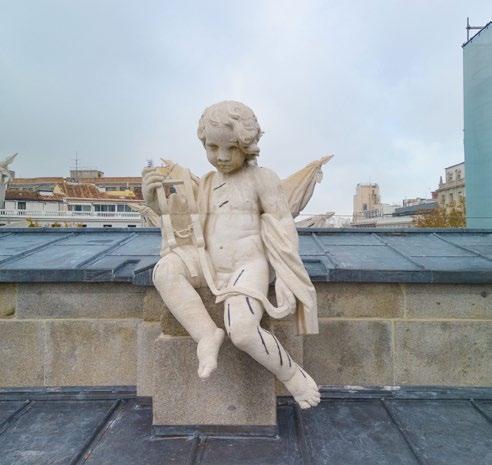
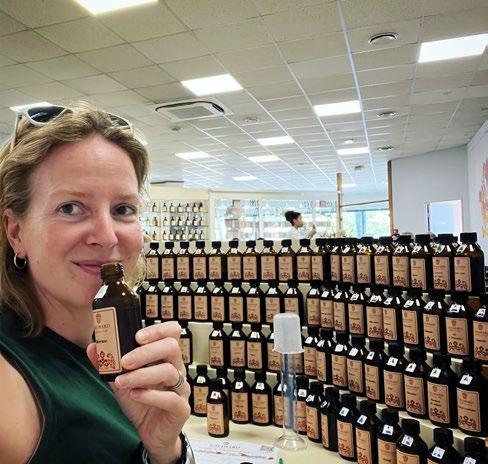
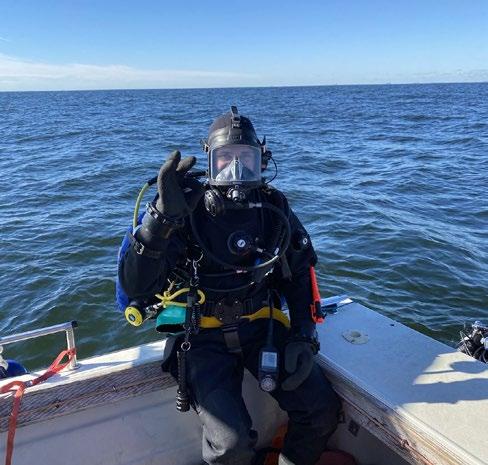
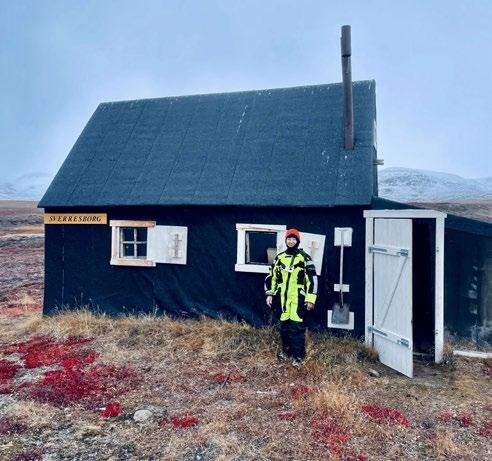
We are proud to present the recipients of the 2025 European Heritage Awards / Europa Nostra Awards – a celebration of heritage excellence across our continent.
It is hard to overstate the achievements of this year’s laureates . These inspiring initiatives show how cultural heritage can be a powerful force for positive change in Europe – strengthening communities, supporting well-being, sparking creativity, and contributing to economic resilience. Cultural heritage connects people across generations and borders. It brings Europe’s citizens closer together, united in our rich diversity. It adds beauty and meaning to our daily lives and helps shape a more sustainable, inclusive and beautiful future.
Behind each of these winners are people. Dedicated professionals who have honed their craft over many years – architects, artists, carpenters, conservators, curators, educators, engineers – and, just as crucially, countless civil society organisations and thousands of volunteers who contribute their time, energy, and passion to heritage. Without their commitment, cultural heritage could not have the impact it does today.
Together, they bring forgotten stories to light, restore meaning to neglected places, and open new spaces for dialogue and engagement . In doing so, they are laying the foundations for the next generation of Europeans to carry this legacy forward.
Many of this year’s winners exemplify the values of the New European Bauhaus and are closely aligned with the ambitions of the European Green Deal. Their work also offers valuable insights to inform the forthcoming Culture Compass for Europe, the EU’s new strategic framework highlighting the role of culture and heritage in shaping Europe’s future and enriching the lives of its citizens.
Furthermore, they reflect the vision of the European Heritage Hub, a project funded by the EU and implemented under the lead of Europa Nostra in partnership with 20 key organisations. The Hub connects heritage actors across Europe to support the transition to a more sustainable, digital and inclusive society. The 2025 laure-
ates are showing what this transition ought to look like in practice –from restoring historic sites and monuments using eco-conscious methods to building bridges between communities through shared cultural narratives.
A common thread among this year’s winners is the power of partnerships – often spanning communities, cultures, and borders. Cross-border cooperation, as seen in projects like the European Heritage Volunteers Programme coordinated from Germany with partners in 14 countries, enables people to learn from one another, exchange tools and expertise, and draw inspiration from diverse perspectives. These collaborations embody the spirit of shared heritage and collective progress.
Many laureates also put young people at the heart of their mission. The All Together Festival in Ukraine created a space where children could engage with culture, creativity and each other. The imaginative exhibition Hedgehog’s Home – Inventing a Better World from Serbia uses storytelling to reflect on ideas of home, community, and diversity. Others focused on involving underrepresented groups and opening heritage up to new audiences.
Three of this year’s winners come from countries that are not associated to the Creative Europe Programme of the European Union, namely the Holy See, Moldova, and the United Kingdom. These winners receive the Europa Nostra Awards, funded exclusively by Europa Nostra, which reflect the organisation’s commitment to recognising heritage excellence in all countries of the Council of Europe.
We warmly invite you to explore the inspiring stories of this year’s winners. Their achievements show what is possible when talented and committed individuals come together with purpose. In their work, we find not only excellence, but also a powerful source of inspiration – a reminder that heritage is not static. It evolves, adapts, and innovates with each generation, continuously renewing its relevance. At a time when unity and shared values matter more than ever, heritage remains a force that brings people together –across Europe and beyond.

Glenn Micallef European Commissioner for Intergenerational Fairness, Youth, Culture and Sport
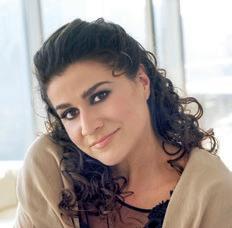
President of Europa Nostra
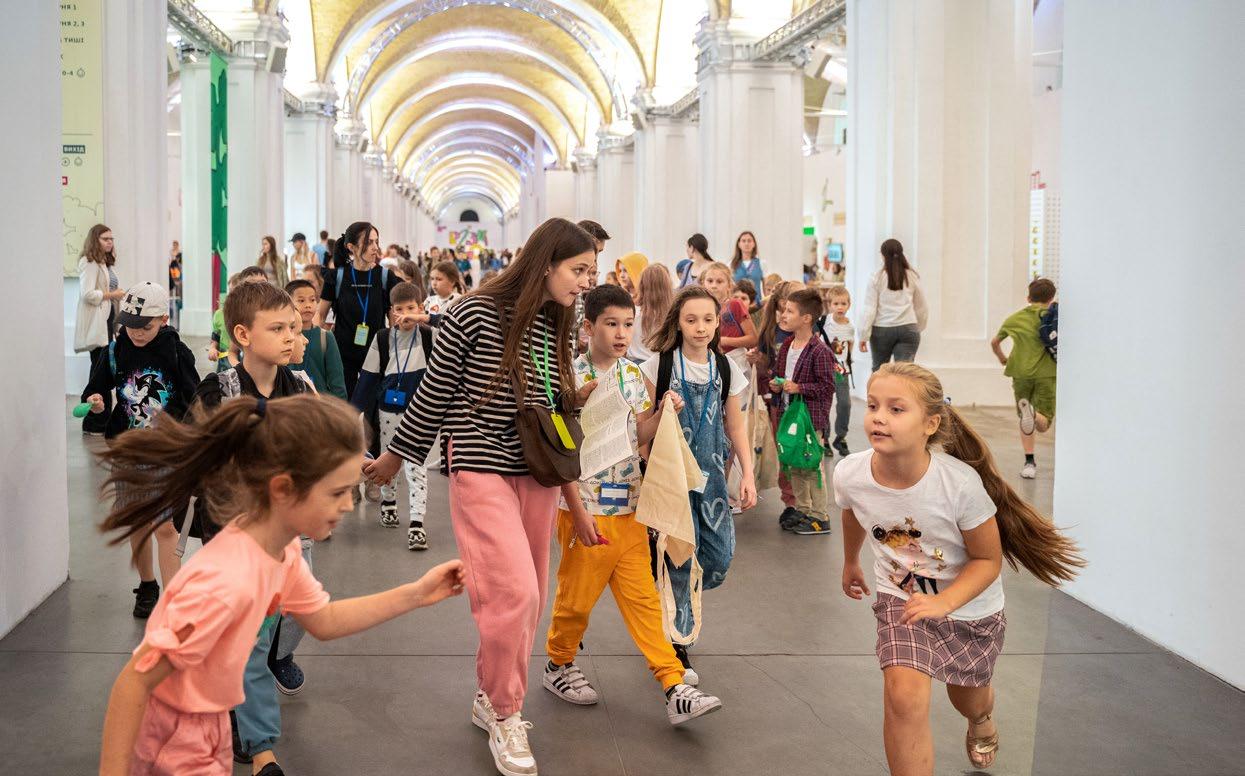
In 2025, a total of 251 eligible applications were submitted to the European Heritage Awards / Europa Nostra Awards by organisations and individuals from more than 41 countries across Europe.
Conservation & Adaptive Reuse Projects, including the restoration of buildings and their adaptation to new uses; new buildings in historic settings; urban and rural landscape rehabilitation; the conservation and interpretation of archaeological sites; and the care for collections of works of art and objects.
Research Projects in the field of cultural heritage, including studies, digitisation projects, and/or scientific publications which lead to tangible effects for the safeguarding and enhancement of cultural heritage and/or improve the access, enjoyment, and understanding of heritage assets by communities.
Education, Training & Skills Initiatives in the field of tangible and/or intangible cultural heritage that foster knowledge transfer, capacity-building, and/or enhance traditional or new skills and crafts related to heritage.
Each year, the Awards are presented to outstanding achievements of European significance in the following categories:
This year, the European Heritage Awards / Europa Nostra Awards honoured 30 remarkable achievements from 24 countries.
All entries were evaluated by the Selection Committees (see page 72) — one per category — who shortlisted a total of 60 entries. The shortlisted entries were then assessed in situ, whenever possible, by independent assessors (see page 75). The Heritage Awards Jury (see page 72), composed of the Jury Chair, along with the Chairs and Vice Chairs of the five selection committees, then
Citizens’ Engagement & Awareness-raising Initiatives in the field of tangible and/or intangible cultural heritage which foster social cohesion, inclusion, multicultural dialogue and understanding; nurture a sense of place and belonging; celebrate diversity and multiple identities; and stimulate citizens’ engagement, ownership, and civic responsibility.
Heritage Champions, celebrating influential and inspiring individuals or organisations whose exemplary actions demonstrate an exceptional level of dedication, impact, and civic engagement in the safeguarding and enhancement of cultural heritage
Europa Nostra Awards (see page 63)
chose the 30 winners from among the shortlisted projects. The Selection Committees and the Heritage Awards Jury are composed of experts from across Europe.
Each laureate receives a certificate and a bronze wall plaque to be fixed in a visible location related to their initiative. The winners of the Grand Prix and of the Public Choice Award — chosen from among the winners — each receive a monetary award of €10,000.
Conservation & Adaptive Reuse projects
Research projects
Education, Training & Skills
Citizens’ Engagement & Awareness-raising
Heritage Champions
The medieval parish Church of St. Mauritius in Spitz an der Donau, perched high above the Danube river, is an iconic landmark within the Wachau UNESCO World Heritage landscape. Its vibrant, polychrome-tiled tower roof is not only visually striking but also historically significant, particularly following the surprising discovery that the roof, long thought to date from the 19th century, in fact originates from around 1505. This makes it Austria’s only fully preserved late medieval example of this distinctive roofing style. Following severe storm damage in 2020, an extensive restoration project was launched to secure this fragile cultural heritage.
The interdisciplinary team led by the Austrian Federal Monuments Authority adopted a carefully planned multi-stage approach that combined advanced scientific research with traditional conservation techniques. These included deformation mapping, photogrammetry, dendrochronology, building archaeology, mineralogical analysis, and archival studies. The research revealed invaluable insights into original construction methods and symbolism, such as the floral meadow motif symbolising the Kingdom of Heaven and the imperial coat of arms of Emperor Maximilian I. A detailed tile book documented the condition and position of all 8,000 roof tiles, significantly aiding knowledge transfer.
The restoration prioritised minimal intervention, preserving 80% of the original roof tiles in situ . Approximately 2,000 replacement tiles were crafted using authentic medieval methods by skilled ceramists to match the originals. Modern, invisible ventilation systems were discreetly integrated to improve structural longevity while safeguarding the building’s historic fabric.
The main funding partners of the project included the Austrian Federal Monuments Authority, the Austrian Federal Ministry for Housing, Arts, Culture, Media and Sport, the Office of the Lower Austrian Provincial Government, the Diocese of St. Pölten, the Parish of Spitz, the Market Town of Spitz, and contributions from local associations and private donors.
Volunteers played a crucial role by cleaning tiles, organising events, and raising funds through campaigns such as a “brick donation”
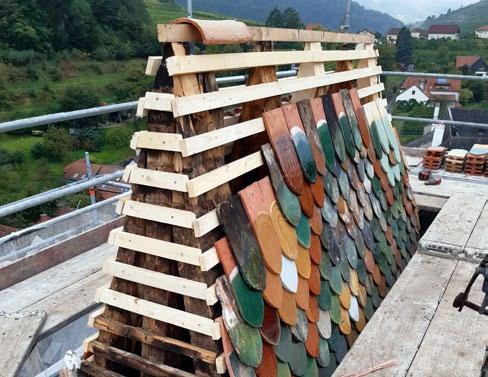
initiative. Public engagement activities — including symposiums, guided tours, and educational outreach — strengthened local pride and raised awareness of cultural values. Accessibility and outreach to non-traditional audiences were also prioritised.
This restoration project offers a valuable model for heritage conservation, showcasing how interdisciplinary expertise and craftsmanship can combine with community involvement. Beyond safeguarding architectural history, the project strengthened the church as a vibrant centre of identity and sustainable tourism within the World Heritage region.
“This project exemplifies a successful combination of professional expertise and local engagement. The restoration was carried out to a high technical standard while actively involving the local community, resulting in a process that was both inclusive and conservation-driven,” the Awards’ Jury commented.
“The restoration of the roof tiles was based on meticulous research and documentation, treating them as an artistic component of a building ,” the Jury added.
The restoration of the vibrant, polychrome-tiled medieval roof of St. Mauritius’ Church secured Austria’s only surviving late medieval roof of its kind. Traditional craftsmanship, advanced research, and careful conservation further helped to reconnect the community with its heritage and revitalise regional identity.
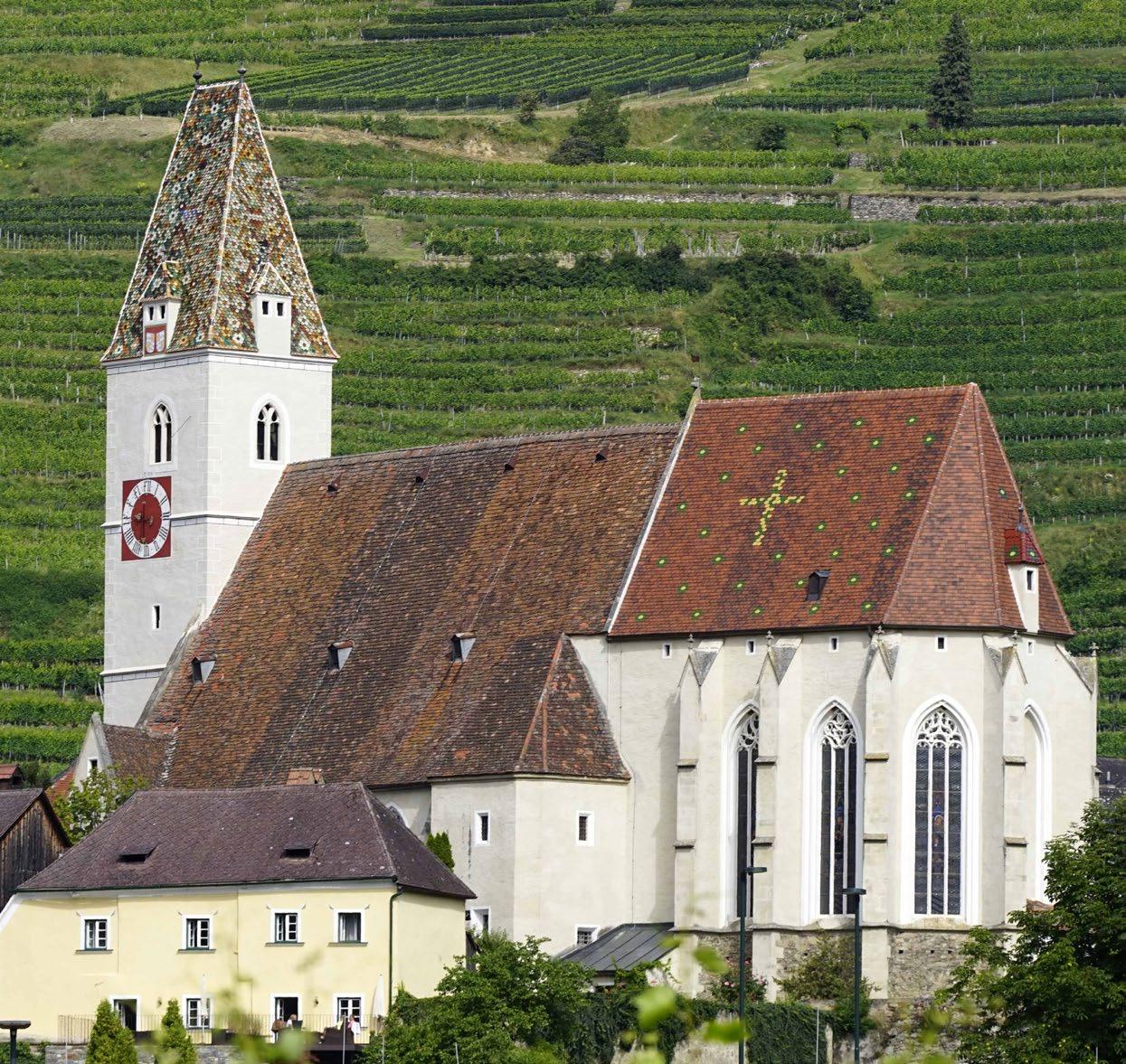
Antwerp City Hall, completed in 1565, is one of Northern Europe’s earliest Renaissance civic buildings. Part of the UNESCO-listed Belfries of Belgium and France, it remains the administrative and political heart of the city. The recent restoration, led by the City of Antwerp with HUB and Origin Architecture & Engineering, preserved this core function while addressing urgent structural and technical issues accumulated over decades.
The project adopted a practical and historically informed strategy, grounded in extensive research, including dendrochronology, material testing, and 3D laser scanning. It responded to functional, sustainability and heritage challenges through a comprehensive design process. The building embarked on an extensive restoration journey from 2018 to 2022. The building’s most ceremonial floor (“Schoon Verdiep”) was meticulously restored, including its ornate chandeliers, decorative mantelpieces, gold-leather wall coverings, and mural paintings, using traditional crafts and reversible conservation techniques.
The intervention balanced continuity with innovation. Historic gateways were reopened, and the main entrance was repositioned to face the Grote Markt, reinforcing the civic identity of the building. The third floor and attic, previously underused, now host modern offices, supported by discreet steel-framed floors and energy-efficient systems. The central stairwell was crowned with a new glass dome, bringing daylight to the core and providing a platform for contemporary art. Two glass rooftop pavilions bring natural light into the upper levels while respecting the building’s structural rhythm.
Sustainability was a guiding principle throughout the project. The project achieved a BREEAM Very Good — a rare feat for a historic monument — thanks to dynamic energy simulations, sustainable water management, reversible HVAC systems, and biodiversity measures, including insect habitats, and green roofs. Materials were reused where possible, and systems were designed for future adaptability, including connection to a local district heating network.
The restoration was financed through a carefully managed €29 million budget, with approximately 60% of construction costs
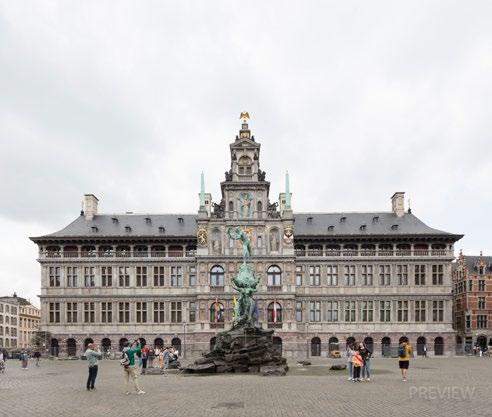
subsidised by the Flemish Agency for Immovable Heritage. Despite COVID-related delays, the project remained on track thanks to a feasibility study that informed every phase, from concept to execution.
Since reopening in June 2022, Antwerp City Hall has welcomed over 65,000 visitors through guided tours, exhibitions, and public events. The building is now fully accessible and serves as both a working city hall and a vibrant civic space. By maintaining its historic function while embracing contemporary needs, the project offers a model for the adaptive reuse of major heritage buildings across Europe.
“This exemplary restoration of a 16th-century city hall balanced structural conservation and energy efficiency, while preserving the building’s original civic function. The project, executed by a highly professional team, underlines the responsibility of local authorities in safeguarding and communicating Europe’s shared cultural legacy,” the Awards’ Jury stated.
The restoration of Antwerp City Hall reinforces its function as the political and administrative heart of the city. Through a holistic and technically sophisticated approach, the project enhances public access and sustainability while safeguarding a UNESCO-listed Renaissance landmark for future generations.
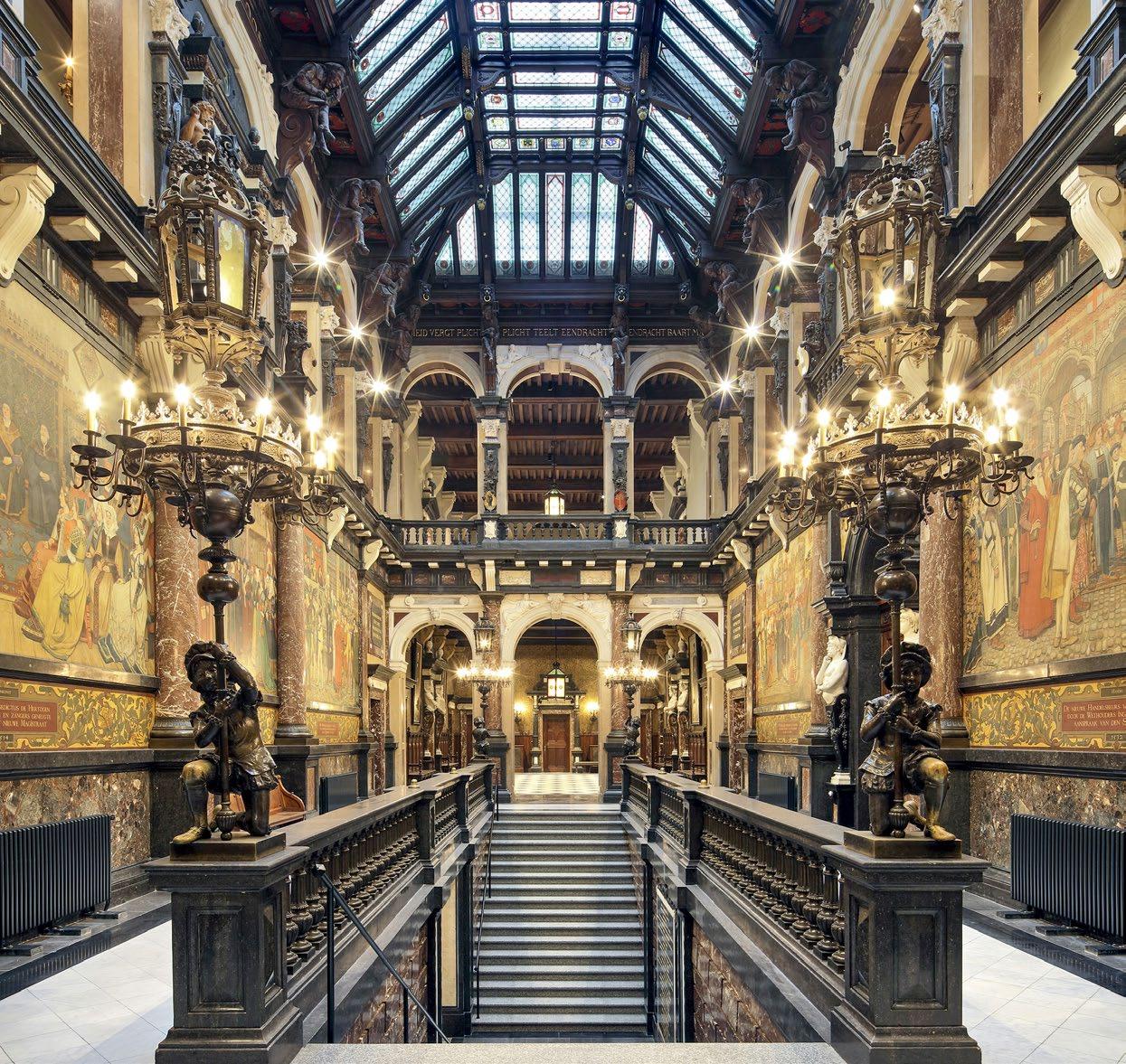
Hôtel Solvay, located in the historic centre of Brussels, is one of the most celebrated works of Belgian Art Nouveau. Designed by the Belgian architect Victor Horta for the Solvay family and completed in 1903, the building has been listed as a UNESCO World Heritage Site since 2000.
More than 30 years after its last major intervention, the building showed signs of critical deterioration, particularly to the façade and roof, prompting urgent conservation action.
From 2022 to 2024, the project focused on the restoration of the Euville limestone, cast iron detailing, oak joinery, and stained glass. Structural and decorative ironwork was dismantled, treated with zinc protection, and reassembled with precise attention to original techniques. The signature three-dimensional balcony grille was restored piece by piece. The natural slate roof and two large skylights were entirely renovated to prevent water infiltration and improve insulation. A new climate control system, operated by a rooftop weather station, now regulates heat through automated skylight openings.
To guide key interventions, 3D modelling and structural analysis were used in specific areas, such as the bowed bay windows. All phases of the work were meticulously documented, creating a comprehensive technical archive for future maintenance and for other restorations of Art Nouveau buildings. Stratigraphic studies and material analyses also yielded new insights into Horta’s original design principles.
Originally a private residence, the building later housed the Valens fashion house before being granted museum status in 2021. Since then, it has welcomed over 100,000 visitors. As a cultural landmark in the heart of the city, Hôtel Solvay reinforces Brussels’ reputation as the birthplace of Art Nouveau.
The project mobilised a wide range of master artisans: stonemasons, metalworkers, joiners, slate roofers, and glassmakers. Apprentices took part throughout the project, acquiring hands-on experience and sharing insights during guided tours. The restoration was supported by 80% public funding from the Brussels-Capital
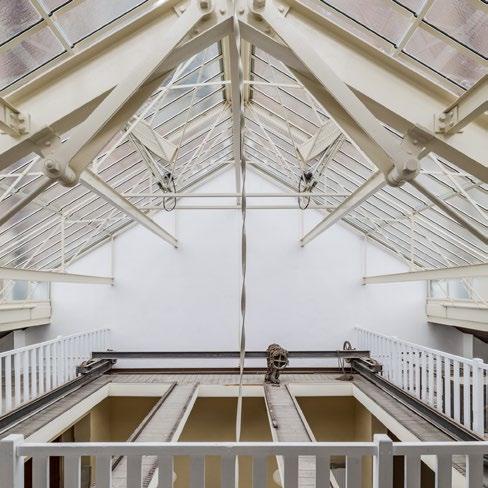
Region and 20% from the owner, Alexandre Wittamer, whose longterm commitment ensures public access and preservation.
Extensive outreach accompanied the works: public tours highlighted conservation techniques, students visited the building as part of their coursework, and progress was shared via social media. As such, the restoration of Hôtel Solvay sets a new standard for the safeguarding of Art Nouveau heritage in Europe.
“The restoration of Hôtel Solvay, a UNESCO-listed Art Nouveau landmark by Victor Horta, combines sensitive conservation with discreet modern upgrades ,” the Awards’ Jury highlighted.
“By organising public tours during the works, the project celebrated the craftsmanship involved and raised awareness of the value of architectural heritage,” the Jury added.
The restoration of Hôtel Solvay, an Art Nouveau landmark in Brussels by Victor Horta, addressed serious structural and waterproofing issues. Combining traditional craftsmanship with technical innovation, the project offers a compelling model for heritage conservation and sustainable maintenance in Europe.
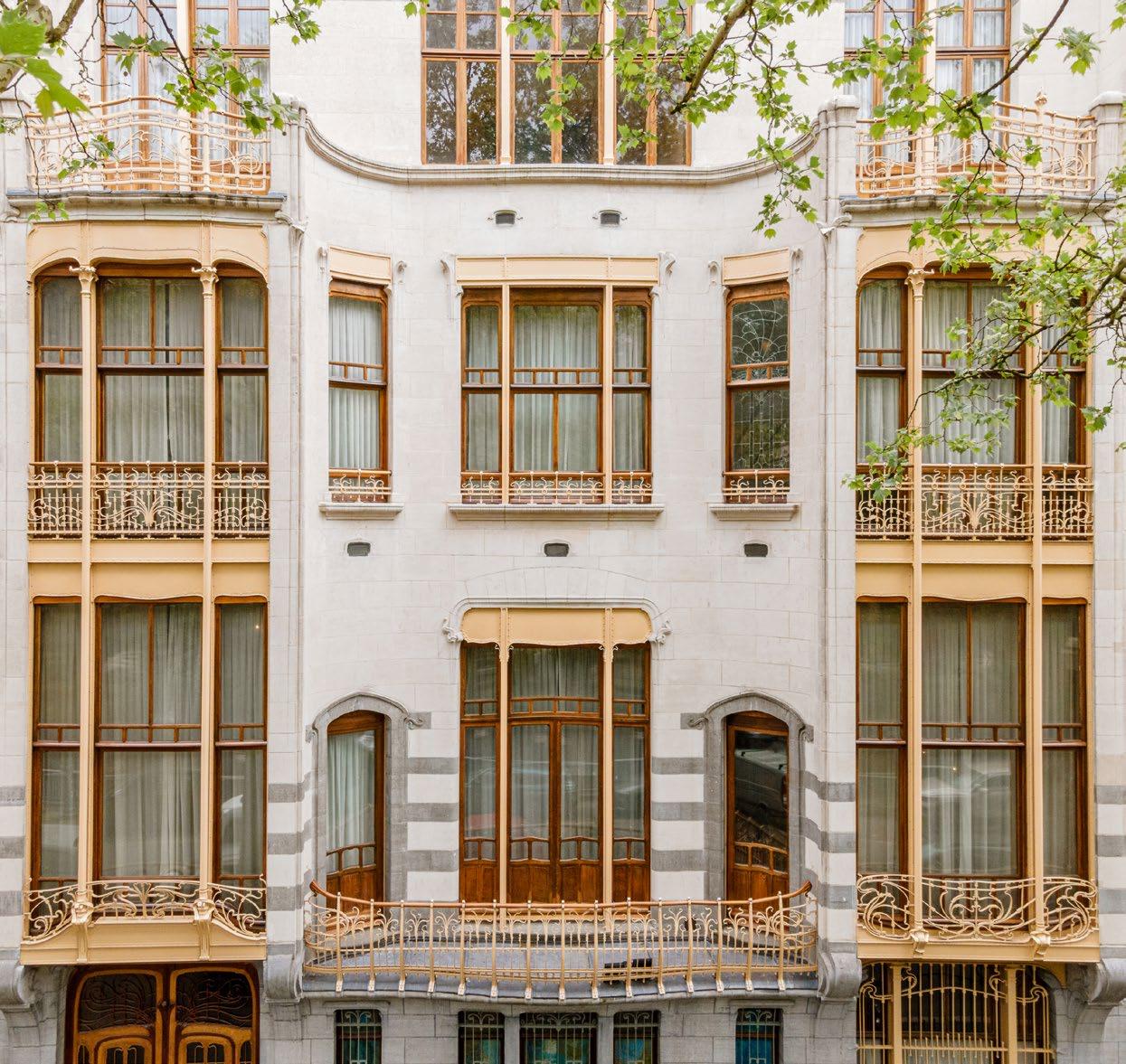
Located near the Buffer Zone that still divides Nicosia, the Old Municipal Market has been reborn as AGORA — a multifunctional civic hub combining heritage conservation, innovation, and inclusion. Designed in 1965 by architect Stavros Economou, the concrete modernist building originally housed a market on the ground floor and municipal offices above. After the city’s division in 1974, a section of the building was functioning as a neglected market while part of it was abandoned.
The recent restoration, led by architect George Tsaggarides for the Nicosia Municipality, was informed by extensive technical research and oral histories. In the absence of written records, interviews with original craftspersons and builders provided vital knowledge about materials and techniques. This was complemented by studies of post-war architecture in Cyprus and analysis of the reinforced concrete structure. The building was upgraded to meet current Eurocode standards for earthquake resistance, with a unified new foundation and discrete structural reinforcements preserving its fair-faced concrete surfaces and distinctive mosaic cladding.
With €5.5 million co-funding from the European Union and the Republic of Cyprus via the “THALIA 2021 — 2027” programme, the project represents a major investment in Nicosia’s historic centre. The restored building retains original architectural features while meeting the technical needs of its new occupant: CYENS Centre of Excellence, a research and innovation hub supported by local universities and international partners, such as UCL and the Max Planck Institute.
The AGORA hub now anchors the city’s emerging Creative Industries Quarter. It houses co-working spaces, labs, and cultural venues, and hosts events ranging from digital art festivals to inclusive skills training. Accessibility was a priority, with step-free routes, elevators, and digital infrastructure enabling full participation.
The project fosters civic renewal and social cohesion, notably through bicommunal partnerships with Turkish-Cypriot researchers and interns. CYENS engages with diverse audiences through youth programmes, digital literacy workshops, and community
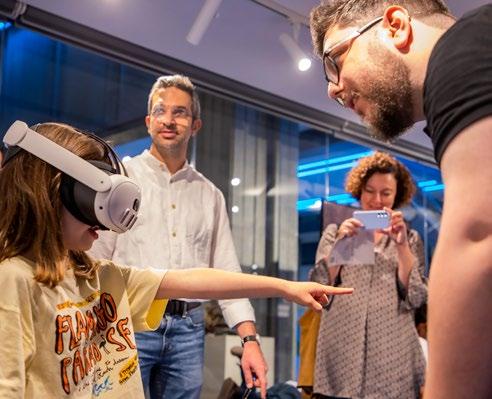
outreach, reaffirming the building’s legacy as a place of gathering and exchange.
Environmentally, the building integrated photovoltaic panels, daylighting strategies, and recycled materials, earning an Energy Performance Certificate A. Its reuse also avoids the emissions of demolition and new construction.
Located in a city still marked by division, AGORA now functions as a civic platform that connects research, tradition, and public life through the adaptive reuse of modernist heritage.
“This adaptive reuse project transformed a modernist-functionalist market located near the Buffer Zone of Nicosia into a centre of excellence, while preserving its original architectural character. Young professionals played a key role in the restoration ,” the Awards’ Jury remarked.
“The new AGORA hub has contributed to the revitalisation of a divided city by balancing historical preservation with economic and social sustainability ,” the Jury added.
This project revitalised the Nicosia Old Municipal Market, transforming a modernist 1960s landmark near the Buffer Zone into a centre for innovation and civic exchange. Earthquake-resistant and inclusively designed, the new AGORA hub supports urban regeneration and bicommunal cooperation in Cyprus.
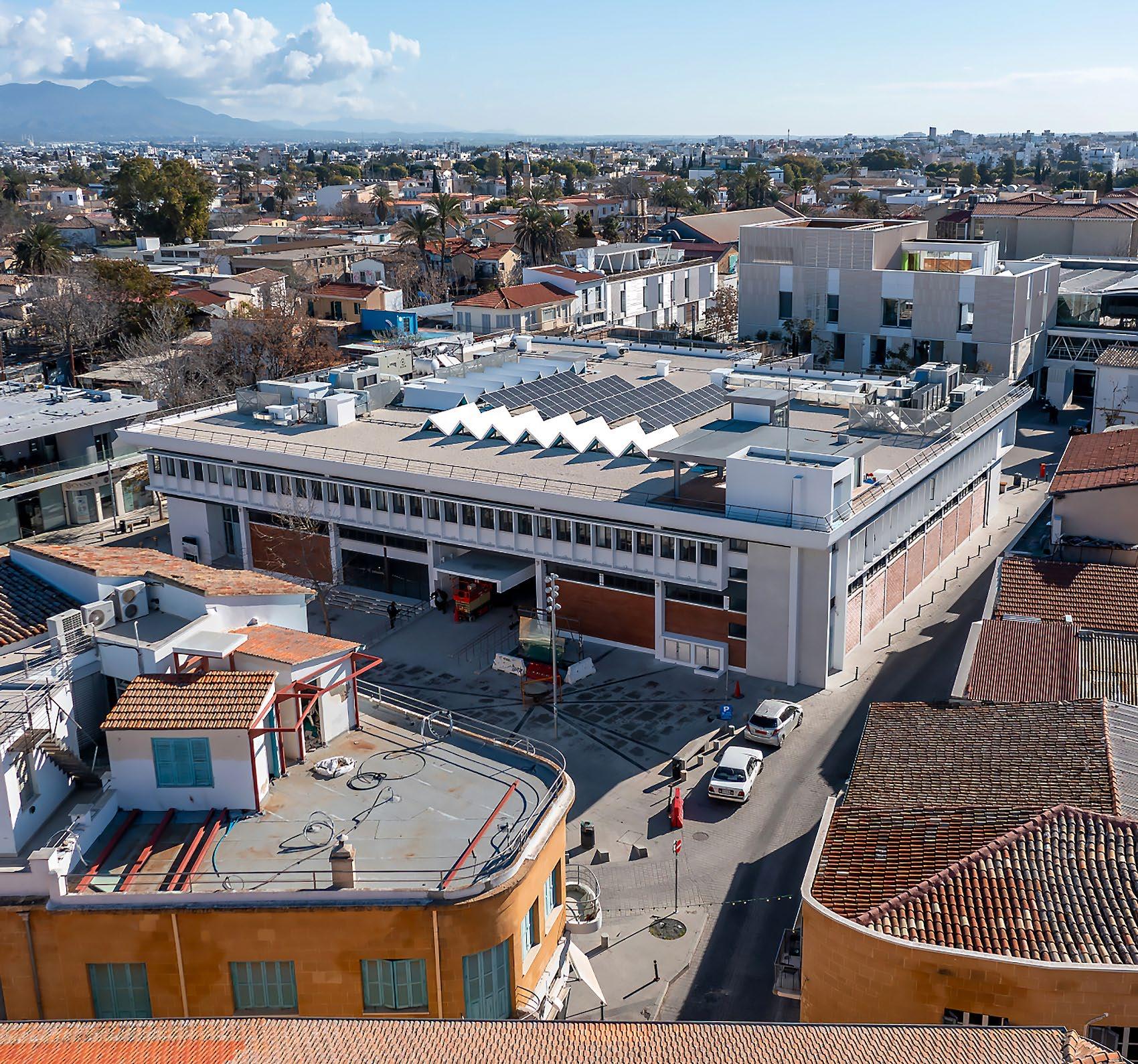
Kambones 1615 is a listed Venetian tower house located on the island of Naxos, Greece. In continuous use for over 500 years, the complex includes a residence, an olive press, farm structures and a rare double-aisled chapel representing both Orthodox and Catholic traditions. It was designated a protected monument in 1975. Set within a 200-hectare estate, the site is deeply embedded in its natural surroundings, where ancient olive trees coexist with nesting birds of prey.
The privately funded restoration began in 2012, when the tower house faced imminent collapse due to structural faults caused by water infiltration. Over ten years, the owners worked with local craftsmen — or took on tasks themselves where skills had been lost — to restore walls, floors, plaster, woodwork and roof, using traditional materials and methods. All interventions were guided by traditional knowledge and overseen by architects in consultation with the local heritage authority. Modern adaptations, such as solar-powered water heating and discreet plumbing, were added without altering the building’s historic character. Repairs also extended to furniture, copperware and textiles, reviving domestic heritage alongside architecture.
Agricultural elements were stabilised and adapted for public use. The olive press now hosts small-scale concerts, music lessons, tastings and gatherings. Cultural activities include embroidery workshops, literary evenings, and seasonal events led by local residents. The chapel remains in use for baptisms, weddings and private prayer, open to all 24/7. Historic a cappella compositions are being prepared for performances in the chapel, linking built and intangible heritage.
Environmental sustainability is central to Kambones. The house operates without heating or air conditioning, relying on passive cooling through thick stone walls and traditional insulation made with local materials such as lime plaster and seaweed. Wastewater is treated in a three-chamber septic system and reused for irrigation; all other waste is either composted or recycled. Solar panels
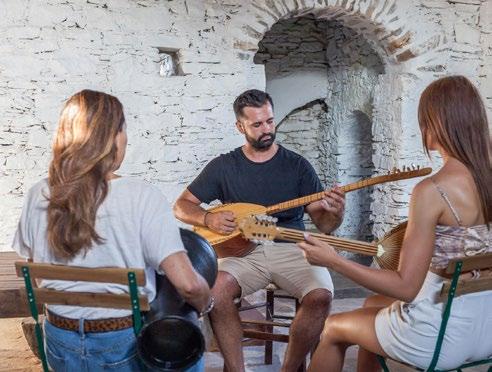
heat water, LED lighting is used throughout, and drought-resistant herbs and plants are cultivated in the garden.
Kambones is a living house, not a museum. It offers modest guest stays and community events to support maintenance while resisting the pressures of mass tourism and real estate development. Its holistic approach has sparked local interest in vernacular restoration, generating pride, sustainable economic development, and renewed knowledge transfer between generations. It offers a transferable example of sustainable conservation rooted in place, practice, and lived tradition.
“The restoration of this vernacular tower house on a Cycladic island preserved the building’s vernacular authenticity using traditional materials and techniques ,” the Awards’ Jury commented.
“Through low-impact interventions and traditional methods, the project achieved modern comfort while contributing to climate resilience. Kambones is a model for sustainable rural conservation in Europe,” the Jury added.
Kambones 1615, a privately restored Venetian tower house on the island of Naxos, preserves five centuries of architectural, agricultural and cultural heritage. Using traditional techniques, the project blends sustainability, craft and community to create a model for heritage-led rural regeneration in Europe.
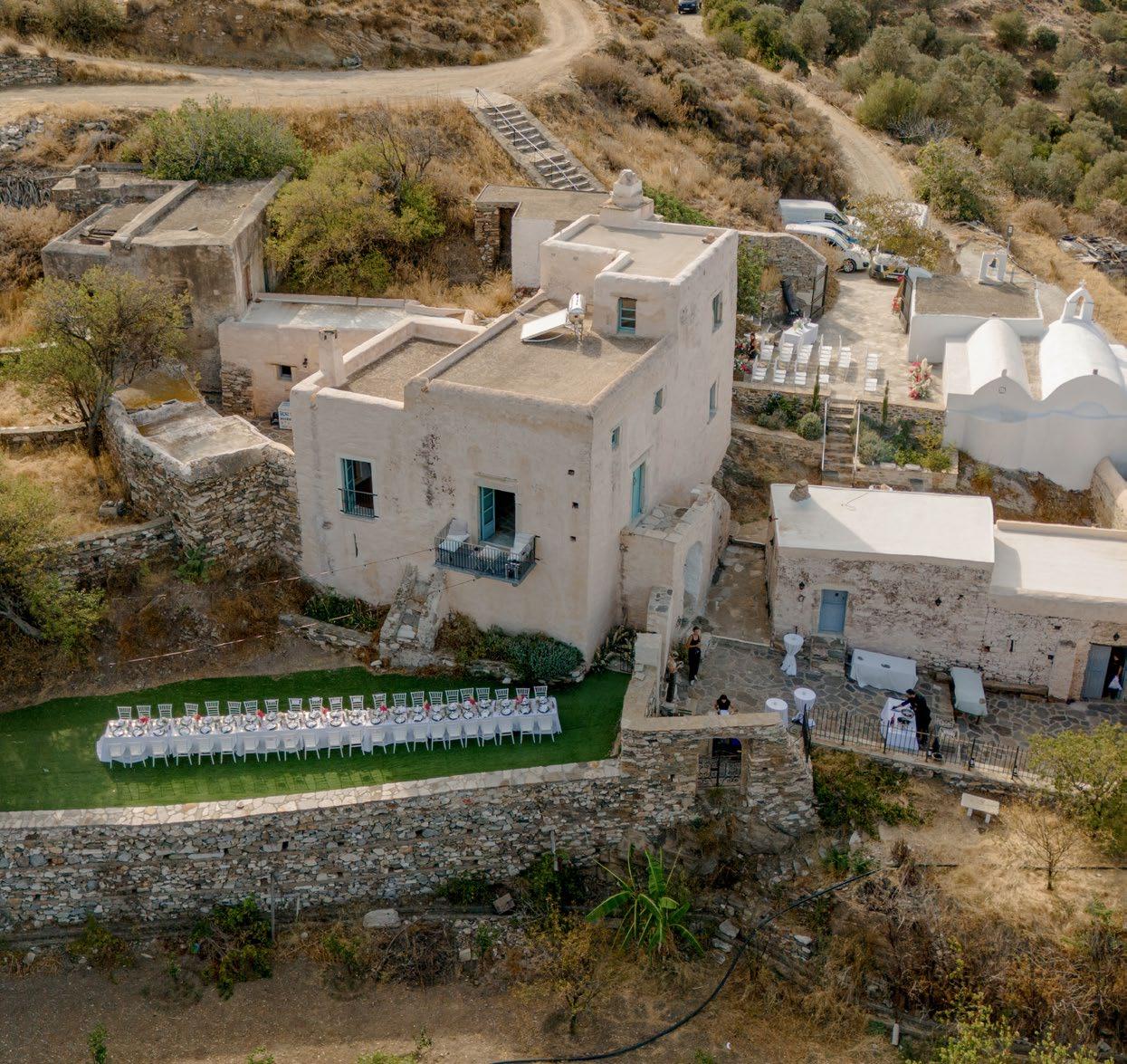
The EC1 complex in Łódź began as the city’s first power plant in 1907. After its closure in 2000, the site deteriorated until the City Council launched the EC1 Łódź — City of Culture initiative in 2008, aiming to create a multidisciplinary centre for science, technology, art, and film. The revitalisation, implemented in stages from 2010 to 2023, has established EC1 as a major cultural and educational institution at the heart of one of Poland’s most dynamic urban regeneration zones. The transformation was supported by six projects co-financed by the European Union, demonstrating a successful integration of heritage preservation, urban development, and EU funding mechanisms.
EC1, a member of the European Route of Industrial Heritage, features several listed buildings. The project preserved key architectural and technical elements of the historic buildings while adapting them for contemporary use. Art Nouveau and industrial-style facades were restored, early 20th-century machinery was conserved, and interior features, such as woodwork, tiles and metalwork, were retained or replicated using traditional techniques. The restoration involved a wide range of skilled crafts and was paired with sustainability measures, including green roofs, water retention systems, and LED lighting. The result is a coherent ensemble that bridges industrial heritage with contemporary functions.
Today, EC1 encompasses the Centre for Science and Technology, a Planetarium, the Centre for Comics and Interactive Narratives, the cinema of the National Centre for Film Culture, and a hands-on education zone for children. These attractions are complemented by public green space and a year-round cultural programme. In 2024, EC1 marked its two-millionth ticket sold. That year alone, over 200 public events were organised and more than 50 educational programmes were offered to schools. The site includes 40,000m² of usable space and hosts at least eight permanent and several temporary exhibitions annually.
EC1 also accommodates creative industry offices, non-profit organisations and community initiatives, fostering collaboration across culture, education and enterprise. Partnerships with local
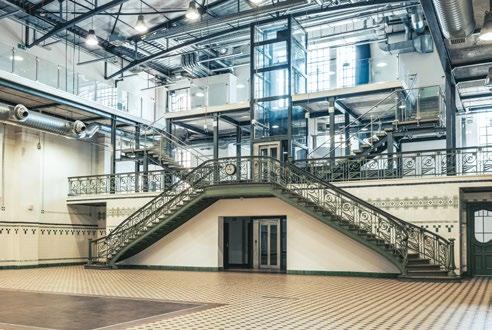
universities, including the University of Łódź, further strengthen its interdisciplinary role.
Accessibility and inclusion are central to EC1’s mission. The complex is fully accessible to people with disabilities, supported by architectural, digital and content-related solutions. It also participates in employment and training initiatives to improve diversity in the cultural sector. Ongoing dialogue with residents ensures that local needs are reflected in programme development.
The rehabilitation and adaptive reuse of EC1 could serve as a reference for similar initiatives. Its broad impact spans urban revitalisation, heritage conservation, cultural innovation and environmental sustainability, positioning it among the most ambitious adaptive reuse projects in Central Europe.
“This large-scale adaptive reuse project transformed a former power plant into a dynamic cultural and educational centre, with strong community involvement in shaping its new functions ,” the Awards’ Jury stated.
“As part of a broader urban regeneration effort, the EC1 Łódź — City of Culture project demonstrates how heritage reuse can drive transformation in post-industrial cities ,” the Jury emphasised.
EC1 in Łódź, Poland, was transformed from a historic power plant into a vibrant cultural and educational complex. With museums, science centres, cinemas and inclusive public space, EC1 offers a powerful model for revitalising industrial heritage across Europe.
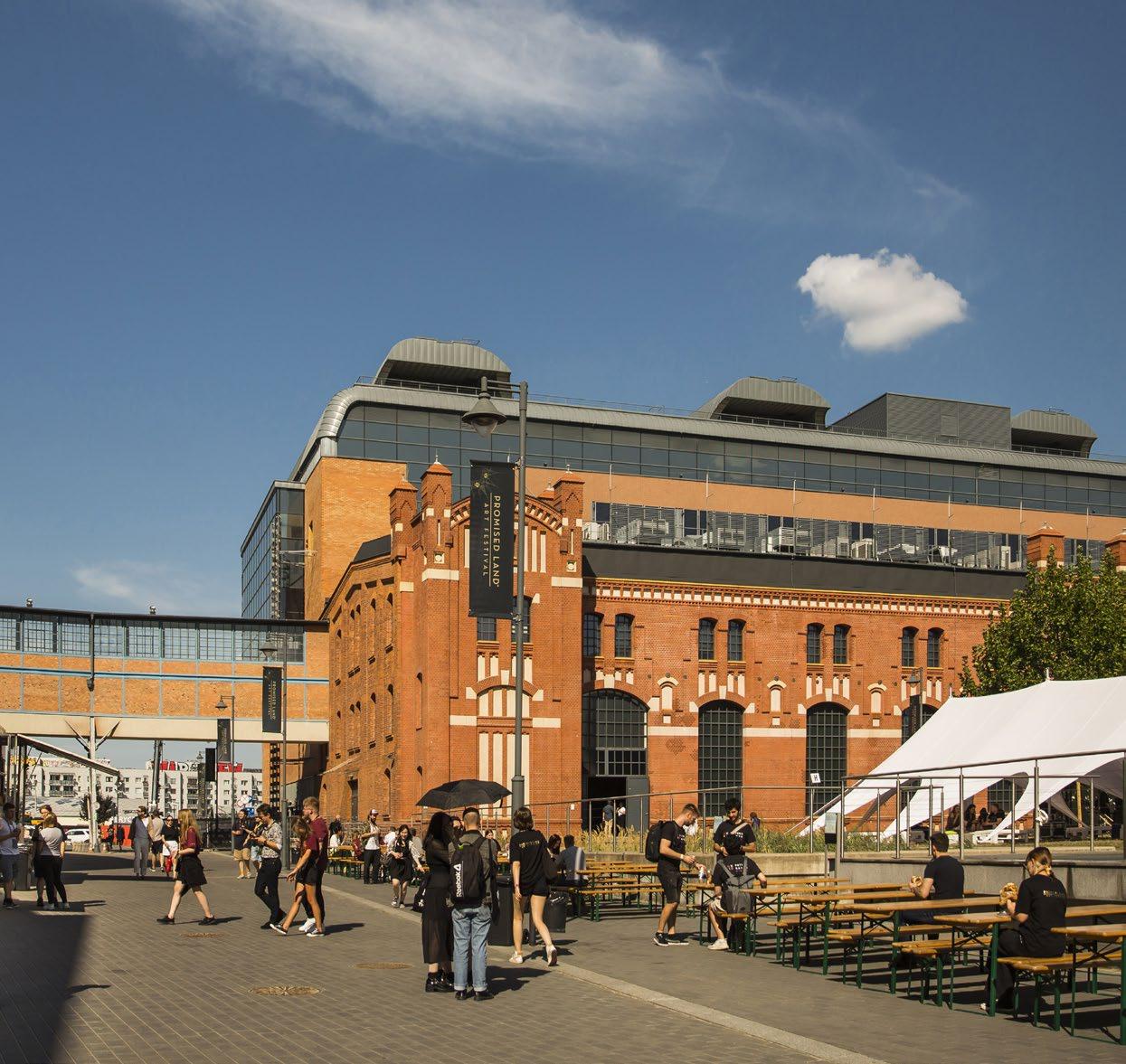
The Peniche Fortress, whose construction began in the 16th century to defend the Portuguese coast, later served as the country’s most notorious political prison during Europe’s longest-lasting dictatorship (1926-1974). After the Revolution of 25 April 1974, the site gradually fell into disrepair. By the early 2010s, many buildings were severely degraded and nearly abandoned. In 2016, a public outcry over a proposed hotel conversion sparked a civic movement that successfully pushed for the site's preservation as a place of collective memory.
The result is the National Museum of Resistance and Freedom, inaugurated on 27 April 2024 to mark the 50th anniversary of Portugal’s Carnation Revolution and the release of political prisoners. The project, led by architect João Barros Matos, was co-funded by the Portuguese state and the European Union through the Portugal 2020 programme. From 2019 to 2024, the fortress was carefully conserved, restructured, and adapted to its new role. The project embraces the site’s layered identity, recognising its ‘fortress time’, ‘prison time’ and ‘museum time’ as integral to its historical significance.
Archaeological and geotechnical surveys informed structural reinforcements and conservation strategies, while former political prisoners contributed to the content development. A new museological path connects previously isolated courtyards and buildings, centred around the cistern courtyard, which has been reactivated as a freely accessible public space. The moat and surrounding rock formations were restored to underline the symbolic isolation of the site. The interior was repaired or remade using traditional materials and techniques, including lime plaster, marmorite coatings, and semi-industrial tiles.
The intervention respected the authenticity of the prison architecture while ensuring full accessibility for all visitors. Original prison cells and furnishings were retained to convey the lived experience of confinement. At the same time, new functions — including a café, bookshop, and education spaces — have integrated the museum into the civic and cultural life of the coastal town of Peniche. The museum has quickly become the city's main cultural
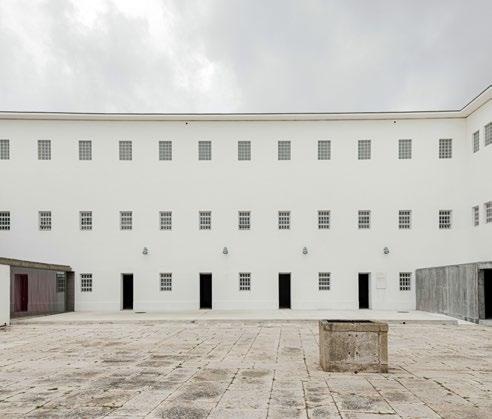
hub, drawing close to 150,000 visitors in its first twelve months — more than twelve times the local population. School groups and younger audiences are particularly prominent, highlighting the site’s educational potential.
Dedicated to the memory of those who resisted the authoritarian regime, the museum addresses wider European themes of human rights, democratic values, and the fight against authoritarianism. It offers a reference point for similar institutions across Europe and contributes to a growing international network of memory sites.
“Community engagement played a decisive role in preserving and transforming this former political prison into a national museum of deep symbolic value, following a civic campaign that prevented commercial development ,” the Awards’ Jury highlighted.
“The restoration of the Fortress of Peniche respected the architectural integrity of both the fortification and the prison, while introducing new museum elements with sensitivity and restraint ,” the Jury noted.
The Peniche Fortress, one of the main political prisons during the dictatorship in Portugal, now hosts the National Museum of Resistance and Freedom. Through careful adaptation and civic engagement, the site fully engages visitors with the values of liberty and democracy.
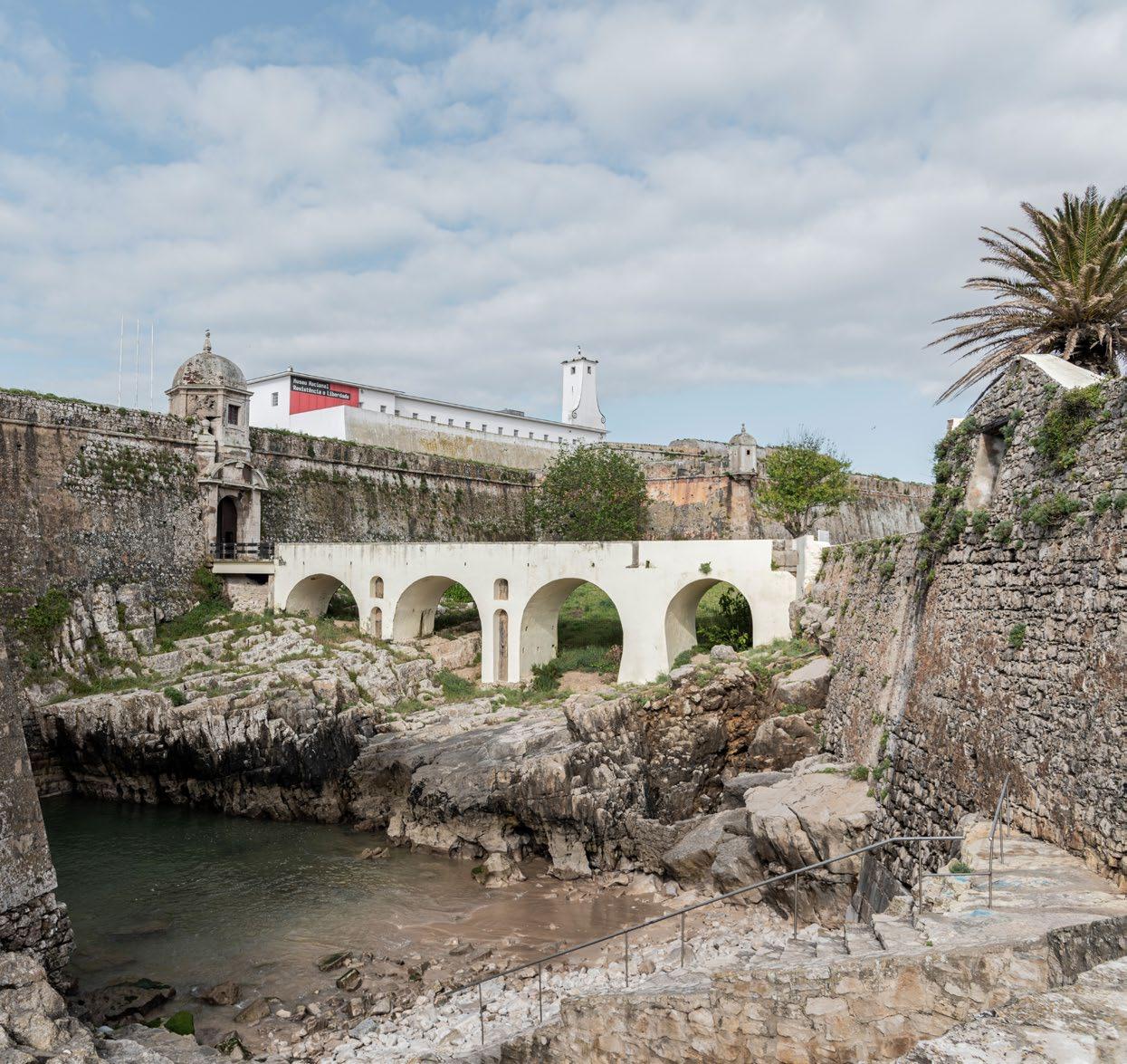
The Puerta de Alcalá, one of Madrid’s most iconic monuments, has undergone its most ambitious restoration to date. Erected between 1769 and 1779 by architect Francesco Sabatini for King Charles III, the triumphal arch is a defining landmark in the heart of the Spanish capital. Today, it forms part of the “Paseo del Prado and Buen Retiro, Landscape of Arts and Sciences”, inscribed on the UNESCO World Heritage List in 2021.
In 2022, the Madrid City Council launched a comprehensive restoration based on international heritage standards. Fully funded by the municipality, the project followed a dual methodology that combined historical research and scientific diagnostics with traditional craftsmanship. More than 100 specialists, including conservators, engineers, blacksmiths, stonemasons and sculptors, collaborated to analyse and restore the monument. Using 3D laser scanning, structural modelling, ultrasonic testing and laboratory material analysis, the team identified vulnerabilities in the stonework and internal metal frameworks. These studies confirmed the original artisans’ technical sophistication and guided every intervention.
Hands-on restoration work was carried out with great precision. Granite and limestone surfaces were cleaned, stabilised and consolidated. Sculptural elements were secured with new wrought iron or brass fixings where needed, while stable historical fittings were retained. Missing details were recarved in natural stone from original quarries using traditional tools. Lime mortar grouting and manual carving techniques were employed throughout, closely following 18th-century construction methods. Where possible, original elements were preserved; replacements were introduced only when strictly necessary and were carefully matched to existing materials.
The restoration project of the Puerta de Alcalá included extensive outreach. A website documented the works, and over 12,000 people participated in “Open for Restoration” tours, climbing scaffolding to view the monument at close range. A dedicated campaign — “Conserving the Landscape. Enjoying the Light” — framed the project as part of Madrid’s commitment to safeguarding its World Heritage
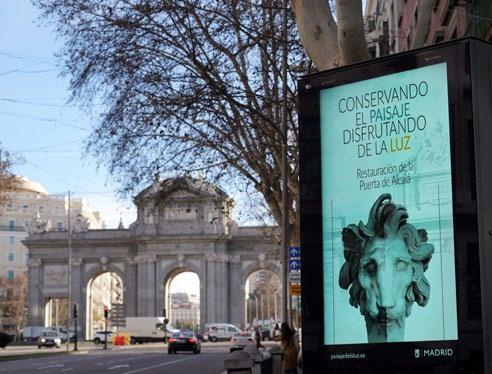
Sites. A technical conference was also held to share results and methodologies.
To protect the restored monument, a preventive conservation system was introduced. Environmental sensors now monitor vibration, humidity and structural behaviour. In an ecological measure, trained birds of prey were used to deter pigeons, avoiding the use of invasive anti-roosting devices.
This large-scale public restoration also resulted in the first complete digital record of the Puerta de Alcalá’s interior and structure. Together with the extensive documentation and outreach tools, this provides a long-term resource for conservation and research, and serves as a reference for similar projects across Europe.
“The restoration of the Puerta de Alcalá, a key urban landmark in Madrid, exemplified the integration of modern scientific methods with traditional craftsmanship,” the Jury commented.
“Extensive public engagement accompanied the works, including guided scaffold tours, multimedia outreach, and on-site interpretation ,” the Jury remarked.
The restoration of the Puerta de Alcalá — a symbol of Madrid and part of a UNESCO World Heritage Site — combined traditional craftsmanship and scientific analysis in a large-scale public project, setting new standards for transparency, research, and public engagement.
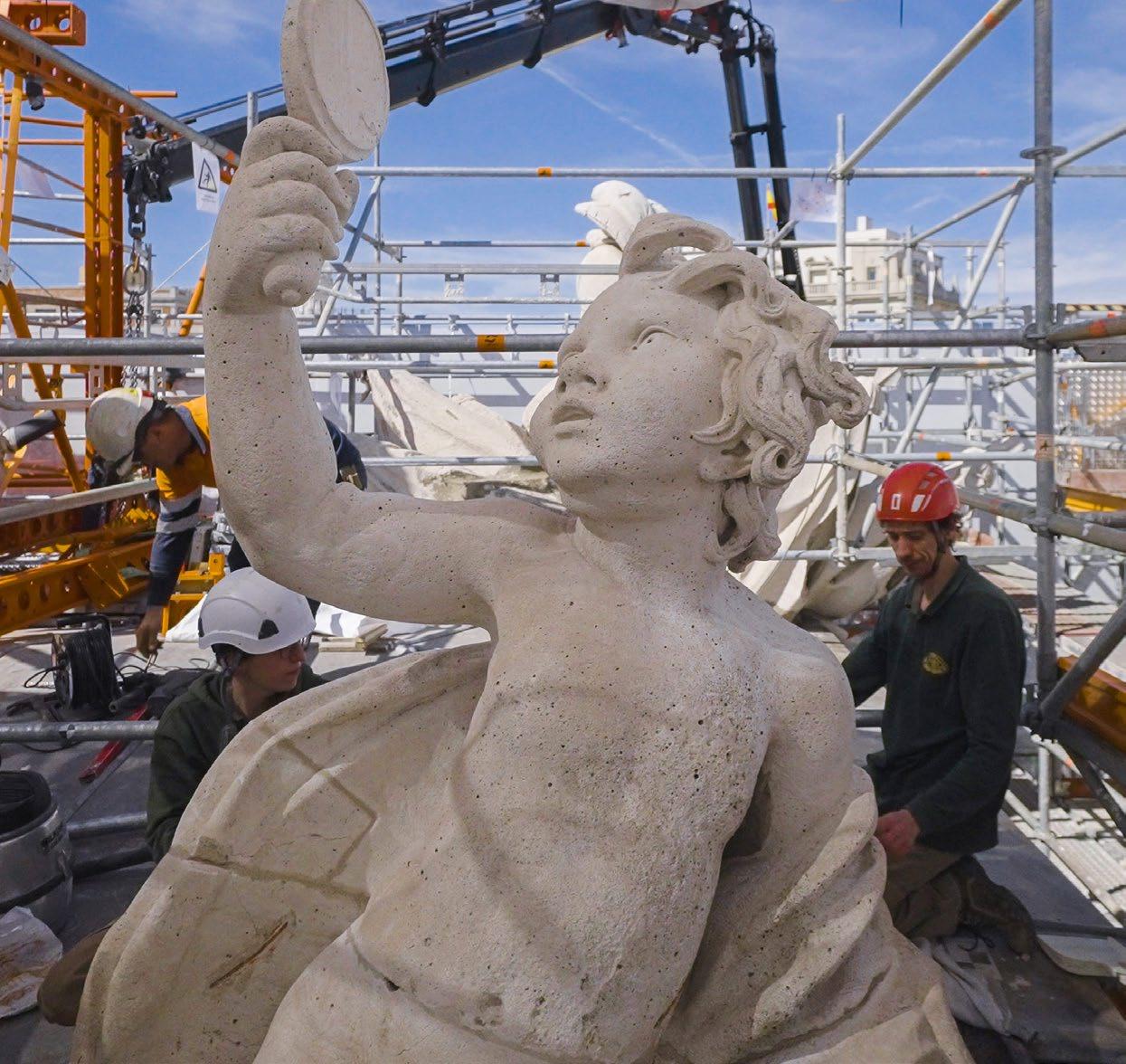
The Heritage Trees Project, led by the Province of East Flanders, addresses the risk of losing important old trees in Flanders and their unique qualities. Many of these “heritage trees” are centuries-old and have a special place in the landscape and local history. When such a tree is lost, its unique qualities, valuable genetic material and cultural meaning for the community disappear as well.
Since 2020, the project has developed a practical way to save these trees by taking cuttings or grafts and growing new trees with the same genetic characteristics. More than 115 unique trees have been selected, over 800 young trees have been raised, and more than 100 have already been planted in public spaces, either as a replacement for the original trees or at a new location. Every tree’s history and planting location have been recorded in a digital database, and a QR code on each new tree links back to its story and the broader project. The project is run out of the Heritage Site of Ename, where visitors can also learn about the project’s activities and results.
This project treats old trees not just as an important part of nature, but also as a key component of cultural heritage. It brings together tree planting experts, nature conservationists, local volunteers, and students to make sure the skills needed for growing and caring for these trees are passed on. Partners include research institutes, the Flemish Heritage Agency, and local craftsmen. The project is set up to be low-cost and easily transferable to other regions.
The community is closely involved. The Heritage Trees Project started in Zottegem, where local people helped plant new trees grown from a famous old “law-speaking tree” that was lost by a storm. Since then, the model has spread through workshops, school programmes, exhibitions, and planting events. Each new tree helps strengthen both nature and the community.
The project is known for its practical approach and focus on education. It supports climate action and biodiversity by planting native trees in towns and the countryside. Results are shared widely through talks, online platforms, and a forthcoming open-access

data system. Workshops and educational activities ensure that propagation techniques are passed on to new generations.
The Heritage Trees Project is now part of East-Flanders’ heritage policy, with stable funding and growing support from professionals and local citizens. Work continues to expand the network of heritage trees, share practical knowledge, and involve new communities.
“The project’s innovative approach to conserving the genetic and cultural legacy of heritage trees through community engagement is a valuable contribution to climate adaptation,” the Awards’ Jury stated.
“The great strength of the Heritage Trees Project is its citizen science model and the potential for replication across Europe,” the Jury highlighted.
This research project safeguards the genetic and cultural heritage of monumental trees in Flanders by growing their descendants. Through community involvement, education, and the practical implementation of conservation methods, it creates a transferable model linking heritage preservation, biodiversity, and climate action.
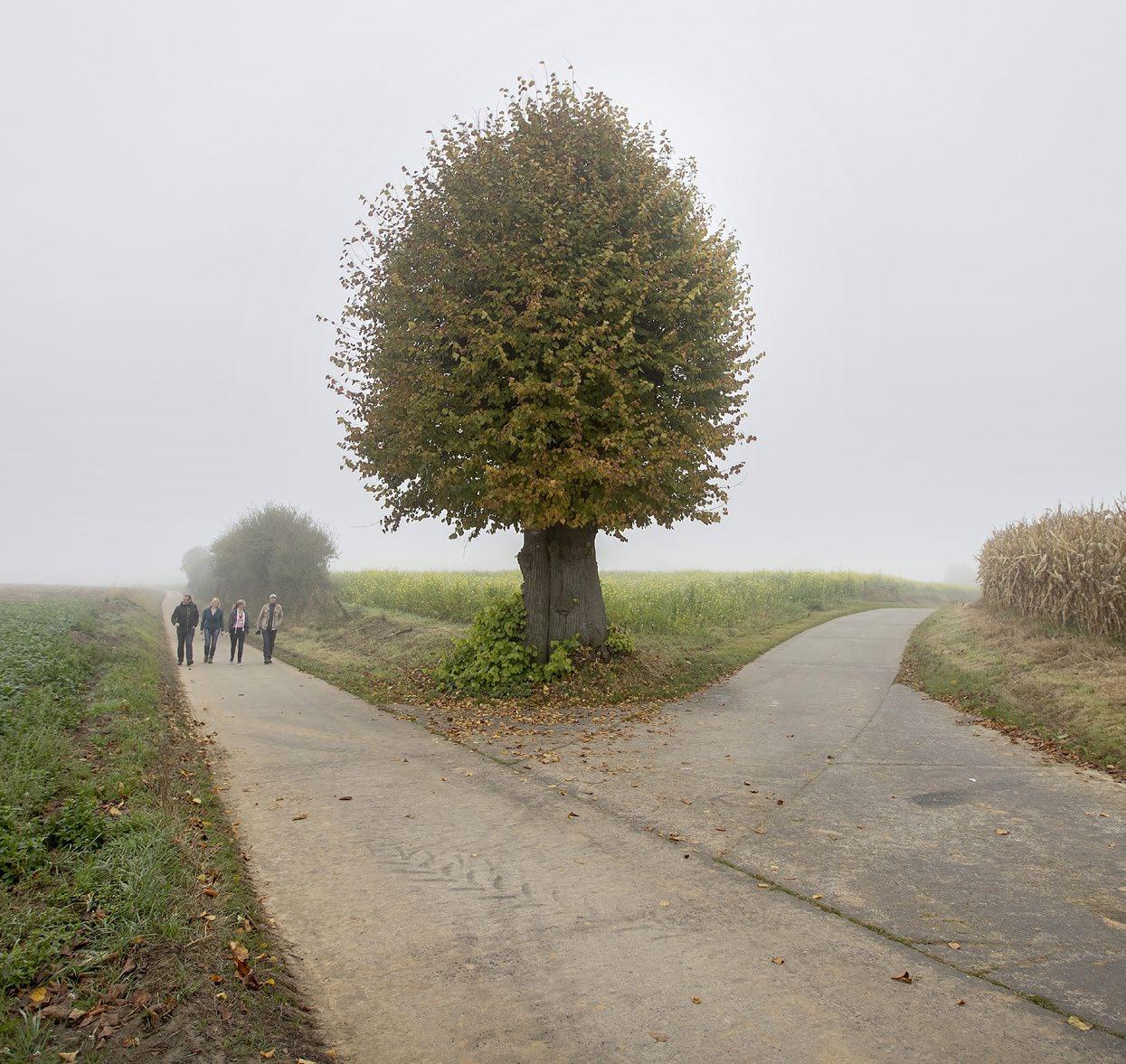
Odeuropa is the first major European research project dedicated to estimating the role of smell and olfactory practices in building cultural identity, collective memory, and enhancing the interpretation of both tangible and intangible heritage. The project’s ambition was to position smells and olfactory experiences as an essential part of heritage, tracing how they evoke emotions, bring history to life, and create multi-sensory connections to the past.
Coordinated by the Humanities Cluster of the Royal Netherlands Academy of Arts and Sciences (KNAW), and involving 35 researchers from six countries (France, Germany, Italy, the Netherlands, Slovenia and the United Kingdom), Odeuropa brought together expertise in history, heritage science, computer vision, semantic web, computational linguistics, museology, and digital humanities. Funded by the Horizon 2020 programme of the European Union (€2.8 million) and carried out between 2021 and 2023, the project developed standards, resources, and practical methods for museums and researchers to identify, document, and present smell in heritage contexts.
A core innovation of the project was the use of artificial intelligence (AI) to identify and analyse smell-related references in more than 43,000 historical images and 167,000 books, across six European languages and four centuries (from the period 1600-1920). This resulted in the European Olfactory Knowledge Graph with 2.5 million smell experiences, which now supports research in literature, food history, health, and community engagement. The project’s methodology included identifying olfactory motifs in visual art, as well as language and practice, making it possible for institutions to bring smell into their interpretation of existing museum collections.
The developed key digital resources include the Odeuropa Smell Explorer, the first database to search heritage by smell; the Encyclopedia of Smell History and Heritage; and an Olfactory Storytelling Toolkit for museum professionals developed with perfumers and heritage science experts to enable the presentation of historical scents in museum exhibitions. Best-practice guidelines, recommendations, and multilingual resources support the imple-
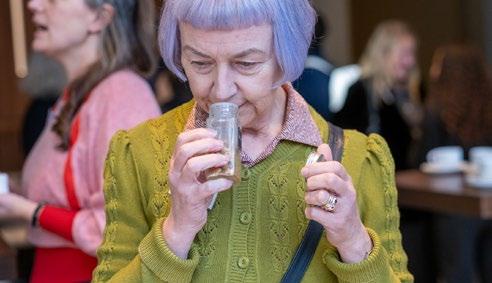
mentation of the project’s results at every stage, from research to education and public programming.
Odeuropa’s results and impact have been far-reaching, with practical applications adopted by museums and heritage sites across Europe and beyond. The project held a Smell Culture Fair in 2023 in Amsterdam, an international event uniting museums, perfumers, artists, scientists, and the public to explore multisensory storytelling. Smell-based storytelling inspired new exhibitions and learning tools, and policy guidance, and was featured at the EU Pavilion at Expo 2025 in Osaka, Japan. The project’s educational impact also included the training of more than 760 students and engagement with diverse communities — gathering ‘nose knowledge’ and local perspectives.
The AI and digital resources developed by the project remain available for researchers, museums, and policy-makers, supporting new collaborations and practical applications.
“Odeuropa’s multidisciplinary research into the new field of olfactory heritage fills a gap in scientific knowledge and standards and creates new tools and data to support future research into historical scent and heritage,” stated the Awards’ Jury.
“The project’s educational initiatives, including a PhD course and strong dissemination strategies, effectively support the integration of scent into museum practice,” added the Jury.
Odeuropa explored the significance of smell in European heritage from 1600-1920. Using AI, historical sources and collaborative tools, this EU-funded research developed new methods, vocabularies, and training resources—opening new avenues for interpretation, research, and experience.
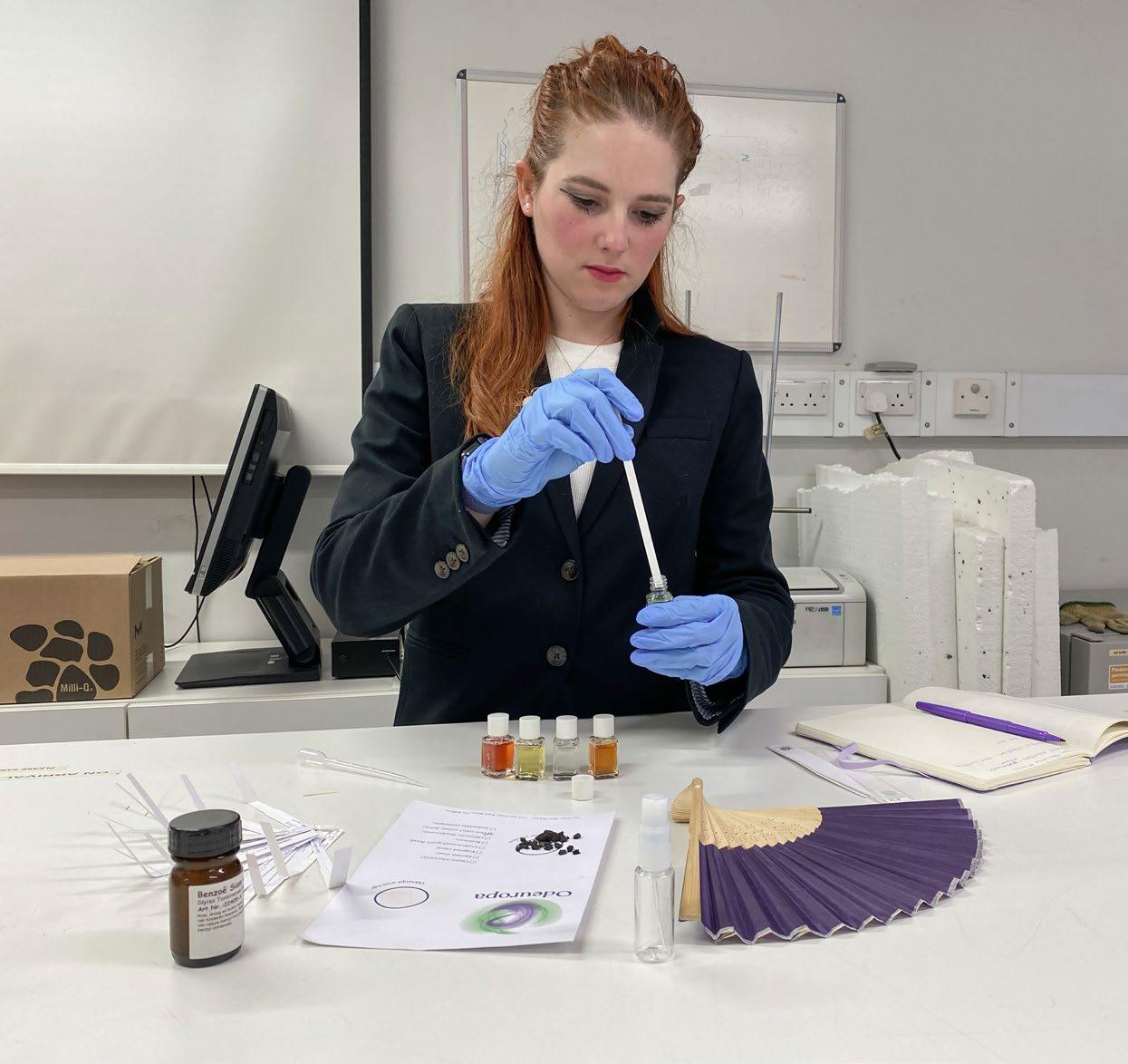
The Glacier Archaeology Programme, known as Secrets of the Ice, has pioneered glacial archaeology in Innlandet County, Norway, since 2006. As climate change accelerates the retreat of mountain ice, the programme has documented over 4,500 artefacts from more than 70 sites — accounting for over half of all glacial archaeological findings worldwide. These discoveries, ranging from 6,000-year-old hunting gear to rare prehistoric clothing and the world’s best-preserved ancient skis, have transformed our understanding of human activity in Europe’s high mountains.
The programme began after a local mountain walker discovered a well-preserved object emerging from the melting ice — an event that signalled the urgent need for systematic monitoring and illustrated the vital role of local communities in identifying new sites.
This internationally recognised initiative is led by the Innlandet County Municipality in partnership with the Museum of Cultural History at the University of Oslo and the Norwegian Mountain Museum in Lom. Climate Park 2469, developed with these partners, serves as a unique arena for outdoor learning and public engagement.
The Glacier Archaeology Programme is built on three main pillars: scientific research, outreach and education, alongside collection management and exhibition. The total programme budget exceeds €5.5 million, provided by a combination of public and private partners.
Fieldwork is shaped by a multidisciplinary methodology that combines remote sensing, satellite imagery, drone surveys, and high-precision GPS mapping with traditional archaeological techniques and the expertise of local teams. Each summer, research teams work within a short seasonal window, applying a strict environmental stewardship policy to ensure minimal impact. All artefacts are catalogued, conserved, and made accessible for research and public display. The collection is curated at the Museum of Cultural History in Oslo.
Secrets of the Ice has made significant scientific contributions, with 15 peer-reviewed papers and the development of internationally adopted methodologies for high-altitude archaeology. The project has fostered a broad international network.
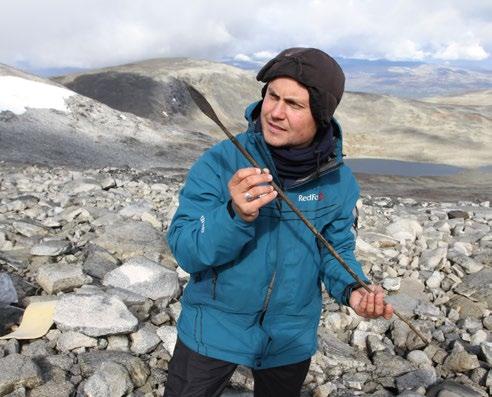
Public outreach is an integral part of the programme. Digital platforms, active social media engagement, and considerable coverage by international news media, such as the BBC and CNN, have ensured global interest. Physical outreach includes award-winning exhibitions at the Norwegian Mountain Museum, immersive virtual reality resources for schools, and outdoor education at Climate Park 2469, which welcomed 4,000 pupils in 2024 alone.
With funding secured until at least 2027, Secrets of the Ice will continue to advance scientific research, environmental stewardship, and public education in glacial archaeology.
“Secrets of the Ice is a pioneering example of how heritage research can respond to the effects of global warming, with a methodology that has international relevance for high-altitude and Nordic regions,” the Awards’ Jury said.
“The programme’s strong scientific output, its multidisciplinary approach, and the active engagement of young researchers are highly commendable,” the Jury added.
Secrets of the Ice is a groundbreaking research and outreach programme in Norway’s Innlandet County, documenting over 4,500 artefacts. Uniting scientific innovation, methodology, education, and public engagement, it highlights the impact of climate change on high-altitude archaeology.
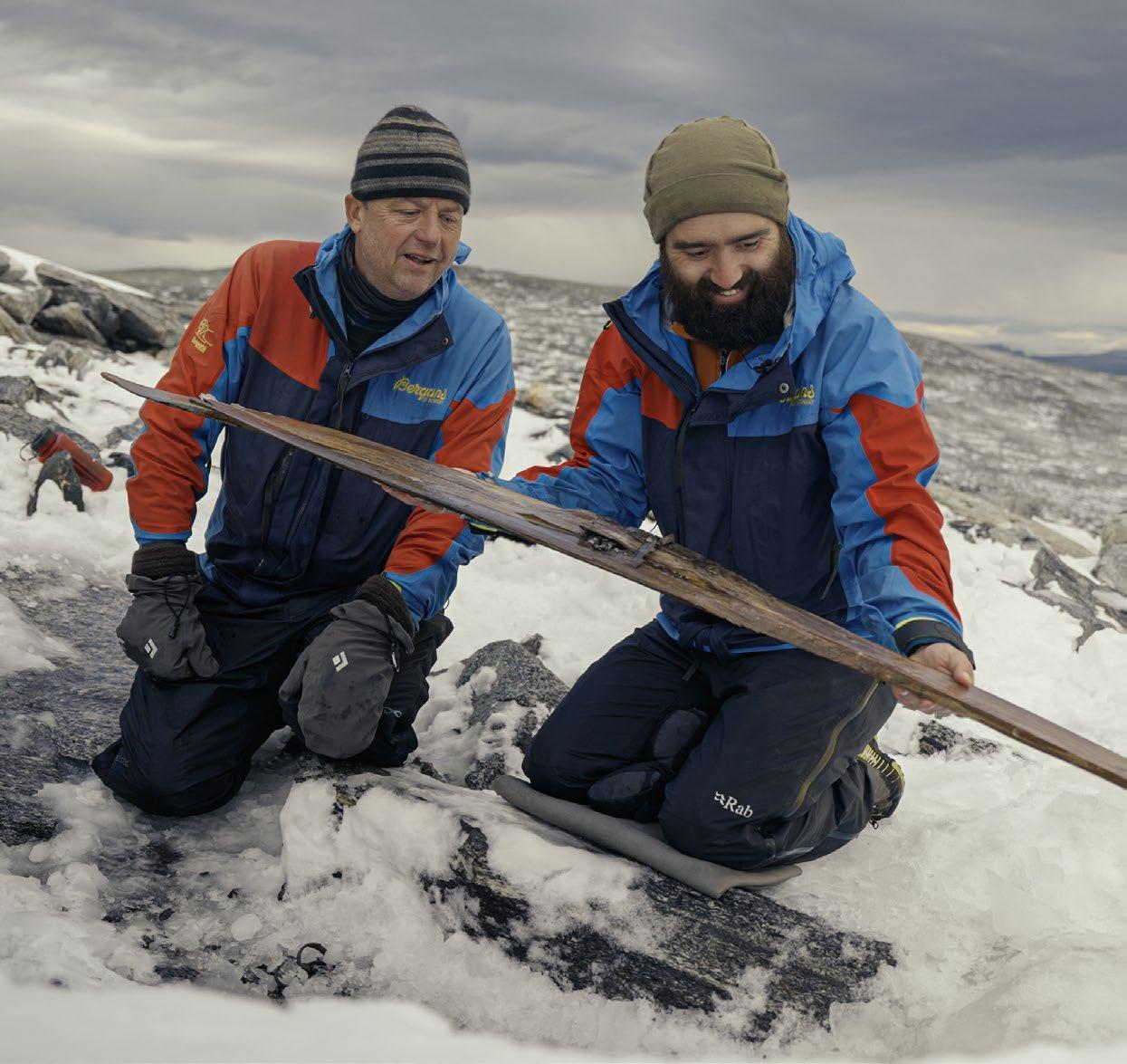
The IS-LE (Islamic Legacy) project was established to profoundly reshape how Islamic heritage in Europe and the Mediterranean is studied and understood. Being developed between 2019 to 2023 under the coordination of UNED in Madrid, Spain, this pan-European research initiative united over 200 researchers from 40 countries and more than 80 institutions. Its central ambition was to overcome traditional national and disciplinary boundaries by creating a stable, interdisciplinary research platform for the connected histories of Islamic and Christian worlds during the late medieval and early modern periods (1350-1750).
Prior to IS-LE, the study of Islamic heritage in Europe had been fragmented, often limited to separate regions such as Iberia or the Balkans. IS-LE introduced a transnational, multi-perspective model, integrating history, art history, literature, anthropology, and digital humanities. The project focused on shared legacies and mutual influences, situating Islamic heritage as an integral part of Europe’s pluralistic past.
Research was structured around three collaborative working groups: “The (Imaginary) Construction of the Other”, “Migration and Identity”, and “Beyond Borders”, each exploring a connected history rather than parallel national narratives.
The impact of IS-LE’s network extends well beyond academic research. Six major publications have reframed the interpretation of Islamic sites and objects in European and Mediterranean heritage. The project fostered research and documentation on many UNESCO World Heritage Sites, such as the Alhambra in Granada and the Mosque of Córdoba, both in Spain, and the Old Bridge of Mostar in Bosnia and Herzegovina, as well as significant museum collections.
IS-LE prioritised capacity building and educating the next generation of researchers. Three international training schools, held in Spain, Tunisia, and Sweden, and over 30 workshops provided emerging scholars with skills and networks for future interdisciplinary work. The project launched a Massive Open Online Course, TV documentaries, short films, and subtitled educational videos — resources designed to reach broad audiences
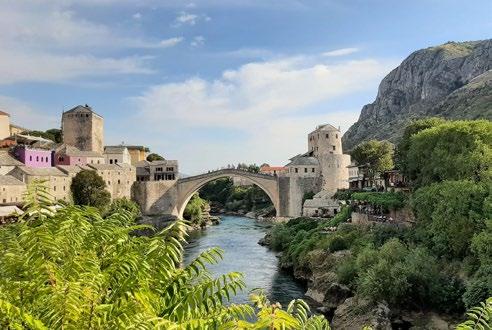
and promote nuanced understandings of Islamic heritage. All the educational materials are freely accessible.
The project introduced a sustainable, scalable network model. IS-LE grew from 59 to over 200 researchers and developed an active online presence with open-access resources, event documentation, and digital archives. Its methodology and network structure are transferable to other minority heritage fields and offer a blueprint for international, interdisciplinary collaboration.
IS-LE was funded by the COST, the European funding organisation for Cooperation in Science and Technology. The project’s tools, publications, and digital materials remain accessible after the project’s end, and continue to support teaching and research across Europe and the Mediterranean.
“IS-LE’s transnational and multidisciplinary approach contributes to a better understanding of Islamic heritage as part of European history and to contemporary discussions on shared values ,” the Awards’ Jury stated.
“The project’s open-access publications and efforts to bridge fragmented research traditions across countries are important achievements ,” the Jury added.
IS-LE, a transnational research project with over 80 institutional partners across 40 countries, reframed the study of Islamic heritage in Europe and the Mediterranean. Through collaborative research, training, and open resources, it connected fragmented research traditions and fostered new narratives.
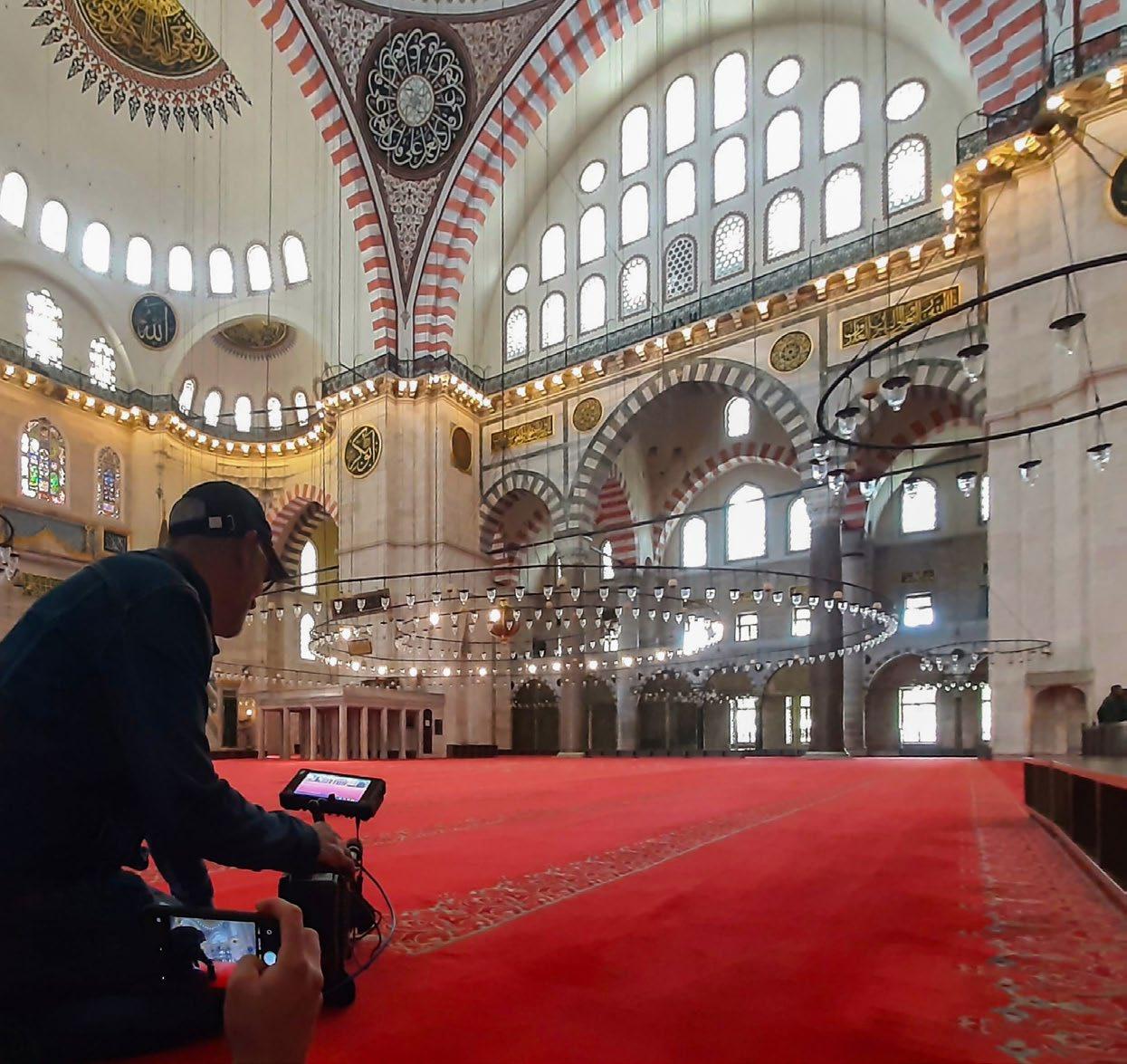
For many years, the European Heritage Volunteers have organised highly successful “Traditional Crafts in Practice” courses. Between 2022 and 2024, the NGO ran 22 courses in 14 European countries, including 11 EU member states and three candidate countries. These were delivered in 37 separate editions, welcoming more than 430 participants from 67 countries worldwide and involving over 40 technical instructors from 17 nations.
The courses have been hosted at a wide variety of heritage sites, ranging from UNESCO World Heritage Sites to industrial monuments, places of worship, and clusters of vernacular buildings. Many locations are selected for their neglected or marginal condition, with the aim of revitalising heritage assets often overlooked in mainstream conservation practice.
Each course runs for two weeks and follows an informal, practice-based structure. The approach focuses on international groups of students and emerging heritage professionals, typically composed of around 12 to 14 participants, to ensure intensive collaboration and individual mentoring. Instruction covers a broad spectrum of traditional crafts, including carpentry, masonry, mortars and plasters, fresco restoration, vernacular techniques, textile arts, and others. Sessions are jointly led by experienced heritage professionals, master craftspeople, and local practitioners facilitating direct intergenerational and intercultural exchange.
The courses are based on detailed research on local history, materials, and construction methods, with many activities taking place in public or semi-public spaces. This open format encourages participation by local communities, who are often involved as co-instructors, partners or audience members during public presentations and site events. Community engagement extends further, through partnerships with local authorities, activists and NGOs, who contribute to planning, dissemination and follow-up actions after the courses end. The programme’s grassroots approach and cost-effective structure enables broad participation and makes it possible to deliver recurring activities with limited resources, benefiting greatly from in-kind support and local collaboration.
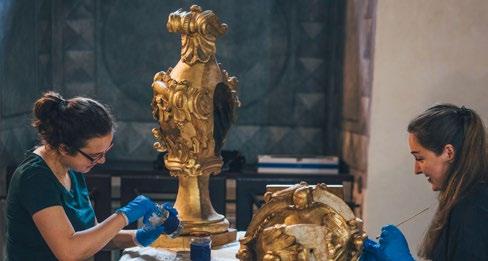
A specific aspect of the courses is the focus on the “living connection” between heritage sites, practitioners and communities. The training does not simply aim to preserve techniques for their own sake, but to demonstrate how traditional methods and materials can be adapted for use in contemporary conservation and building projects. The use of local, natural materials highlights the environmental sustainability of many traditional crafts, offering practical lessons for climate resilience and resource efficiency.
The recurring nature of the training programme, together with its transnational network, has created a robust framework for ongoing collaboration. A significant number of participants have returned to subsequent editions, and the network of instructors continues to expand, contributing to a wider European dialogue on practical restoration skills and community-based conservation. Further courses and new partnerships are planned for the coming years, supporting the ongoing transfer of knowledge and skills across generations and borders.
“The training programme’s highly international character, engaging motivated participants from across Europe and supported by recognised local experts, is a key strength ,” the Awards’ Jury stated.
“Regular courses validate and promote heritage and craft practices, while strong planning and management have built an extensive and resilient network of skilled participants ,” the Jury added.
The European Heritage Volunteers’ “Traditional Crafts in Practice” training courses, held at heritage sites across Europe, involve participants from around the world. The Programme bridges generations and cultures, revitalises neglected sites, and shows the value of hands-on, cost-effective, community-based heritage practice.
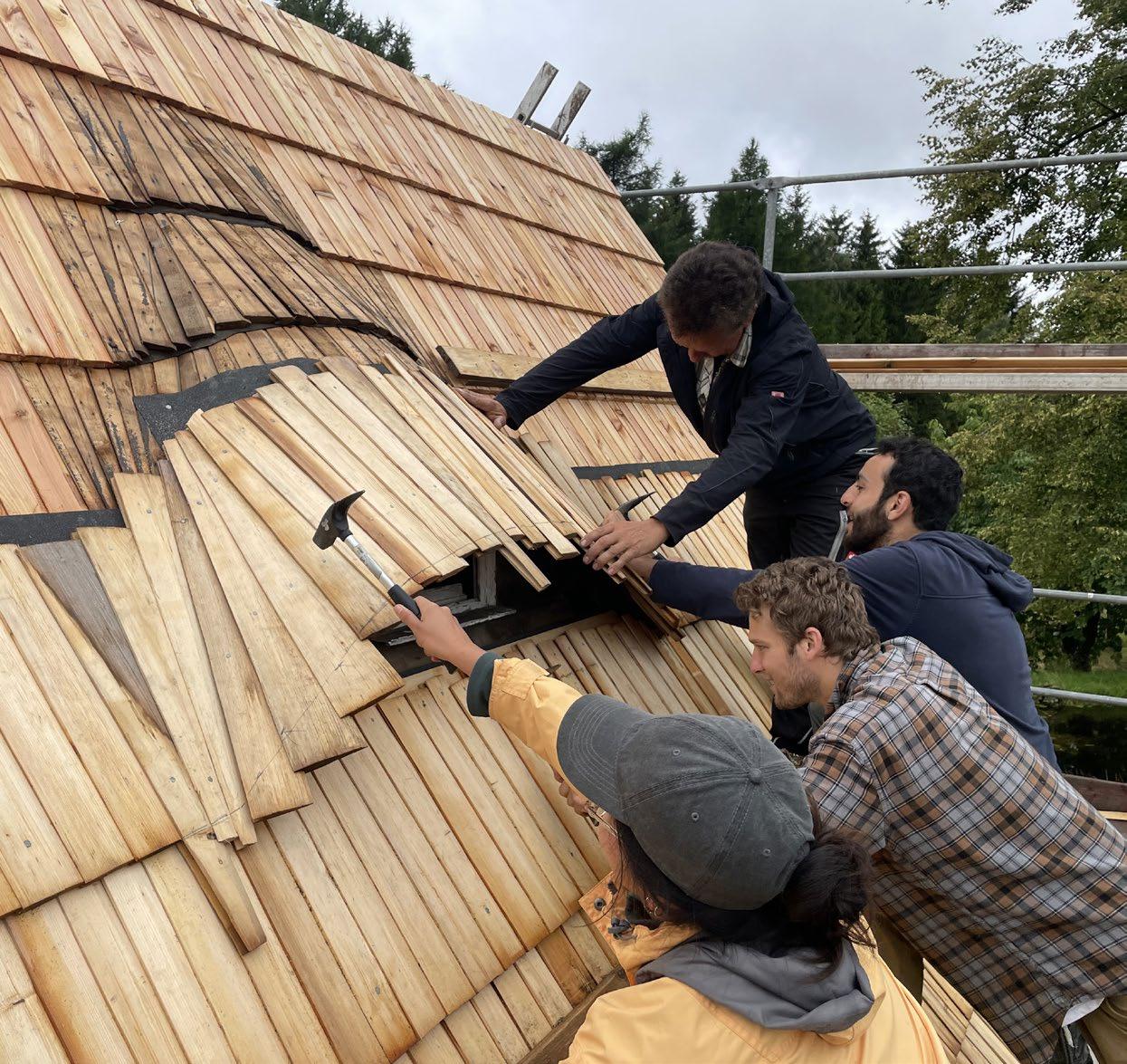
Launched in 2022 and coordinated by Portugal’s Directorate-General for the Arts, the “Saber Fazer” Programme implements the country’s national strategy for traditional crafts and artisanal knowledge. The programme recognises the significance of these practices for both cultural identity and sustainable development, and sets out concrete measures for securing their recognition, transmission and long-term viability. The programme is co-funded by the European Union through its Recovery and Resilience Facility.
The overarching goal of “Saber Fazer” is to establish traditional artisanal production as a dynamic, innovative and sustainable endeavour that actively contributes to the richness and diversity of Portugal’s cultural heritage and to the country’s socio-economic development.
At the core of the programme is an open-access digital repository that maps traditional crafts, production units and master artisans across Portugal. This online platform integrates audiovisual documentation, interviews, historical and ethnographic research, and serves as both a tool for cultural policy and a living archive for practitioners.
The programme has also developed a series of Territorial Intervention Laboratories (TILs): local, hands-on initiatives delivered throughout the country. These field labs foster collaboration between craftspeople, local authorities, schools, researchers and civil society. They are site-specific and focus on techniques, ranging from embroidery and black clay pottery to corkworking and artisanal cutlery-making. Each lab includes workshops, intergenerational exchange, thematic exhibitions, and public conversations. To date, five TILs have been held, with more in preparation.
Since 2022, over 970 artisans have been added to the repository, and more than 65 workshops and events have taken place. Special focus is given to older artisans and those working in low-density regions where cultural heritage is at greater risk of disappearance. These initiatives directly support transmission between generations, help reconnect communities with traditional knowledge, and generate renewed interest among younger practitioners.
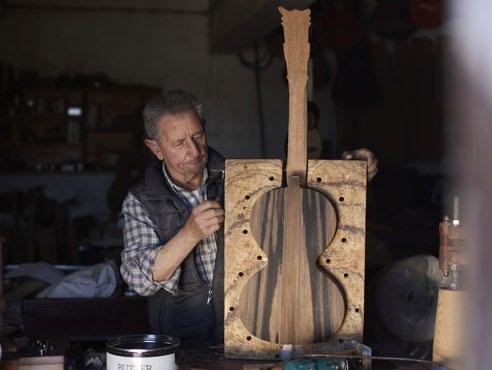
A companion book series, itinerant exhibitions, and public dialogue events extend the programme’s reach. The creation of the “Saber Fazer” Routes — 15 thematic itineraries, both digital and physical, promote artisans' work while fostering cultural tourism, visibility, and pride in local knowledge.
The “Saber Fazer” Programme is part of the National Network of Intangible Cultural Heritage, which functions as an informal platform for sharing knowledge, experiences and good practices, aiming to safeguard Intangible Cultural Heritage. With strong national support the “Saber Fazer” Programme will continue beyond 2025, ensuring long-term continuity and impact.
“The programme’s holistic, government-backed approach, combining traditional craftsmanship with contemporary approaches and an appreciation of the marketplace, is a model for social and economic development ,” the Awards’ Jury stated.
“The robust methodology and well-documented outputs of the “Saber Fazer” Programme provide clear potential for wider application,” the Jury commented.
The Saber Fazer Programme is Portugal’s national strategy for the safeguarding of traditional crafts and skills. It promotes knowledge transfer, sustainability, and territorial cohesion by bridging urban-rural divides — turning ancestral techniques into tools for cultural and economic resilience.
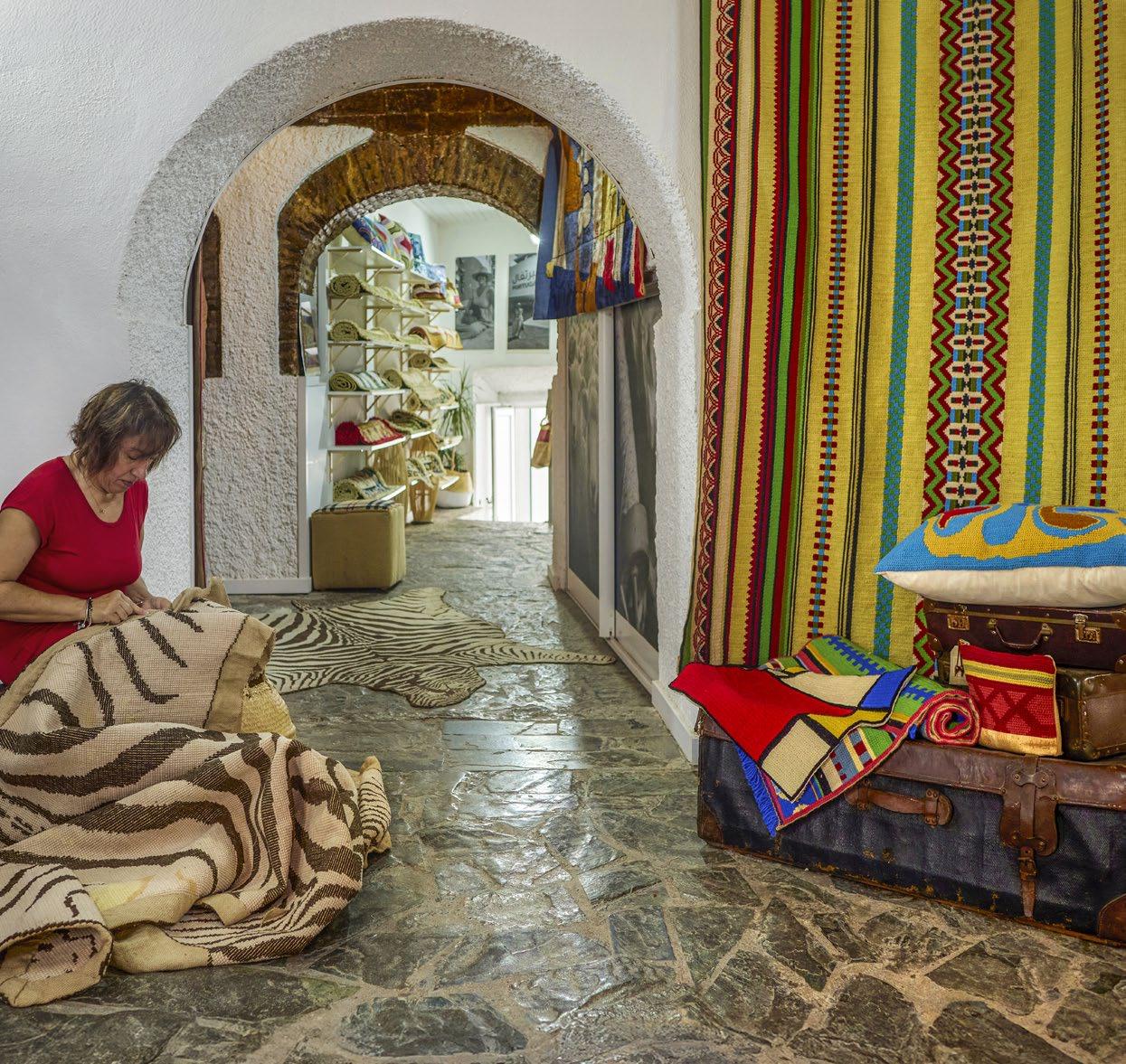
The ASTRA Center for Activities and Regional Resources is housed in the restored 14th-century House of Arts, located in the historic centre of Sibiu. Managed by the ASTRA Museum — Romania’s leading open-air museum — the centre functions as an urban hub for training, education and craft certification. The ASTRA Center was developed in partnership with Museene i Sør Trøndelag (Norway) and Future Capital (Romania), and financed by the EEA and Norway Grants with additional support from the Romanian government and the Sibiu County Council.
The goal was twofold: to restore and repurpose a medieval guildhall, and to establish a sustainable infrastructure for safeguarding and transmitting traditional craft skills. Over 80% of the historic building is now accessible to the public, with new spaces for exhibitions, maker activities, education and commerce. Measures to provide inclusive access, such as a lift and accessible toilets, extend a greater welcome to disabled visitors.
A major innovation was the ASTRA Museum’s formal recognition as the first museum in Romania to assess and issue professional qualifications in crafts. Drawing on extensive ethnographic, historical and sociological research, the team developed a pioneering training and certification curriculum. More than 90 craftspeople received professional certification in traditional construction, woodwork and manual carpentry. The certification not only assessed technical skills, but also entrepreneurship, financial literacy and marketing skills, strengthening participants’ capacity to achieve success in contemporary markets. Three certified artisans have since launched businesses employing their peers and the certification process is now being considered by other open-air museums, which are interested in replicating the model.
Community outreach is at the heart of the ASTRA Center. Educational initiatives reached over 10,000 people, including schoolchildren and volunteers. The “Travelling Dowry Chest” kit engaged pupils and teachers across 11 rural schools, while restoration workshops activated the city’s public square. These efforts prompted national cooperation between the Ministry of Culture and the Ministry
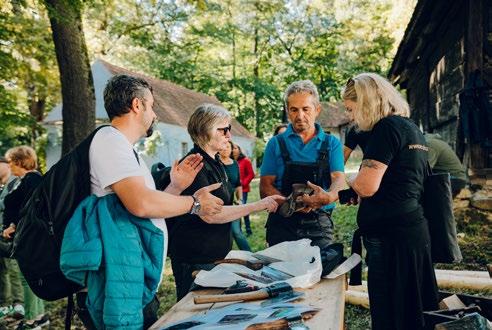
of Education. Craft certification has become a requirement for state-funded heritage restoration projects in Romania.
The project overcame the challenges of the Covid-19 pandemic, the energy crisis and inflation through strong governance and international collaboration. Bilateral exchanges between Romanian and Norwegian partners enriched both methodology and cultural perspectives.
Daily operations and programming are now embedded in the ASTRA Museum’s core activities. Revenue streams from public activities, venue hire and partnerships with local NGOs support ongoing use and further development of the ASTRA Center for Activities and Regional Resources.
“The official certification scheme, developed as part of this project, marks a significant advance in formalising standards of traditional craftsmanship and the educational activities are empowering local building owners to repair their own heritage,” the Awards’ Jury stated.
“By responding to national heritage policy recommendations and expanding the ASTRA museum’s role into practical training and community engagement, the ASTRA Center demonstrates its wider economic and sector impact ,” the Jury commented.
The ASTRA Center in Sibiu revitalised a medieval guildhall as a vibrant training, certification and cultural hub. Through innovative partnerships, it set a national precedent for recognising traditional crafts, professionalising artisans and linking heritage, education and community resilience.
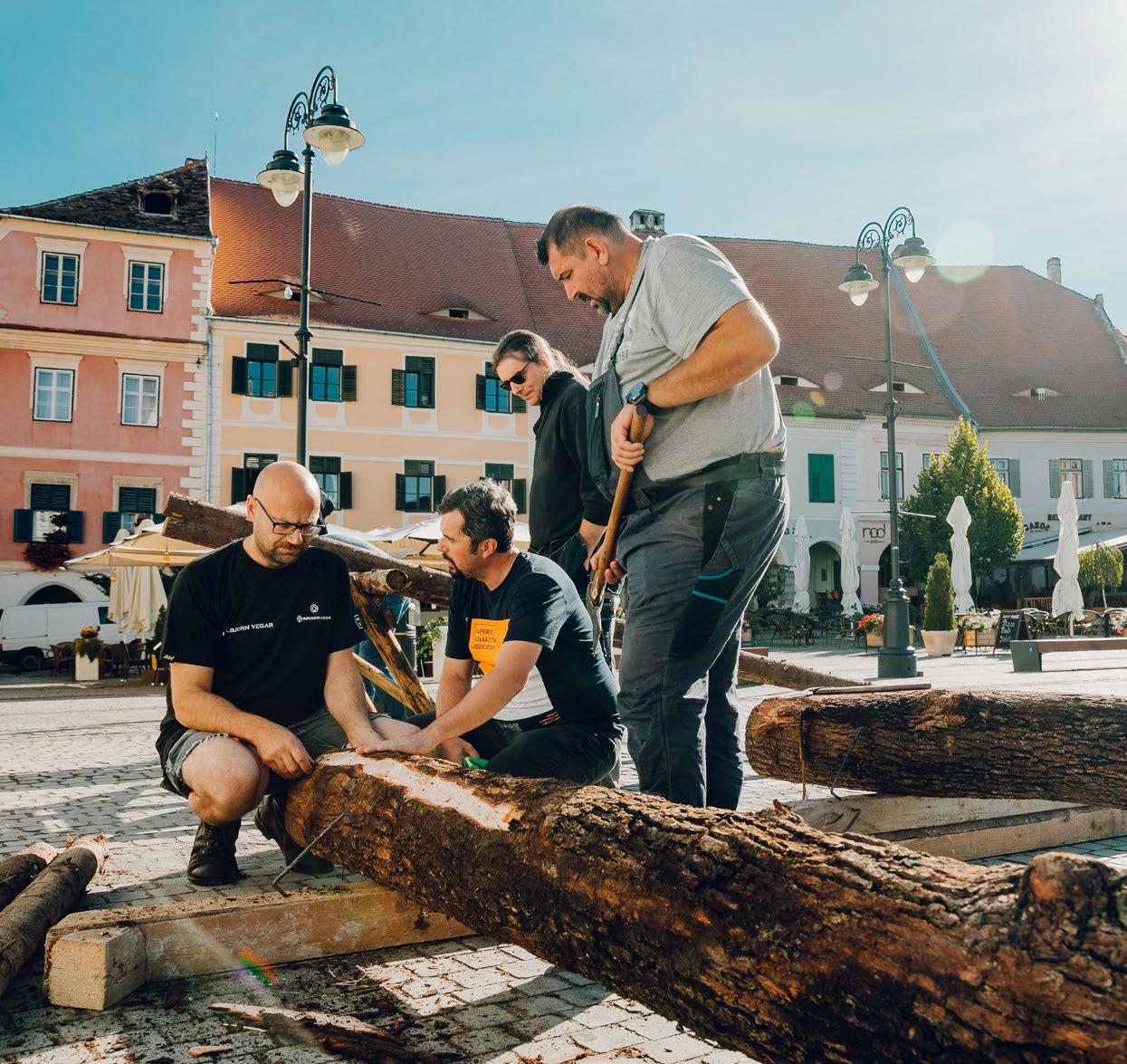
Pro Monumenta is a nationwide initiative focusing on the preventive maintenance of immovable cultural heritage. Led by the Monuments Board of the Slovak Republic, the comprehensive approach combines regular inspections, traditional skills training and targeted public outreach. It is co-funded by the EEA and Norway Grants and implemented in partnership with the Norwegian Directorate for Cultural Heritage (“Riksantikvaren”).
Pro Monumenta has addressed the shortage of traditional craft skills by establishing three regional training centres, each focused on a specific technique: Trnava on lime-based mortars and blacksmithing; Banská Štiavnica on structural carpentry and shingle roofing; and Levoča on historic window restoration and masonry. These fully equipped centres include administrative offices, workspaces, and tool storage. In total, 33 craftspeople, monument owners and administrators participated in nine workshops.
These regional teams were each reinforced with an additional technical specialist, further increasing the programme’s access to expertise and capacity. Teams operate mobile workshops and are trained to intervene quickly to address minor defects during inspections, producing detailed technical reports and tailored maintenance plans. By integrating drone inspections and specialised vehicles, the teams are able to conduct at least 100 on-site visits annually, even in hard-to-access locations.
Public awareness was raised through “Gutter Cleaning Days” held in four historic towns across Slovakia, combining practical demonstration with educational outreach. In addition, a series of instructional videos was developed and shared online, helping monument owners better understand and apply basic maintenance techniques.
The results are tangible: hundreds of technical reports have been produced and many buildings have benefitted from preventive repairs. The project also helped shape national policy — applicants for large-scale state renovation grants are now required to include Pro Monumenta inspection reports as part of their submissions, improving restoration quality and accountability.
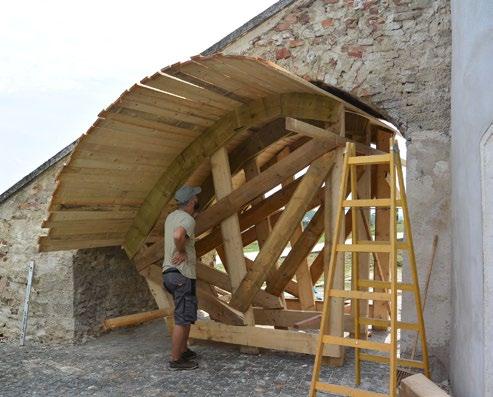
The success of the model has attracted international attention. Inspired in part by the Dutch “Monumentenwacht” (winner of a European Heritage Award/Europa Nostra Award in 2003), Pro Monumenta has inspired initiatives such as “Fixus Mobilis” in Lithuania, and contributed to heritage policy developments in both Norway and Romania. By demonstrating the value of early intervention, skilled craftsmanship and regular monitoring, the project offers a practical and transferable model for long-term heritage care that balances cost, authenticity, and preventive action.
The Awards’ Jury highlighted “ the project’s environmentally sustainable and cost-effective approach to monument maintenance,” noting “its scalability across diverse heritage contexts and its contribution to making a convincing business case for prioritising maintenance.”
“The transferability of skills and the robust methodology of Pro Monumenta should inspire Europe-wide implementation ,” the Jury added.
Pro Monumenta is a national initiative supporting the sustainable upkeep of built heritage. Through inspections, craft training, and public engagement, it demonstrates how early intervention and skilled maintenance can reduce costs and improve conservation results.
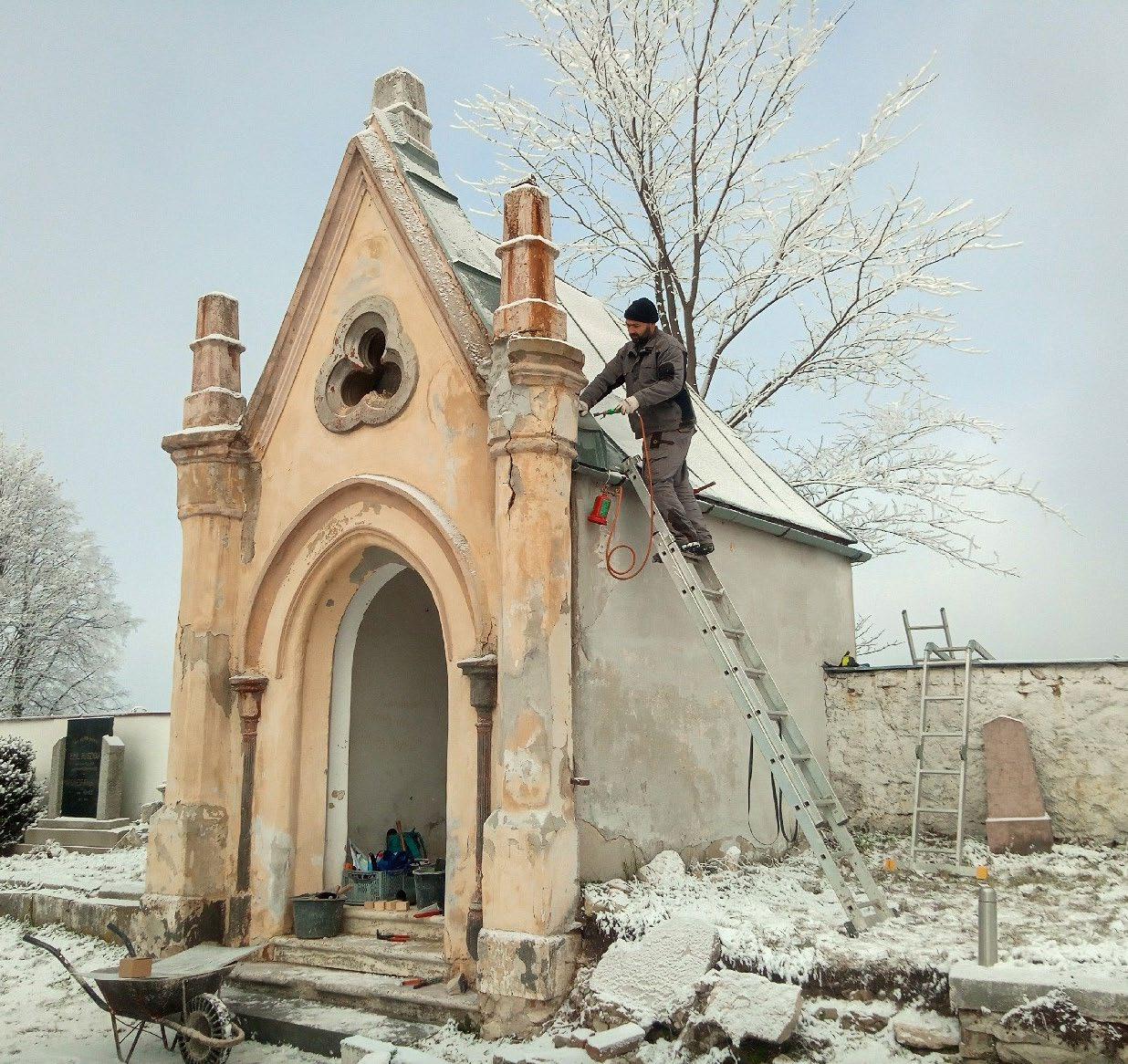
Bedechka Park in Stara Zagora is a significant green space known for its ecological, historical, and cultural value. Established as a river park in the mid-20th century, it has continuously faced threats from urbanisation and residential development. For over a decade, the Save Bedechka Association has led a grassroots battle to protect the park. In 2023, the Art Collective On The Street joined the effort, and together with an engaged local community, initiated a powerful civic and artistic movement to preserve the park as a vital natural and cultural sanctuary.
At the heart of the park stands the iconic 700-year-old Plane Tree ("Stariyat Chinar"), officially protected since 1960 as a natural landmark. Recent biodiversity studies have highlighted the park’s rich ecosystems, including river habitats and protected species, such as otters and bats. Civic advocacy, supported by these ecological findings, led to the park’s legal reinstatement as green space, successfully halting several controversial development plans and securing its status within the city’s spatial plan.
The Art of Protecting Bedechka project has creatively expanded the park’s identity by establishing it as Bulgaria’s first land art park. Using natural materials, artists have created installations that blend with the landscape, reinforcing the connection between culture and nature. A major milestone was the 2024 wood sculpture symposium, which featured both established and emerging artists, and laid the groundwork for long-term cultural tourism and environmental education.
The annual Green On ("Na Zeleno") festival has further amplified public participation. The first edition in 2023 attracted about 3,000 visitors; in 2024, the number rose to over 7,000. The programme includes eco-educational workshops, sports, performances, and art installations. The festival gathers together a diverse audience, including refugees and young people from various countries, creating new spaces for intercultural dialogue and collective action.
In 2022, archaeological excavations revealed a necropolis dating from the Roman to the medieval period, reinforcing the site’s historical significance. Plans are underway, in collaboration with
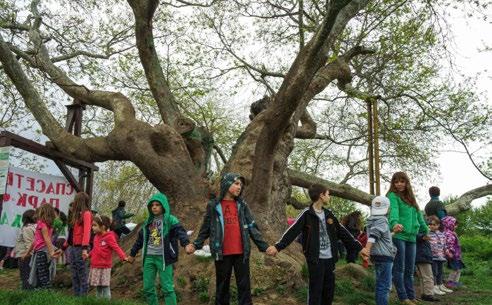
the Stara Zagora Regional History Museum and local authorities, to integrate this layer of heritage into the park's future.
A documentary was produced to narrate the story of Bedechka and the citizens working to protect it. The project is exemplary for the tensions it highlights between urban development and the preservation of natural and cultural heritage — a dynamic faced by many European cities.
The preservation of Bedechka Park aligns with wider European sustainability goals. In a region undergoing transformation under the EU’s Just Transition Mechanism, Bedechka illustrates how civic engagement, cultural initiatives and environmental stewardship can support a greener, more inclusive future.
“A bottom-up initiative reversing the planned transformation of a park into a residential area. It showcases civic activism for the protection of cultural and natural heritage, relevant in the broader European and Eastern European post-socialist transition, where public land was widely privatised ,” the Awards’ Jury noted.
“An example of how public green spaces can be protected and become sites of memory, creativity and leisure — and how they can be recognised for their environmental relevance, particularly in addressing the effects of climate change,” the Jury highlighted.
The Bedechka Park in Stara Zagora, threatened by several controversial development plans, has become a community-driven symbol for ecological and cultural preservation. Civic-led advocacy and creative initiatives have transformed it into Bulgaria’s first land art and heritage park.
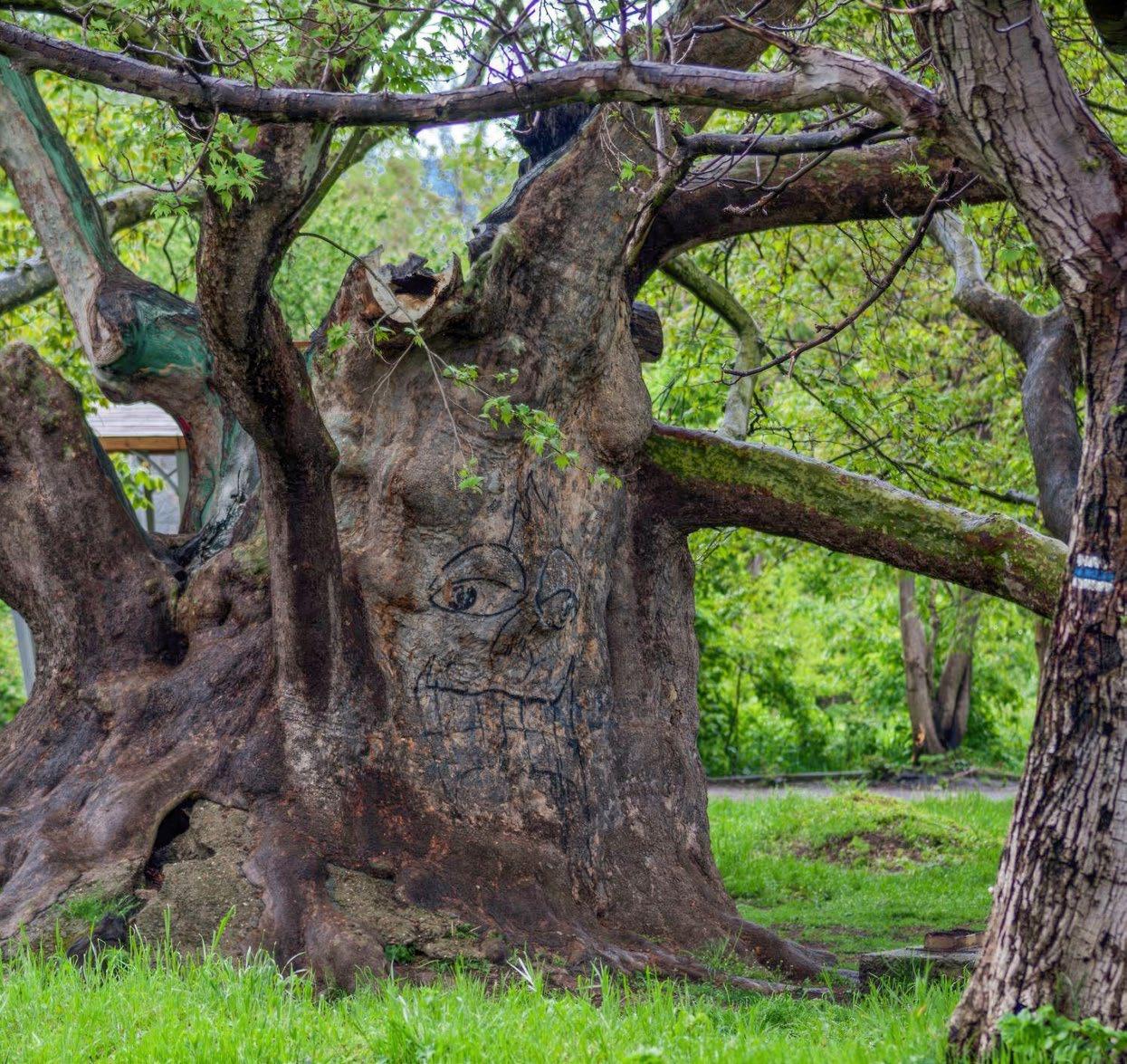

Initiated by the Maritime Archaeological Society of Finland (MAS. Fi), the Baltic Sea 3D Wrecksite Ontology has created the world’s largest public collection of photogrammetric 3D models representing historic shipwrecks. With nearly 200 fully documented and radiocarbon-dated wreck sites, the project offers new insights into the trade, economy and mobility that shaped Europe — with the Baltic Sea functioning as a shared economic space.
MAS.Fi, a UNESCO-accredited NGO dedicated to the protection of underwater cultural heritage, adheres strictly to the principles of Open Science and Open Data. All survey data, laboratory analyses, and resulting findings have been made freely available for non-commercial use through the society's dedicated online research portal Furthermore, the society actively encourages public interaction with these models, offering the possibility to print 3D replicas or creatively modify them under open licensing conditions.
Established in 2019, the initiative has rapidly become central to Finland’s maritime archaeological training, research, and heritage engagement. MAS.Fi organises Finland’s only underwater archaeology field schools and contributes significantly to the country's annual archaeological data collection. Volunteers carry out most of Finland’s maritime archaeological fieldwork, including extensive underwater surveys and the reporting of essential conservation information to national heritage authorities.
The society’s team has also contributed to methodological innovation. A new drilling technique was developed to enable underwater dendrochronological sampling — a procedure previously considered unfeasible significantly enhancing the accuracy of dating submerged wooden wrecks. Two dedicated wreck parks further demonstrate the society’s innovative approach. The Porkkala Wreck Park, opened in 2018, and the Saaristomeri Wreck Park, launched in 2024, feature guided dive trails that reduce human impact on sensitive underwater sites. These parks simultaneously enhance recreational divers’ understanding and appreciation of maritime archaeology through on-site educational materials and accessible digital twins of the shipwrecks.
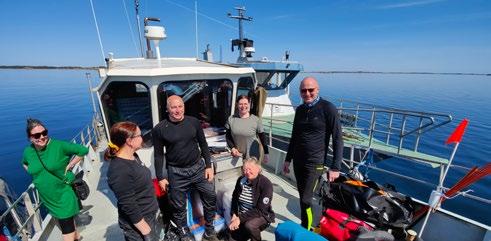
MAS.Fi also organises annual public exhibitions and events. Educational outreach, including hybrid public lectures and school-focused programmes, consistently reaches thousands annually.
Environmental responsibility is integral to the initiative’s operations. Fieldwork is carefully planned to minimise ecological impact, employing slow-moving vessels, shoreline power sources, coordinated carpooling, and environmentally conscious food supplies. Additionally, the society regularly participates in marine biodiversity monitoring and coastal clean-up activities.
The Baltic Sea 3D Wrecksite Ontology’s international relevance extends beyond Finland. Recognising the historical interconnectedness of European maritime trade, MAS.Fi has collaborated with UNESCO to adapt this project across other Baltic states. Through international seminars, conferences, and active dissemination, MAS. Fi has established itself as one of the leading voices in maritime archaeological research — all while being run entirely by volunteers.
“This project captures the transnational and intercultural history of the Baltic Sea. Developed with the involvement of experts, it has been executed entirely by volunteers, including members of the deaf community ,” the Awards’ Jury commented.
“The Baltic Sea 3D Wrecksite Ontology project demonstrates a strong commitment to open science methodology, integrating a large number of digital twins into educational and scientific frameworks ,” the Jury emphasised.
The Baltic Sea 3D Wrecksite Ontology project has created the world’s largest public collection of photogrammetric 3D models representing historic shipwrecks. Driven entirely by volunteers, it provides open digital access, promoting heritage awareness, scientific research, and sustainable diving in Finland and beyond.
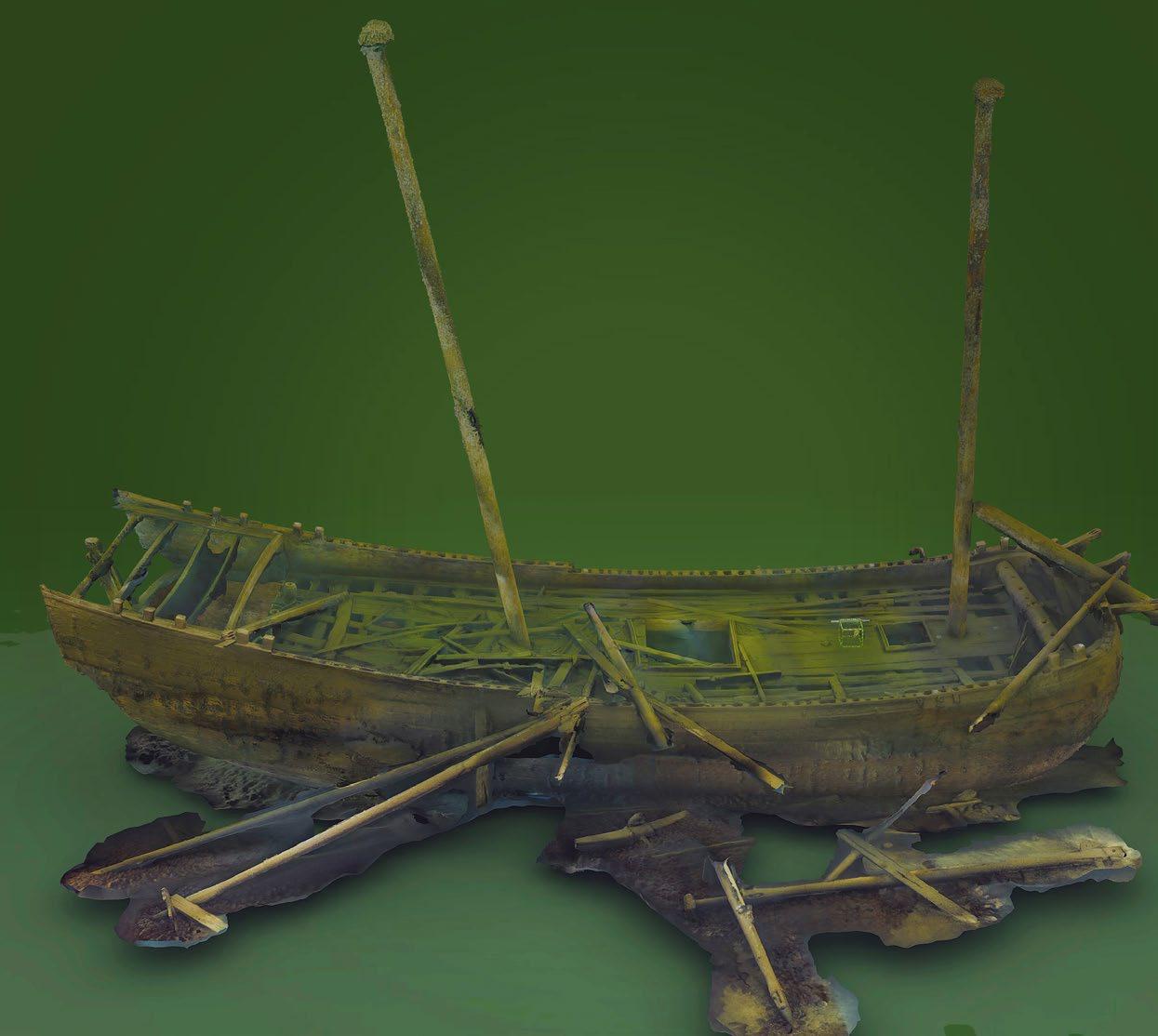
The restoration of Notre-Dame de Paris, following the fire of 2019, is one of the most visible heritage projects in Europe. The cathedral, part of the UNESCO-listed Banks of the Seine in Paris, is undergoing extensive restoration led by the public institution Rebâtir Notre-Dame de Paris. The project has been made possible through the commitment of 340,000 donors from 150 countries, reflecting the unprecedented scale and public interest in the work. Beyond the exceptional technical and architectural challenge, the restoration has served as a powerful tool for engaging the wider public with cultural heritage and the know-how involved.
Due to the inaccessibility of the restoration site, a major effort was made to bring the public closer to the ongoing work through diverse and large-scale outreach activities. The public institution Rebâtir Notre-Dame de Paris developed a comprehensive engagement strategy, making use of exhibitions, educational programmes, media, digital platforms, and international collaboration. In particular, it has hosted regular cultural events near the cathedral, notably during the European Heritage Days. Several travelling exhibitions have also reached wide audiences in France and beyond.
Special focus was placed on reaching children and audiences not traditionally engaged with heritage, through workshops, guided tours, and adapted educational materials. The active use of social media and digital storytelling significantly expanded outreach. An associated educational kit was distributed to over 1,000 schools across France, targeting more than 250,000 young people.
The website of Rebâtir Notre-Dame de Paris hosts a range of digital content, including video portraits of artisans, documentation of traditional techniques, 3D reconstructions, and thematic dossiers. The communication programme aimed not only to share knowledge about the monument and its restoration, but also to raise awareness of the associated heritage professions and to train a new generation of restoration specialists. By reviving the transmission of knowledge that historically linked Europe’s great cathedrals and workshops, the initiative has created new connections among craftspeople, apprentices, and the public.
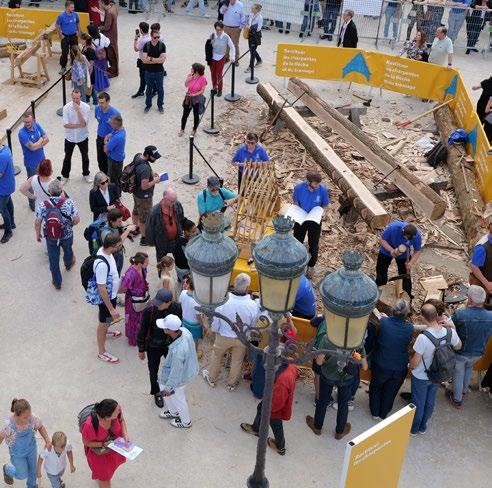
The restoration of the Notre-Dame Cathedral has become a shared cultural experience, strengthening public interest in heritage and contributing to a renewed understanding of conservation as a collective responsibility.
“Notre-Dame de Paris stands as a symbol of European heritage and sets a world-class example in public outreach, while raising awareness of the skills and training required for exemplary restoration,” the Awards’ Jury stated.
“The advanced digital documentation and international outreach strategy have engaged millions and reinforced public interest in heritage,” the Jury highlighted.
The restoration of Notre-Dame de Paris has reached millions through digital content, social media, exhibitions, and educational kits. By making the process accessible despite physical barriers, the project has engaged the public in heritage and raised awareness of the crafts behind the restoration.
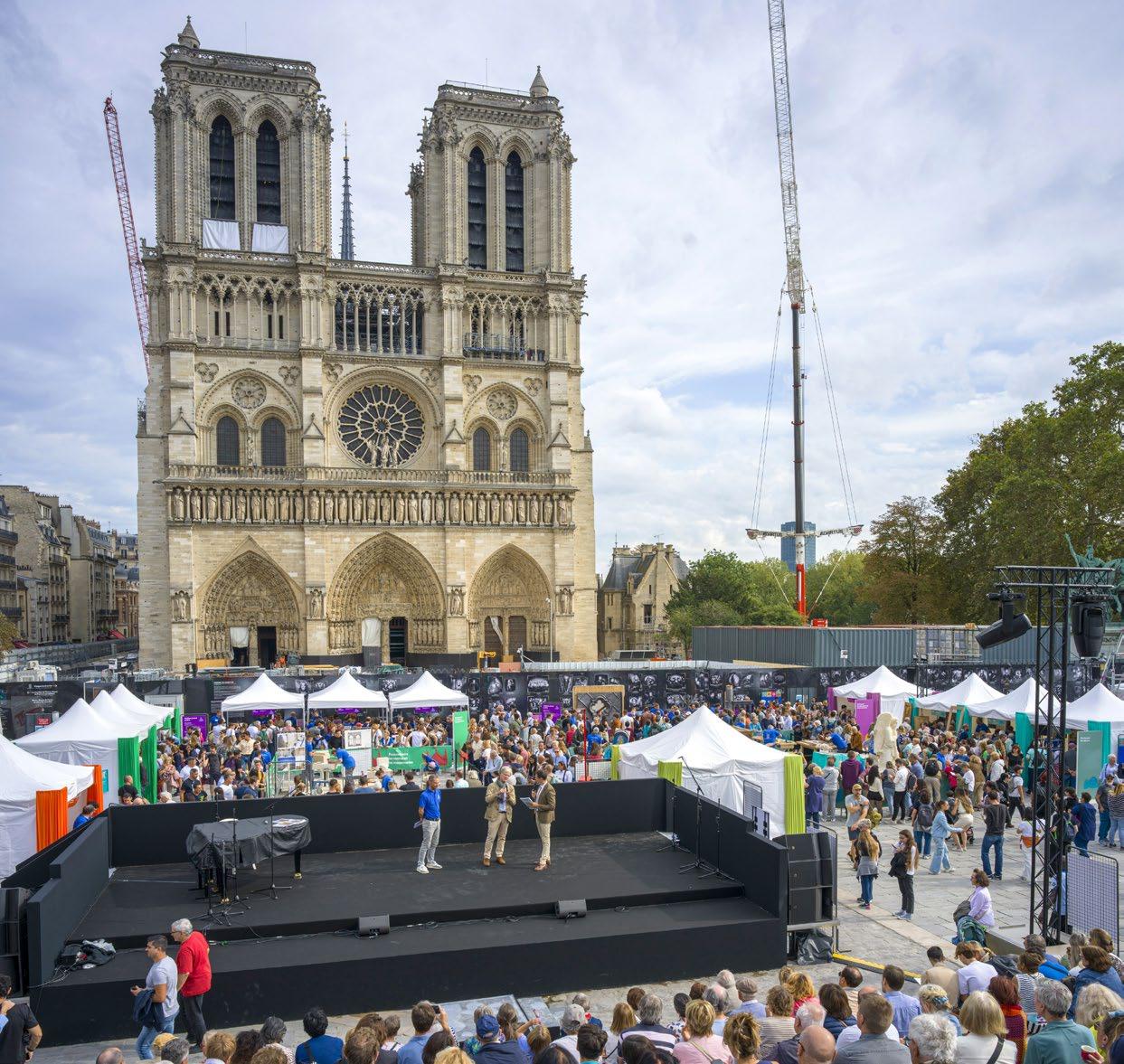
The donation campaign “The culture of Ukraine has no means of defence” was organised between November 2023 and February 2024 by the National Museum of Lithuania in collaboration with the Lithuanian Radio and Television, and the civic movement “Strong Together”. The initiative was strongly supported by the Lithuanian Museum Association, uniting 100 museums, and the Lithuanian National UNESCO Commission. The project's Ukrainian partner, the National Museum of the History of Ukraine, identified and prioritised the urgent needs for restoration materials and equipment to protect and restore Ukraine’s heritage threatened by the war.
Since 24 February 2022, the war in Ukraine has placed enormous pressure on the country’s cultural heritage sector. Many institutions have faced urgent threats, with collections at risk of damage, deterioration or loss. UNESCO has verified damage to 485 heritage sites since the offset of the war. Iconic sites have sustained significant destruction. The situation has underscored the urgent need for protective measures, restoration materials, and international solidarity.
Responding to this crisis, the Lithuanian public was encouraged to donate via a dedicated campaign. These public contributions funded nearly 200 units of essential materials and equipment, such as specialised chemicals, adhesives, microscopes, and ultrasonic cleaners, carefully selected in consultation with Ukrainian restoration specialists.
In February 2024, the purchased materials were successfully delivered to the National Museum of the History of Ukraine, from where they were distributed across the country to museums and institutions in need. Since then, Ukrainian restorers have been actively working on stabilising and restoring hundreds of museum items. Among the conserved objects are archaeological finds, including weapons, household items, textiles, and manuscripts spanning from ancient to recent history.
A key innovation of this campaign was its emphasis on broad public engagement and solidarity. The initiative reached a multi-million audience through extensive coverage by outdoor campaigns, Lithuania’s national television, radio, and social media channels.
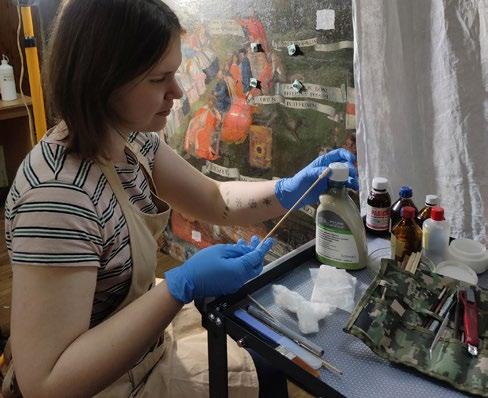
Museums across Lithuania actively participated in promoting the campaign, greatly amplifying its visibility and impact.
Beyond immediate restoration, the initiative provided a significant opportunity for cultural exchange and professional dialogue between Lithuanian and Ukrainian heritage specialists. It fostered ongoing collaboration, strengthening professional networks and facilitating the transfer of knowledge and restoration methodologies.
The project underscored the importance of cultural heritage as a cornerstone of collective identity, particularly in times of conflict. It demonstrated how cultural institutions and civil society can come together effectively to respond to crises, setting a practical model of international cooperation and solidarity within Europe.
“This donation campaign offered citizens of Lithuania a direct and meaningful way to contribute to the safeguarding of cultural heritage in Ukraine . This initiative, led by the National Museum of History of Lithuania, serves as a replicable model of solidarity and rapid response to save heritage objects ,” the Awards’ Jury stated.
The Lithuanian donation campaign “The culture of Ukraine has no means of defence” mobilised public support to provide essential restoration materials for Ukrainian museums affected by war. This initiative fostered solidarity, international cooperation, and active heritage protection in times of crisis.
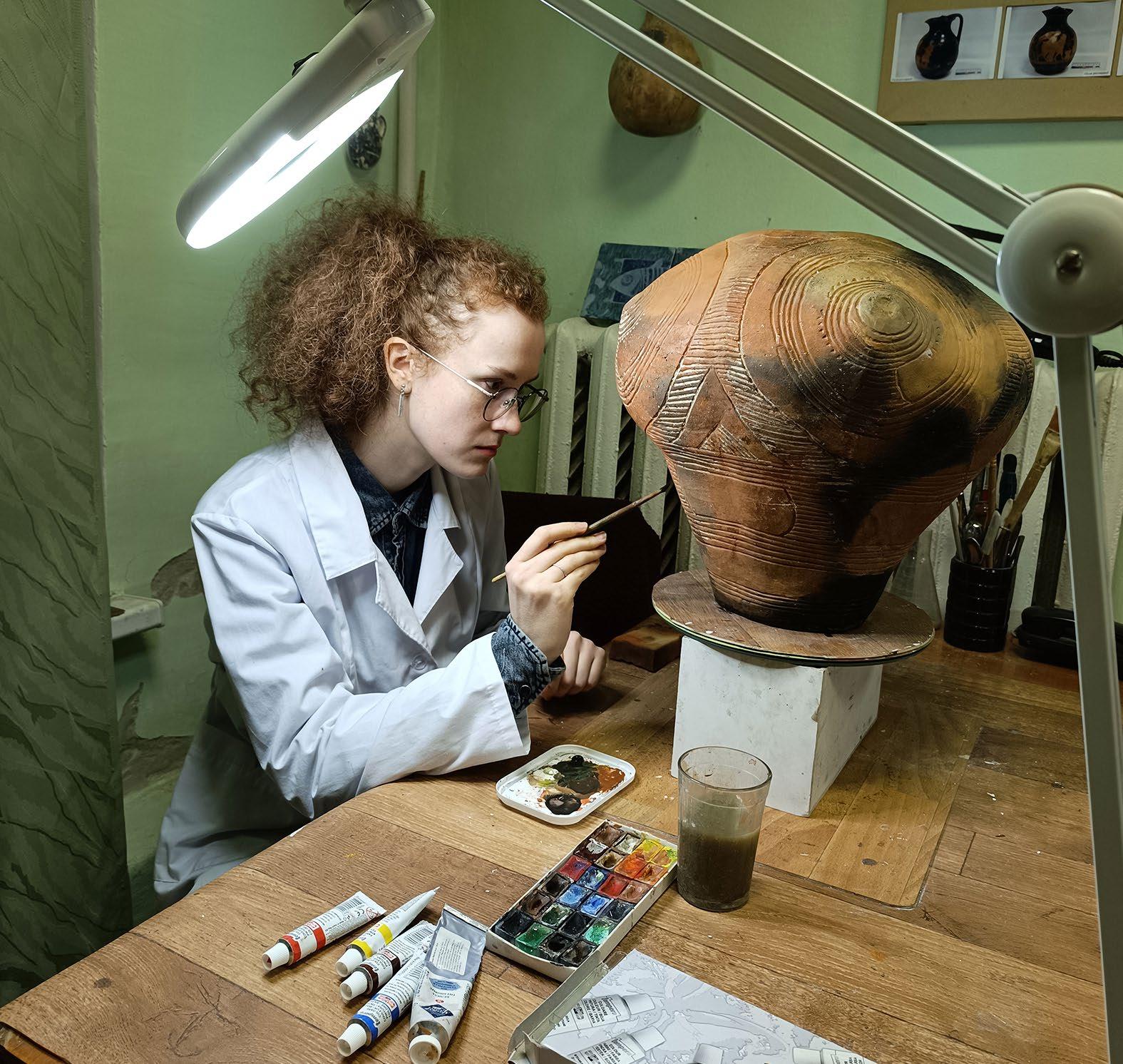
The Małopolska Culture Heritage Days, initiated in 1999 by the authorities of the Małopolska region and organised by the Małopolska Institute of Culture in Kraków, raise awareness about the region’s exceptionally diverse cultural heritage. Over the past 27 years, this event has welcomed more than 300,000 participants, highlighting 300 heritage sites and collaborating with nearly 500 local and regional partners.
Held annually over two weekends in May, the programme showcases not only lesser-known heritage sites but also reinterprets well-known landmarks from fresh and innovative perspectives. Each year explores a distinctive central theme, ranging from traditional craftsmanship and industrial heritage to architecture and intangible cultural expressions. A conscious effort is also made to address sensitive or difficult heritage topics, providing platforms for open dialogue and deeper reflection.
A comprehensive array of engaging activities — including guided tours, thematic meetings, interactive workshops, lectures, and site-specific exhibitions — encourages active community participation. Local historians, heritage professionals, volunteers, schools, museums, civic groups, and municipal authorities contribute directly to these diverse activities, fostering a sense of shared ownership and pride.
Beyond live events, historical research plays a key role in deepening public engagement. Collaborations with heritage experts and academics have led to new insights into local heritage narratives, shared through accessible tools and multimedia content. Outputs include sign language guided tours, audio description for people with visual impairments, educational workshops for all age groups, and short films highlighting individual heritage stories.
Digital presentation further extends the project’s reach. A recently modernised website features descriptions of over 300 heritage sites, accompanied by high-quality photographs and alt text. It also offers a wide range of resources, including books by well-known Polish authors, interactive tools, archives, and subtitled documentaries.
Diversity and inclusivity remain core values throughout the project’s implementation. Programmes explicitly address the
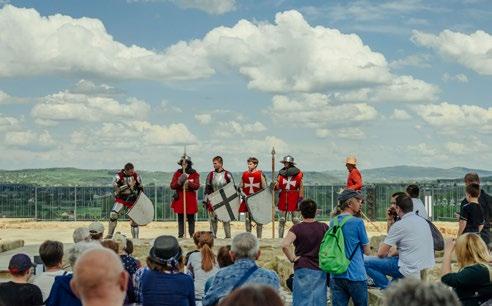
rich cultural, ethnic and social diversity of the Małopolska region. Educational workshops are specially designed to engage younger generations, while tailored activities ensure meaningful participation from seniors and people with disabilities. These inclusive initiatives actively promote intergenerational dialogue and foster stronger community bonds.
In 2023 alone, approximately 15,000 visitors actively engaged in the events. Extensive media coverage at regional and national levels further amplifies visibility, reinforcing the importance of heritage awareness and community involvement.
“The Małopolska Culture Heritage Days are an exceptional bottom-up, regional initiative with a strong community dimension — engaging people in meaningful ways through collaborative programmes, educational activities, and artistic interventions. It has raised awareness of a large number of heritage sites, including many lesser-known ones ,” the Awards’ Jury said.
“The project is grounded in deep historical research and supported by strong partnerships with local authorities and cultural institutions. An outstanding knowledge hub that provides accessible materials, including multilingual content and digital exhibitions, creating a lasting legacy ,” the Jury highlighted.
For over two decades, the Małopolska Culture Heritage Days have invited residents and tourists to explore both unknown and familiar heritage sites from fresh perspectives. With annual thematic programmes, films, research, and a digital platform, this popular event enriches heritage appreciation throughout Poland’s diverse Małopolska region.
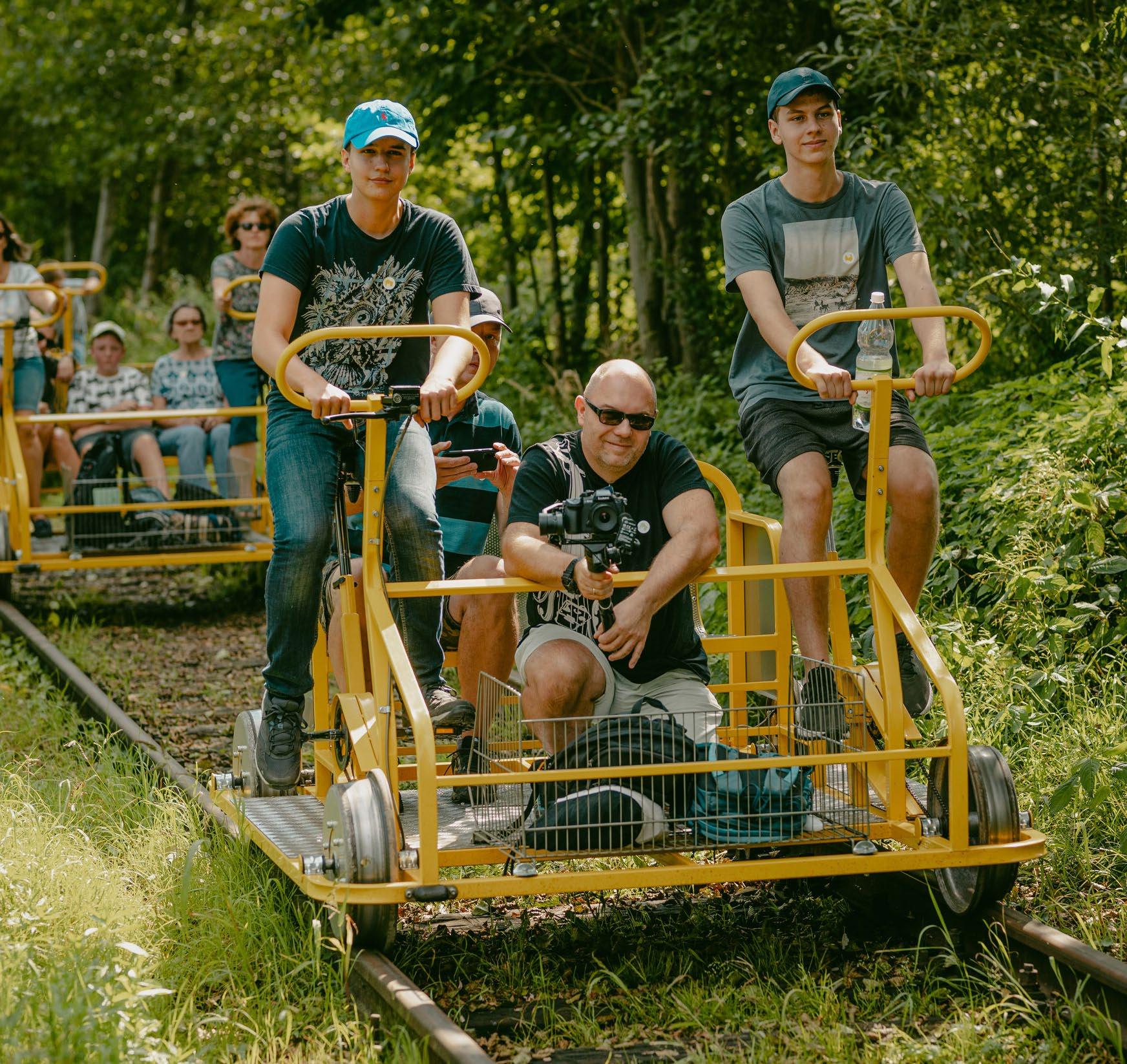
The project Almalaguês — Weaving the Future from the Tapestry of Time aims to safeguard and revitalise the traditional weaving practices of Almalaguês, a village near Coimbra, Portugal. These textile techniques, deeply rooted in the cultural and economic history of the region, had been declining for decades. The inscription of the practice in the National Inventory of Intangible Cultural Heritage is planned to take place by the end of 2025, and procedures are underway to include it in the National System of Qualification and Certification of Traditional Handicrafts.
The initiative is led by the Past Heritage Association (“Associação Herança do Passado”), supported by the Municipality of Coimbra, and brings together local artisans, cultural professionals, researchers and volunteers. Through a wide range of activities — including weaving workshops, public demonstrations, and intergenerational education and artistic residencies — the project promotes the transmission of ancestral knowledge to younger generations and wider audiences. Sustainable and natural materials are used, and the connection between craftsmanship, ecological awareness and community life plays a central role.
Community participation is embedded in the project’s approach. Activities have involved schools, elderly residents and local associations, with weaving used as a tool for memory-sharing and creative engagement. Events have taken place not only in cultural spaces, but also in classrooms, homes and public venues, strengthening local bonds and reactivating the presence of weaving in everyday life.
In addition to its educational outreach, the project has carried out extensive research and documentation. This includes interviews with elder weavers, the recording of oral histories, and the collection of traditional patterns, tools and techniques. These efforts have been brought together in a digital archive, made accessible to the local community and future practitioners.
The team also explored similarities with other textile traditions in Portugal and Europe, identifying shared techniques, patterns and challenges. This comparative work has helped to situate the
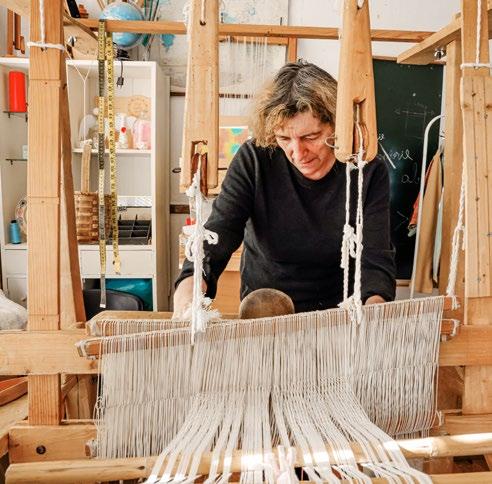
weaving of Almalaguês within a wider cultural and historical framework, strengthening its visibility as part of Europe’s living heritage.
“An innovative approach that combines traditional heritage with contemporary practices, supported by strong public engagement and numerous exhibitions. Excellent integration of community involvement, research, and sustainability through a participatory framework ,” the Awards’ Jury noted.
“The Almalaguês Weaving project provides meaningful income opportunities for non-traditional audiences and vulnerable groups, demonstrating how heritage can contribute to both social inclusion and economic resilience,” the Jury emphasised.
This project revitalises the traditional weaving of the village of Almalaguês in Portugal, engaging local communities and younger generations through workshops, research, and cultural events. It promotes intergenerational dialogue, ensuring the continuity of ancestral know-how.
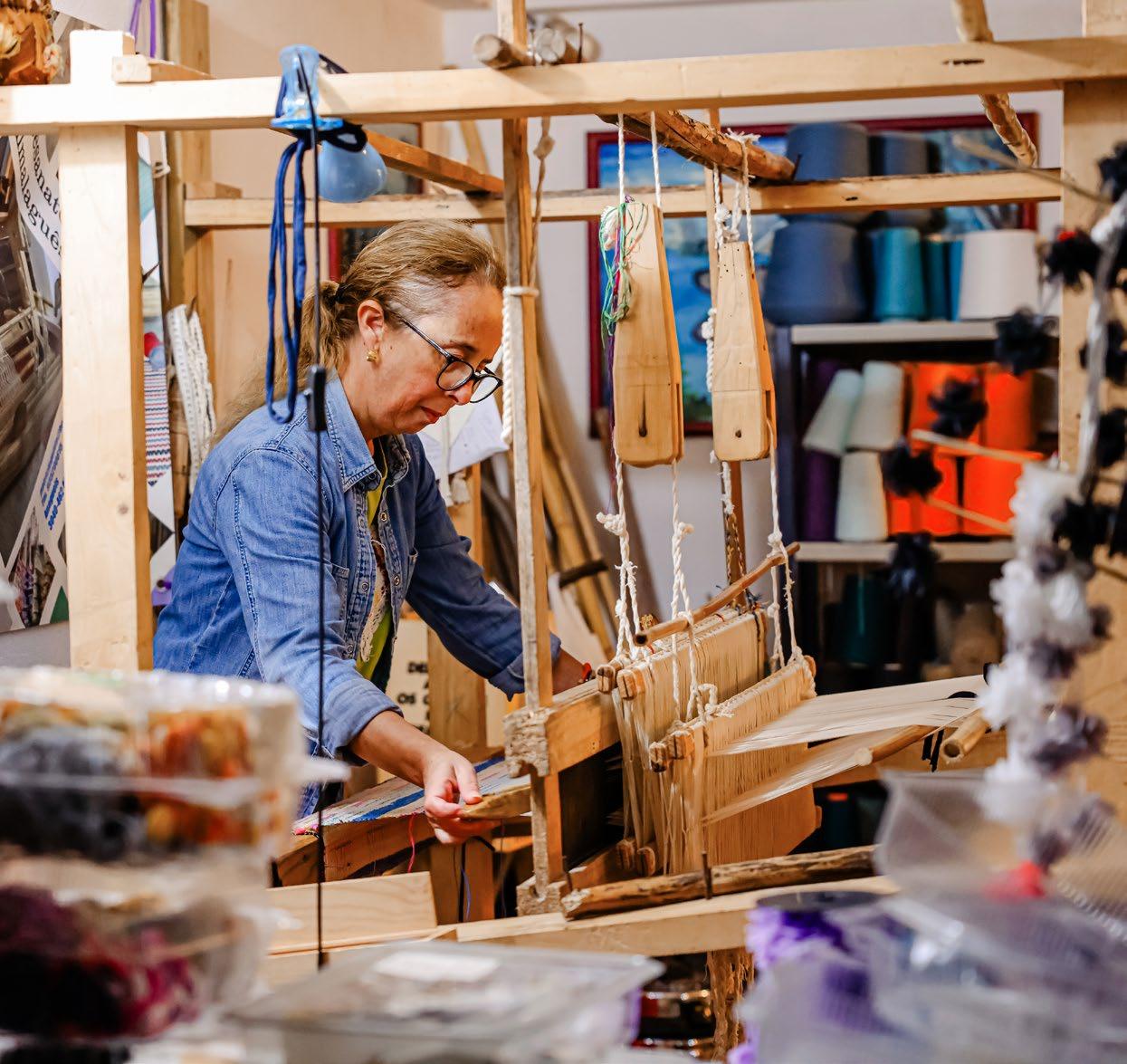
Branko Ćopić’s poem Hedgehog’s Home held a special place in the childhood memories of generations born in the former Yugoslavia. Seventy years after its publication, this literary work continued to evoke a shared sense of identity and nostalgia. Based on its iconic status and the complex history of its reception, the Museum of Yugoslavia in Belgrade developed a project and exhibition aimed at opening a dialogue around common heritage and its potential to help us rethink identity, home, memory, belonging, xenophobia, mental health, and our relationship with the recent past.
The exhibition consisted of two parts. The first, a fictional and imaginative space, was realised in collaboration with children aged five to ten from Belgrade, Zagreb and Sarajevo, and scenography students from the University of Belgrade. By cross-referencing the results of the children's workshops and research outcomes, the concept was developed by an interdisciplinary creative team — including artists, educators, psychologists and other professionals — using a co-design methodology. The result was an interactive exhibition that offered a kinesthetic experience, stimulated imagination and memory, and allowed each visitor to create their own intimate interpretation. Through the story of the hedgehog who insists on the value of his modest forest home, the exhibition reminded visitors of the importance of protecting what is theirs not only physically, but emotionally and symbolically.
The second part of the exhibition took a documentary approach, focusing on the life and work of Branko Ćopić (1915-1984) and the changing public perception of his legacy. The exhibition explored how literature, memory and biography are intertwined with broader social narratives.
Over the course of the project, more than 100 creative workshops were organised in cities across Serbia. Children of various ages participated in these activities, guided by museum staff, artists and psychotherapists. Mental health was a key theme throughout, addressed through emotional literacy and the sharing of personal stories related to home and identity.
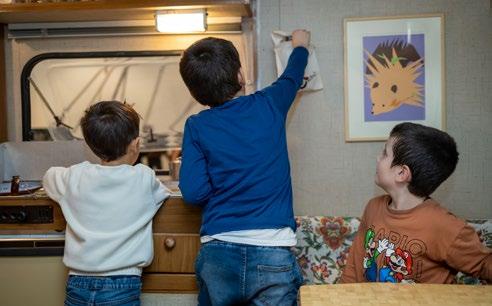
The entire exhibition was made accessible in Serbian Sign Language, developed in partnership with members of the local deaf community. A theatrical video performance was also created and later incorporated into the school curriculum for deaf pupils in Serbia.
The exhibition was extended twice due to strong public interest and attracted more than 150,000 visitors. A wide programme of public events accompanied the exhibition, including school visits, readings, guided tours, discussions, printed materials and social media campaigns.
The project demonstrated how shared cultural references can foster dialogue and reflection across generations and borders, highlighting its significance within the broader European context.
“An emotionally powerful and inclusive museum project that focuses on storytelling, intangible heritage, and the safeguarding of shared cultural narratives. Intergenerational dialogue is at the core of the Hedgehog’s Home — Inventing a Better World project, engaging children and other visitors through a hands-on experience,” the Awards’ Jury observed.
“A subversive initiative that awakens shared regional memory while promoting European values ,” the Jury added.
The Hedgehog’s Home — Inventing a Better World project reimagined a beloved children’s poem through co-creation with young children and students, promoting intergenerational dialogue and inclusivity. It sparked reflection on home, community and shared memory across Serbia and beyond.
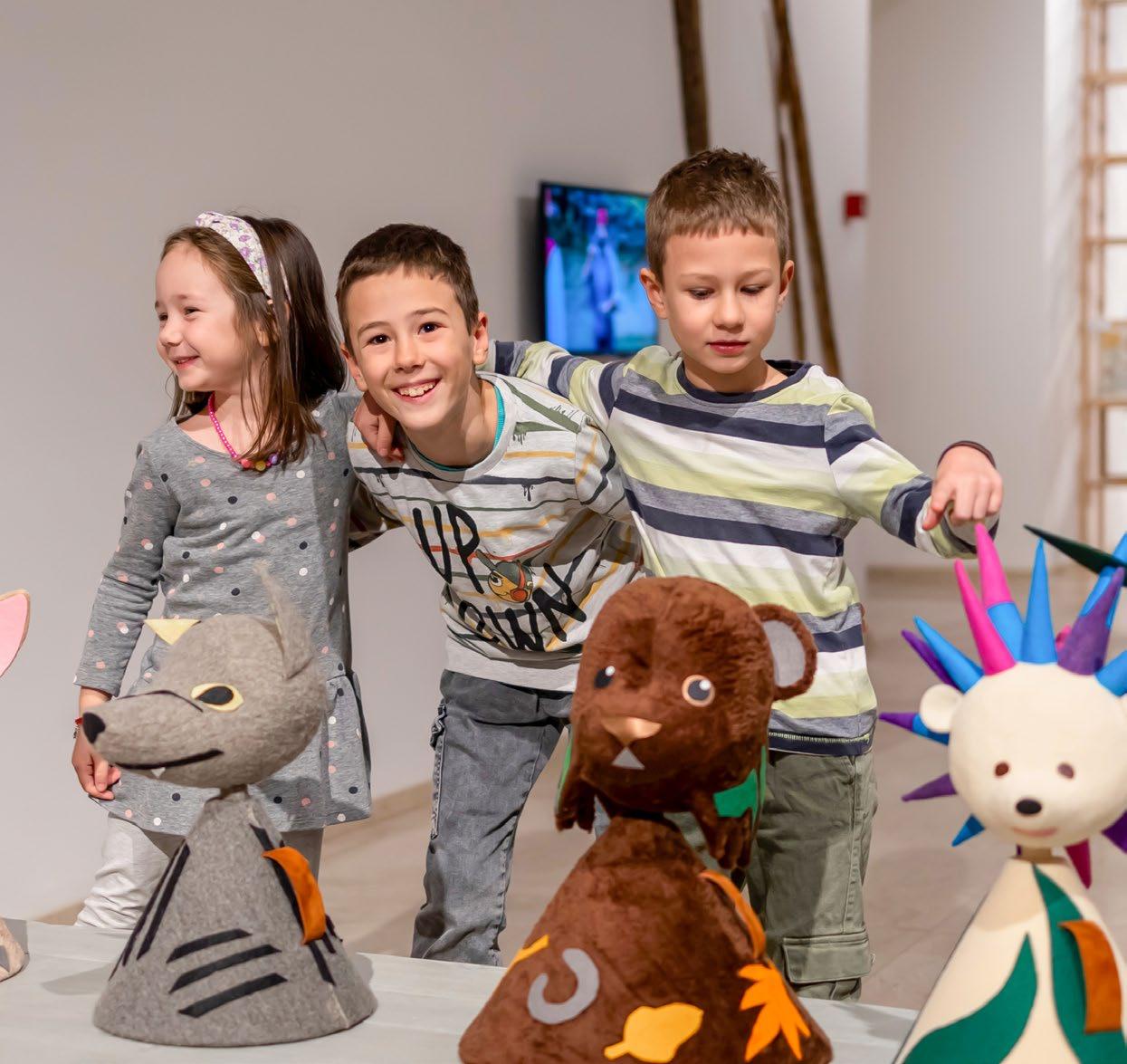
Casa Batlló, a UNESCO World Heritage Site in the centre of Barcelona, has undertaken a groundbreaking initiative to promote inclusivity and raise awareness of neurodiversity in cultural heritage since 2021. Through a carefully structured project, the museum has integrated 100 neurodivergent individuals — including people on the autism spectrum and those with other cognitive differences — into visitor-facing roles along with neurotypical staff.
The initiative was developed in close collaboration with Specialisterne, an organisation that supports employment for neurodivergent people. Together, they designed a multi-phase process based on research, adaptation and professional guidance. This included the recruitment, training and support of neurodivergent individuals, who now form part of the museum’s public service team.
The aim was twofold: to create meaningful employment opportunities and to foster greater public understanding of neurodiversity. By directly engaging neurodivergent staff with visitors, the initiative challenges stereotypes and promotes empathy and dialogue. Team members take on a variety of responsibilities, including welcoming visitors, guiding assistance, and supporting interactive experiences.
Visitor feedback has been overwhelmingly positive, with many remarking on the authenticity and warmth of the interactions. The museum also developed training sessions for existing staff and communication strategies to support the integration process. Beyond the internal impact, Casa Batlló has used its public platforms to raise awareness more broadly, especially through the campaign “Neurodiversity with New Eyes”.
The project sets an important precedent for the museum sector. It demonstrates that social inclusion and professional excellence can go hand in hand, even in high-profile institutions. By embedding neurodiversity into its structure and operations, Casa Batlló offers a replicable and scalable model for other museums seeking to diversify their teams and expand the definition of accessibility —
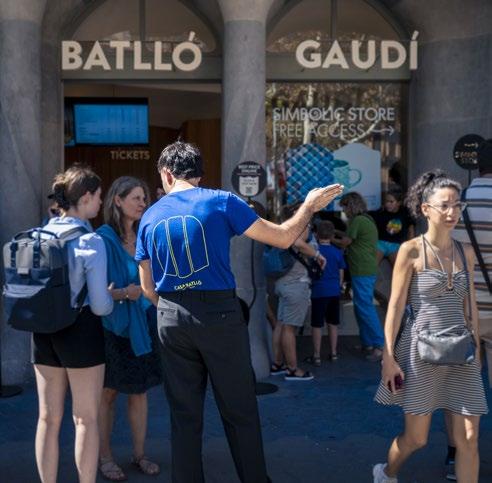
contributing to a broader cultural shift towards inclusion across the European heritage field.
“An innovative approach to cultural heritage management that promotes diversity and inclusion within an iconic institution. The project carries a strong message about social responsibility in the heritage sector. It also creates a new standard for inclusive cultural heritage management that could inspire other institutions to adopt similar practices ,” the Awards’ Jury stated.
Casa Batlló in Barcelona has pioneered the inclusion of neurodivergent individuals in public-facing museum roles. In collaboration with a specialised organisation, the museum developed a structured employment model that sets a precedent for inclusive practices in the heritage sector.
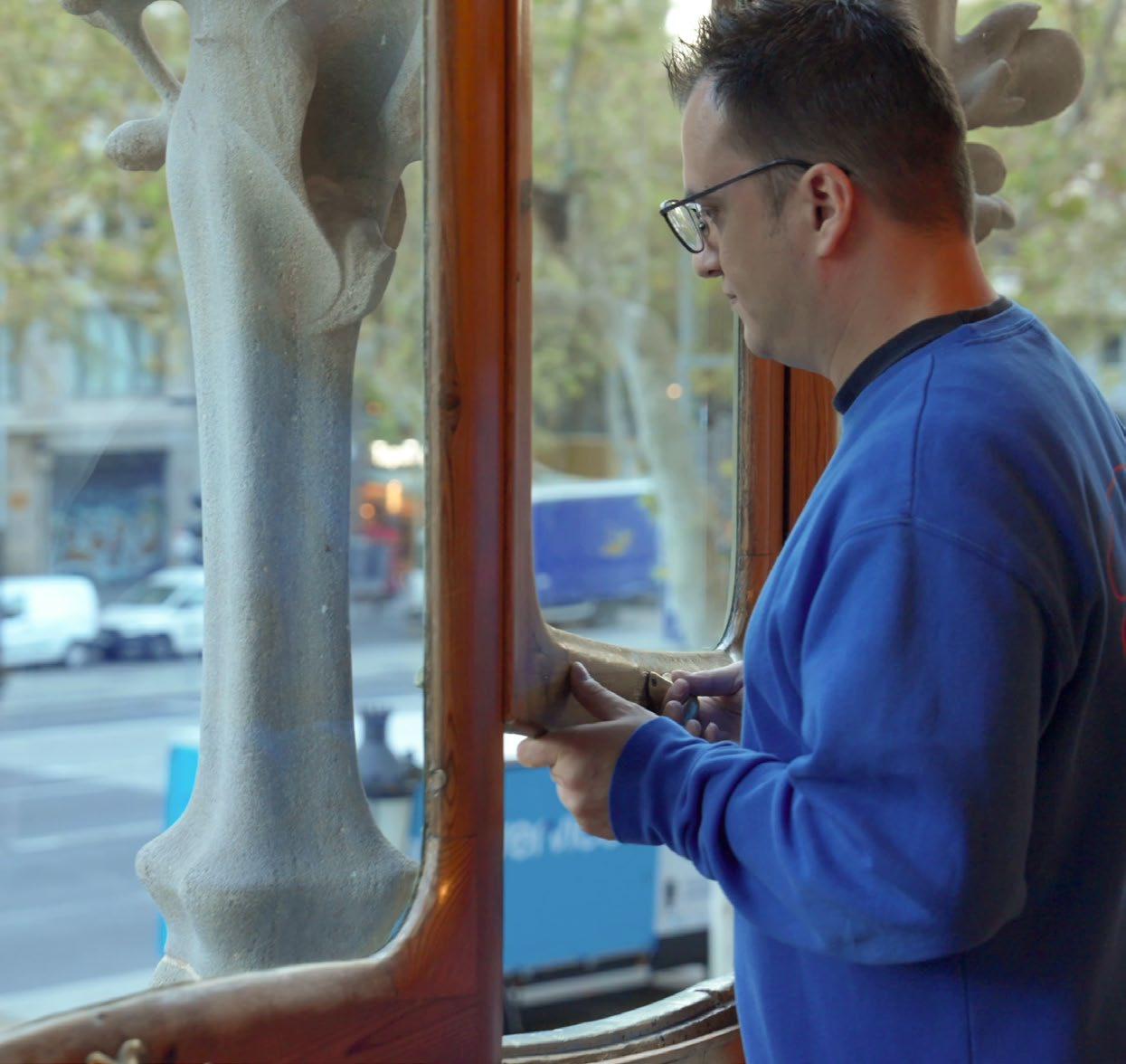
The All Together Festival, initiated in 2015 as Arsenal of Ideas , is organised annually by Mystetskyi Arsenal in Kyiv. The event offers an inclusive platform where children, teenagers, educators, and heritage professionals engage with Ukraine's cultural, historical, and natural heritage in creative and participative ways.
The festival takes place in the 18th-century Mystetskyi Arsenal building, a former armory that has become a leading centre for culture and heritage in Ukraine — a symbolic space where historical architecture and contemporary practice meet.
The festival brings together a diverse range of participants, including museums, schools, civic initiatives, and creative studios. Each year, approximately 40 organisations present their activities, while about 70 interactive workshops, performances, and site-specific art projects emphasise the festival's interdisciplinary nature.
The event is designed not only for young audiences but also as a learning space for professionals. It enables museums and cultural actors to share strategies, educational tools, and experiences with peers from across the country, contributing to the development of new methodologies in heritage education and audience engagement.
Central to the festival's success is the emphasis on co-creation and exchange. An extensive pre-festival capacity-building programme supports heritage professionals through training, networking, and mentorship, particularly focusing on museums from frontline regions. In 2023, travel grants enabled ten institutions from regions severely affected by the ongoing Russian war against Ukraine to attend, with five receiving additional support to present educational projects at the festival. In 2024, the number of supported institutions doubled.
Inclusivity is deeply embedded in the festival's approach. Special efforts are made to accommodate people with disabilities, military veterans, internally displaced persons, and young children, all of whom have free admission. Notable initiatives include learning sign language with professional interpreters, adaptations for individuals with hearing and visual impairments, and exhibitions showcasing works by neurodivergent artists.
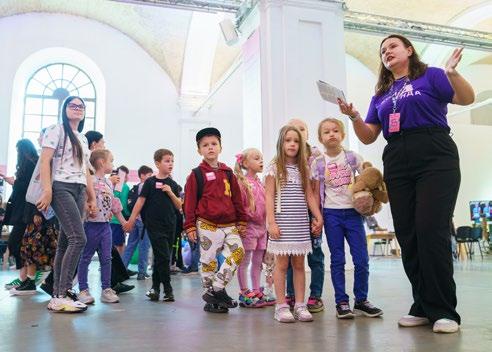
The ongoing war has intensified the festival’s significance. In a context of instability and loss, it has become a space where culture helps sustain a sense of continuity, belonging, and hope. For children and teenagers living under wartime stress, the festival provides a safe environment to reflect, connect, and imagine their role in the future of Ukraine.
Since its foundation, the festival has attracted nearly 9,000 visitors over two years, including 5,000 in 2023 alone. The event attracts wide media coverage and online engagement, reflecting its importance and popularity across Ukraine and beyond. Supporters of the festival include the EU-funded House of Europe programme, the Partnership Fund for a Resilient Ukraine , and the Ukrainian Cultural Foundation .
“This professional hub, hosted in Kyiv’s iconic Mystetskyi Arsenal, offers grants, mentoring, and training for heritage institutions — fostering professional growth and collaboration,” the Awards’ Jury commented.
“The All Together Festival is a powerful symbol of resilience and continuity in the context of war, with significant impact despite extremely challenging circumstances ,” the Jury highlighted.
The All Together Festival annually gathers heritage professionals from across Ukraine to engage children and teenagers through interactive events, workshops, and educational activities. It fosters cultural resilience, social inclusion, and professional capacity-building in the face of ongoing war-related challenges.

Peter Latz, born in 1939, is one of Europe’s most influential landscape architects and a visionary in the field of industrial heritage. Over more than five decades, he has shown how abandoned industrial sites can be reimagined as vibrant places for culture, ecology, and public life.
His most iconic project, the Landschaftspark Duisburg-Nord, transformed a decommissioned blast furnace plant in Germany’s Ruhr region into a multifunctional landscape. Completed in the 1990s as part of the International Building Exhibition Emscher Park, the site retains blast furnaces, cooling towers and ore bunkers, reinterpreted as gardens, play areas, climbing walls and observation platforms. Today, the park attracts 1.2 million visitors annually and serves as a flagship of the European Route of Industrial Heritage.
Across other major projects — including the Harbour Island in Saarbrücken (Germany), Parco Dora in Turin (Italy) and the Plateau de Kirchberg (Luxembourg) — Latz and his studio Latz + Partner integrated history, functionality, and environmental renewal. He pioneered the use of ecological strategies, such as rainwater harvesting, green roofs, and passive solar energy, long before these became standard practice. His former private estate in Kassel served as a testing ground for such methods as early as the 1970s.
Latz has also been a passionate educator, holding long-term professorships in Kassel and Munich, and guest positions at Harvard and Penn. He inspired generations of landscape architects, not only through teaching but through writings such as Rustred , 250 Things a Landscape Architect Should Know, and The Landscape Architecture of Peter Latz and Partners .
Known for his interdisciplinary and collaborative approach, Latz has worked closely with local communities and environmental groups. His designs emphasise evolution and adaptability, favouring layered, time-based solutions over static forms. As he once wrote, “Derelict sites have their own history, poetry and dignity.” His work demonstrates that transforming industrial ruins is not only possible, but essential to reimagining the urban and ecological future of Europe.
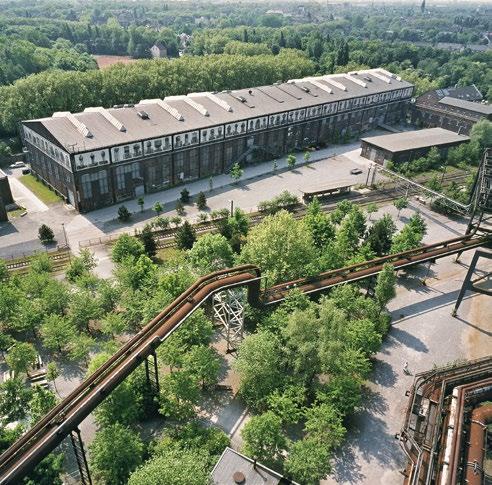
He received the IFLA Sir Geoffrey Jellicoe Award, the Rosa Barba European Landscape Prize, and the Friedrich-Ludwig-von-Sckell Ring.
“Peter Latz is a pioneer in industrial heritage and landscape reuse, integrating cultural memory with ecological renewal to transform disused sites into vibrant public spaces ,” the Awards’ Jury stated.
“His influence extends far beyond Germany — through global teaching, strong community engagement, and a lasting impact on how post-industrial landscapes are preserved and reimagined ,” the Jury added.
Peter Latz is a pioneer in the field of industrial heritage and landscape architecture in Europe. Through landmark projects, writing, and advocacy, he showed how history, ecology and design can reshape post-industrial landscapes into places of cultural and civic renewal.
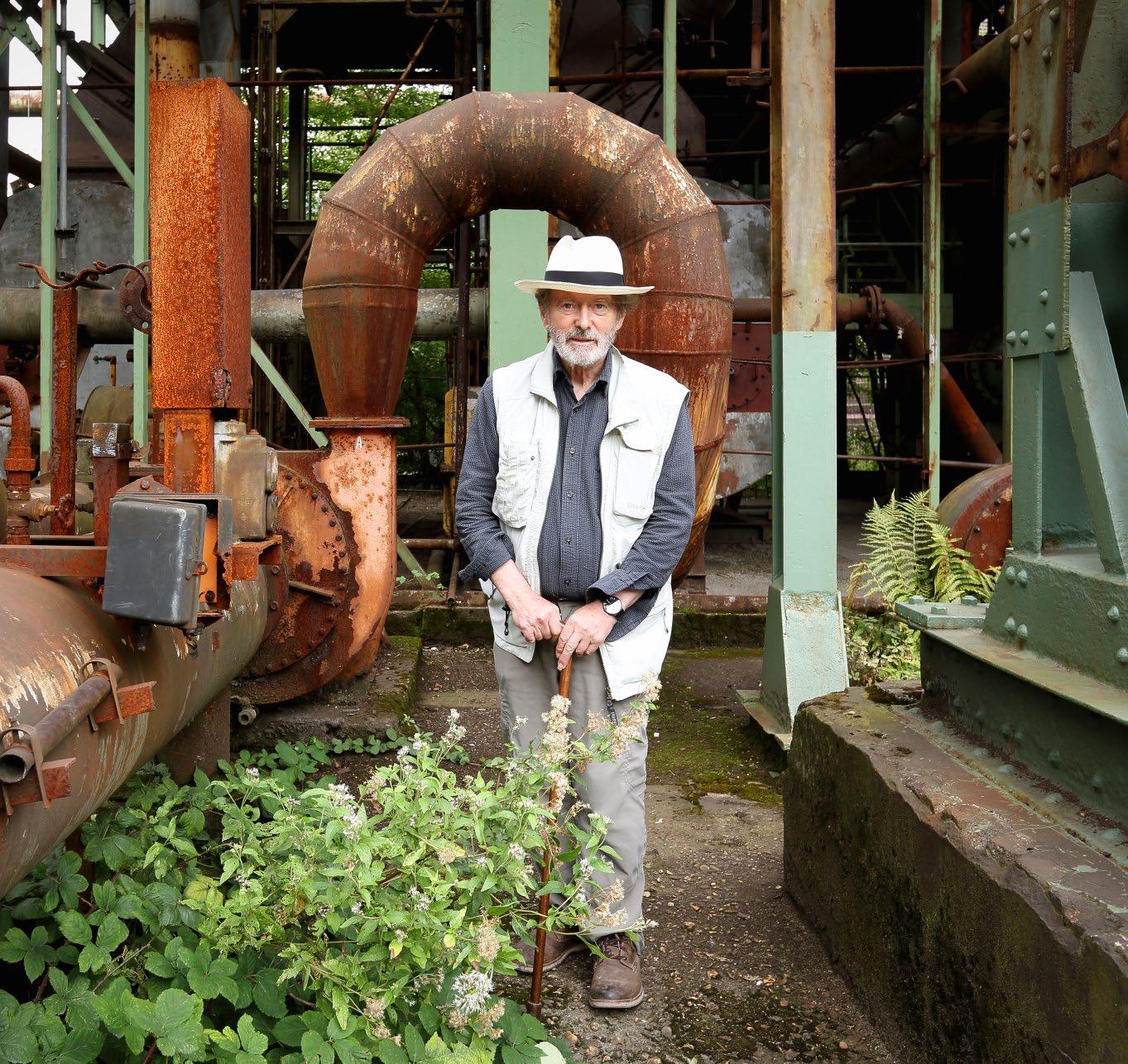
Inge Bisgaard has played a transformative role in the preservation of Greenland’s architectural heritage. Born and raised in Greenland and educated in Copenhagen, she has combined national insight with international expertise to become one of the country’s foremost building conservation specialists. Since 2011, she has served as museum curator at the Greenland National Museum and Archives in Nuuk, where she has led efforts to evaluate, safeguard and communicate Greenland’s built environment.
Over the past decade, Bisgaard has conducted a systematic review of all listed buildings in Greenland with the aim of creating a conservation plan, combining archival research, technical assessment and direct dialogue with local communities. She has travelled extensively, including to Northeast Greenland, to document and classify fragile expedition cabins and hunting stations from the 19th and 20th centuries — structures that embody Greenland’s cultural resilience and environmental adaptation.
Her work spans a broad chronological and typological spectrum, from Cold War military sites at Ikkatteq and Marrak to 18th-century wooden houses, such as those in Ilimanaq restored in collaboration with Realdania Byg. She was closely involved with the inclusion of the Kujataa Greenland: Norse and Inuit Farming at the Edge of the Ice Cap on the UNESCO World Heritage List in 2017, which involved the conservation of 57 historic buildings.
In addition to fieldwork, Bisgaard has authored restoration guidelines that are used by craftspeople, developers and homeowners throughout Greenland, strengthening local capacity for heritage care. She has also curated exhibitions and developed educational programmes to foster awareness, skills, and a renewed culture of craftsmanship in Greenland. Her work bridges academic knowledge and everyday practice, always rooted in community dialogue.
Her recent research addresses the challenges posed by climate change, including the impact of thawing permafrost and the spread of aggressive wood fungi. She advocates for sustainable building traditions, such as the use of untreated local timber and passive construction techniques adapted to Arctic conditions.
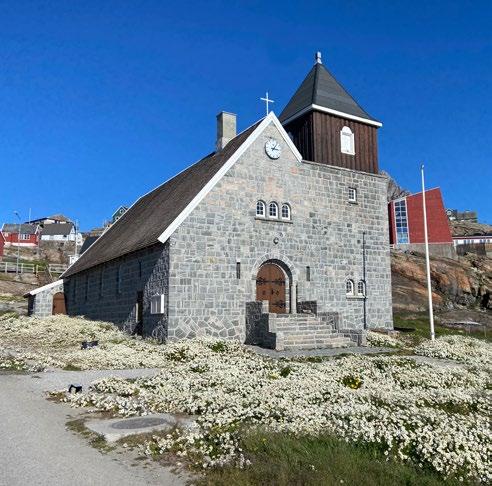
Bisgaard’s contributions have earned national and international recognition. She was named Knight of the Order of Dannebrog by King Frederik X of Denmark in 2024.
“Inge Bisgaard has shown life-long dedication to documenting Greenland’s built heritage, including remote and climate-threatened sites that are often overlooked and lack formal protection ,” the Awards’ Jury emphasised.
“Her persistence in working under extreme Arctic conditions has been critical to preserving fragile heritage across the world’s largest island ,” the Jury noted.
Inge Bisgaard has dedicated her career to preserving Greenland’s built heritage. Through pioneering fieldwork, policy development, and community dialogue, she has worked to preserve both traditional wooden architecture and 20th-century heritage — helping define a national conservation strategy that unites science, craftsmanship, and cultural identity.
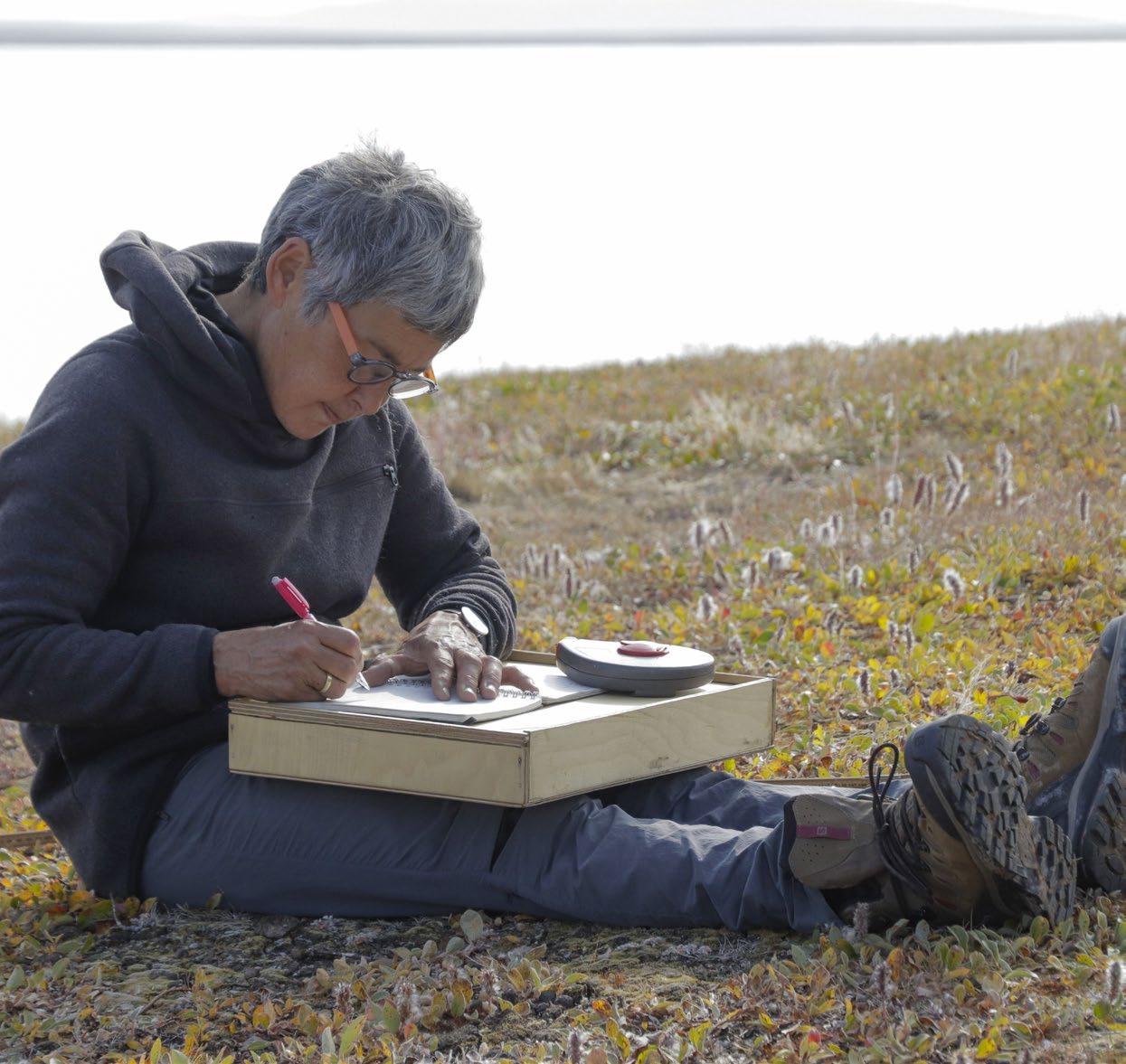
Contact: Inge Bisgaard | Greenland Nationalmuseum & Archives |
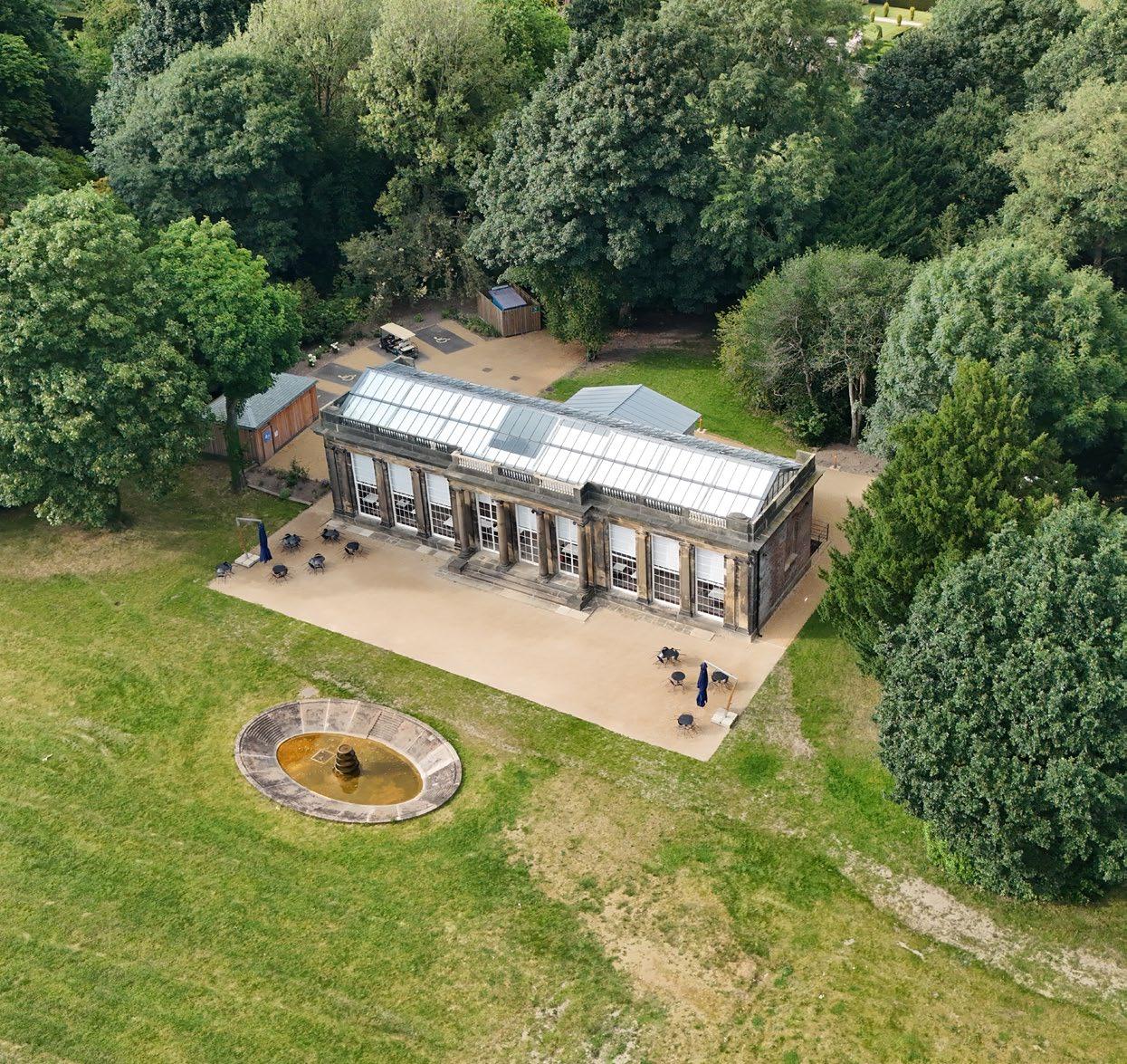
The Europa Nostra Awards were established in 1978 by the European heritage organisation Europa Nostra to recognise outstanding heritage conservation initiatives across Europe. Between 1978 and 2001, over 650 exemplary projects received awards, serving as inspiration and setting high standards in the field of cultural heritage conservation.
In 2002, the European Commission partnered with Europa Nostra to launch the European Heritage Awards / Europa Nostra Awards, co-funded by the EU’s Creative Europe programme. These awards are open to entries from countries participating in the programme, including EU Member States, the three EEA countries (Liechtenstein, Norway, and Iceland), and other associated countries such as Serbia, Georgia, and Ukraine.
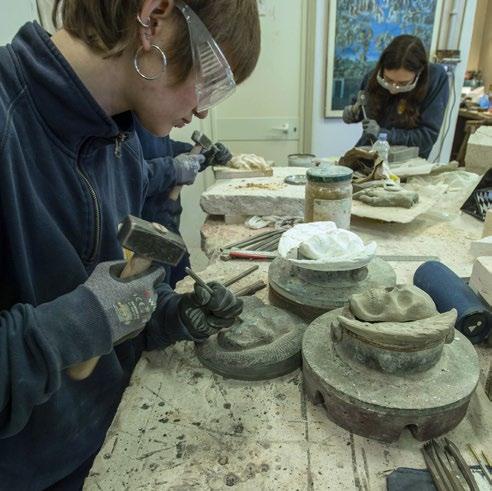
For countries that are members of the Council of Europe but not part of the Creative Europe programme — such as Switzerland, Turkey, and the United Kingdom — Europa Nostra presents separate distinctions, known as the Europa Nostra Awards. These awards acknowledge remarkable heritage accomplishments from these countries. However, recipients of the Europa Nostra Awards are not eligible for the Grand Prix or the Public Choice Award.
While both the European Heritage Awards / Europa Nostra Awards and the Europa Nostra Awards share the same application and evaluation process, they differ in eligibility for certain honours and monetary prizes. This year, three Europa Nostra Awards were granted — to projects from the United Kingdom, Moldova, and, for the very first time, the Holy See.
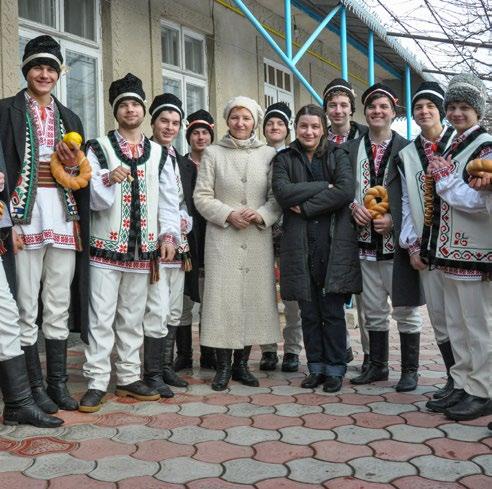
Camellias — flowering plants native to East Asia — were a prized novelty in 18th and 19th-century Europe. At Wentworth Woodhouse, the largest stately home in Britain, The Camellia House was built in 1738 as a tea pavilion, and extended in 1812 to house a rare collection of camellias, now among the oldest surviving in the Western world.
After the estate fell into decline in the 1980s, the Grade II*-listed building stood empty and decaying for over five decades. By the early 2000s, its roof had collapsed, and the plants — some dating to the 1800s — were left exposed to the elements. In 2019, the International Camellia Society confirmed their historic significance, prompting urgent action.
The restoration project of The Camellia House is part of a wider regeneration of the Wentworth Woodhouse site led by the Wentworth Woodhouse Preservation Trust. With £4.5 million in funding from the National Lottery Heritage Fund, £614,000 from Historic England and funds from other charitable partners, the Trust restored The Camellia House as a publicly accessible tearoom and events space.
The design by Donald Insall Associates integrated traditional craftsmanship with low-carbon upgrades: breathable insulation, a rainwater harvesting system, and underfloor heating powered by a ground-source heat pump. The rare camellias remained in situ throughout, protected by bespoke scaffolding and monitored daily by the head gardener.
The restoration project was developed through extensive consultation and technical studies involving conservation architects, plaster specialists, structural engineers and historians. All proposals were reviewed by Historic England and supported by detailed surveys, archaeological studies and material analyses.
The Camellia House now serves as both a public venue and a community anchor. More than 10,000 people have visited it since its opening in 2024, including many from marginalised groups. Community Mondays, a Changing Places facility and step-free access throughout ensure broad inclusion. During restoration, a training programme involving 19 apprentices provided hands-on experience
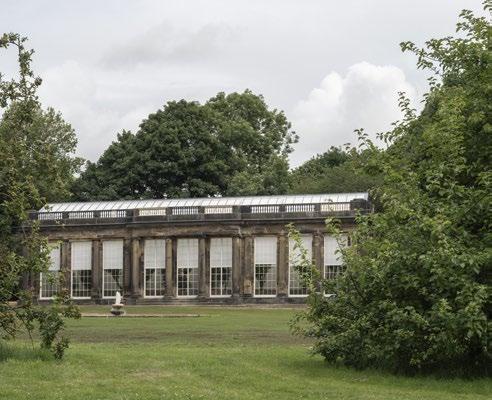
in heritage construction, while a wider outreach effort included schools, universities, and site tours for professional groups.
By preserving its botanical and architectural legacy, the project has removed The Camellia House from Historic England’s ‘Buildings at Risk’ register and laid the groundwork for the long-term revitalisation of the wider site. It offers a transferable model for restoring historic greenhouses and garden buildings — balancing heritage, sustainability and social impact in a meaningful and replicable way.
“This restoration project removed The Camellia House from the heritage at risk register. The revival of a rare camellia collection and the integration of energy-efficient features demonstrate a balanced approach to horticultural, architectural and environmental heritage,” the Awards’ Jury said.
“By restoring cultural and social functions in an area affected by economic hardship, it contributes to regional regeneration through heritage,” the Jury concluded.
The Camellia House at Wentworth Woodhouse, derelict for 50 years, has been transformed into a public tearoom and heritage venue. The restoration protects rare camellia plants while fostering sustainability, community engagement, training, and inclusive access in South Yorkshire.
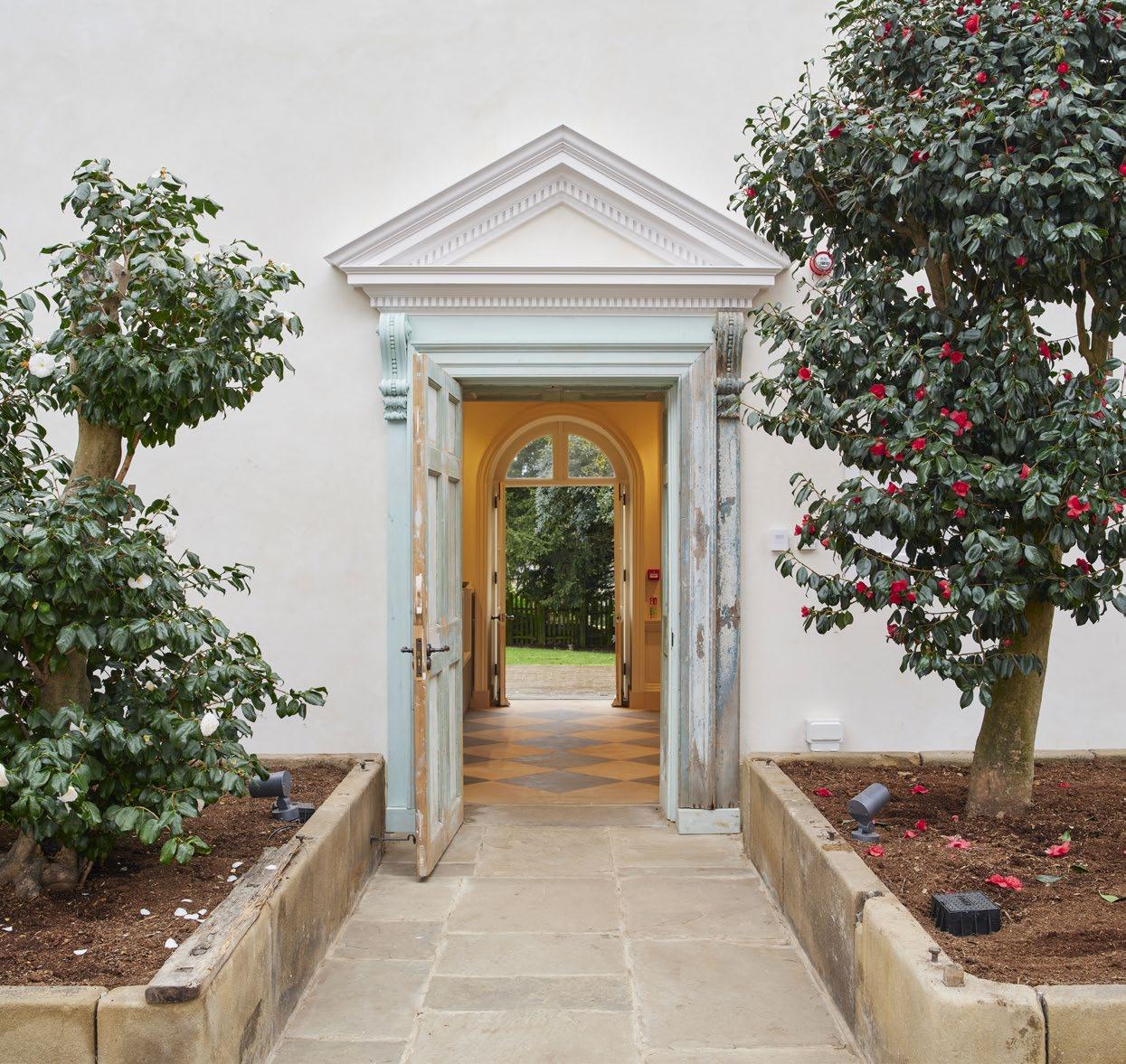
Established in 2023 by the Fabric of Saint Peter (“La Fabbrica di San Pietro”) in collaboration with the Fratelli tutti Foundation, the School of Arts and Crafts marks a revival of holistic, intergenerational training at the heart of the Vatican. Building on the legacy of the 18th-century Studio Pontificio, the school unites centuries-old crafts with contemporary educational practice.
Located within Vatican City, the school welcomes 20 young people (aged 18 to 25) in each cohort, including international participants. It is supported by a network of skilled instructors and the renowned “sanpietrini” — the master artisans who maintain Saint Peter’s Basilica. The ongoing programme offers full-time, tuition-free training in stonemasonry, decorative plasterwork, carpentry, and mosaic-work. Courses run for six months, and all students receive accommodation and meals, living communally in Vatican apartments for the duration of their studies.
The training programme is rooted in the conviction that heritage skills must develop the spirit in addition to the hand. It blends handson, experiential learning with studies in art history, architecture, and theology. Of the 600 hours per course, over two-thirds are spent working in the Fabric’s workshops, in close contact with the “sanpietrini”. This intergenerational exchange is central: experienced artisans model both technical skills and the values of humility, service, and fraternity, fostering an environment where tradition is transmitted “from hand to hand” and from one generation to the next.
A distinctive aspect of the School of Arts and Crafts is its “educating community”: students live and learn together in communal accommodation, while learning directly from teachers, artisans and staff during workshops and classes. Communal living encourages peer learning, dialogue, and mutual support, in a favourable environment for all students, also those with learning difficulties, including mentorship and tailored evaluation methods. Reflection and group discussions are built into the programme, nurturing personal and spiritual growth in addition to instilling core technical proficiency.
Talented graduates who best meet the criteria of the Fabric of Saint Peter’s projects will have the opportunity to be selected
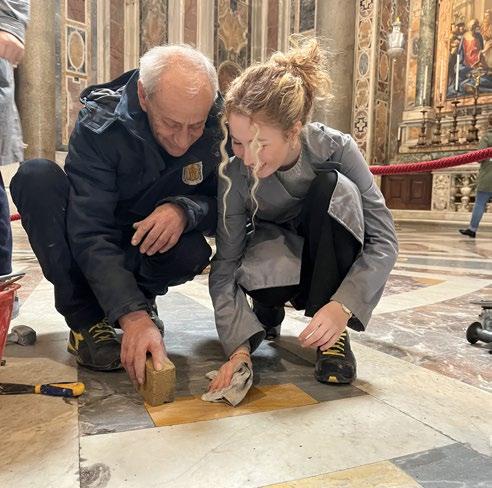
if required. Alumni are also encouraged to remain connected to the school community. Although firmly rooted in the Vatican, the school’s model is already attracting interest from other heritage sites in Europe, demonstrating its potential for transferability and wider impact.
“The School of Arts and Crafts of the Fabric of Saint Peter safeguards European cultural heritage through its holistic programme, combining craft training with academic and spiritual development in an environment open to diverse students at no charge,” the Awards’ Jury stated. “The creation of lasting bonds among participants and the potential for progression to employment or further education are notable strengths ,” the Jury commented.
The School of Arts and Crafts, established by the Fabric of Saint Peter and the Fratelli tutti Foundation, offers full-time, tuition-free training in heritage crafts to young people. It revives centuries-old traditions while fostering community, spiritual growth, and hands-on learning in the heart of the Vatican.
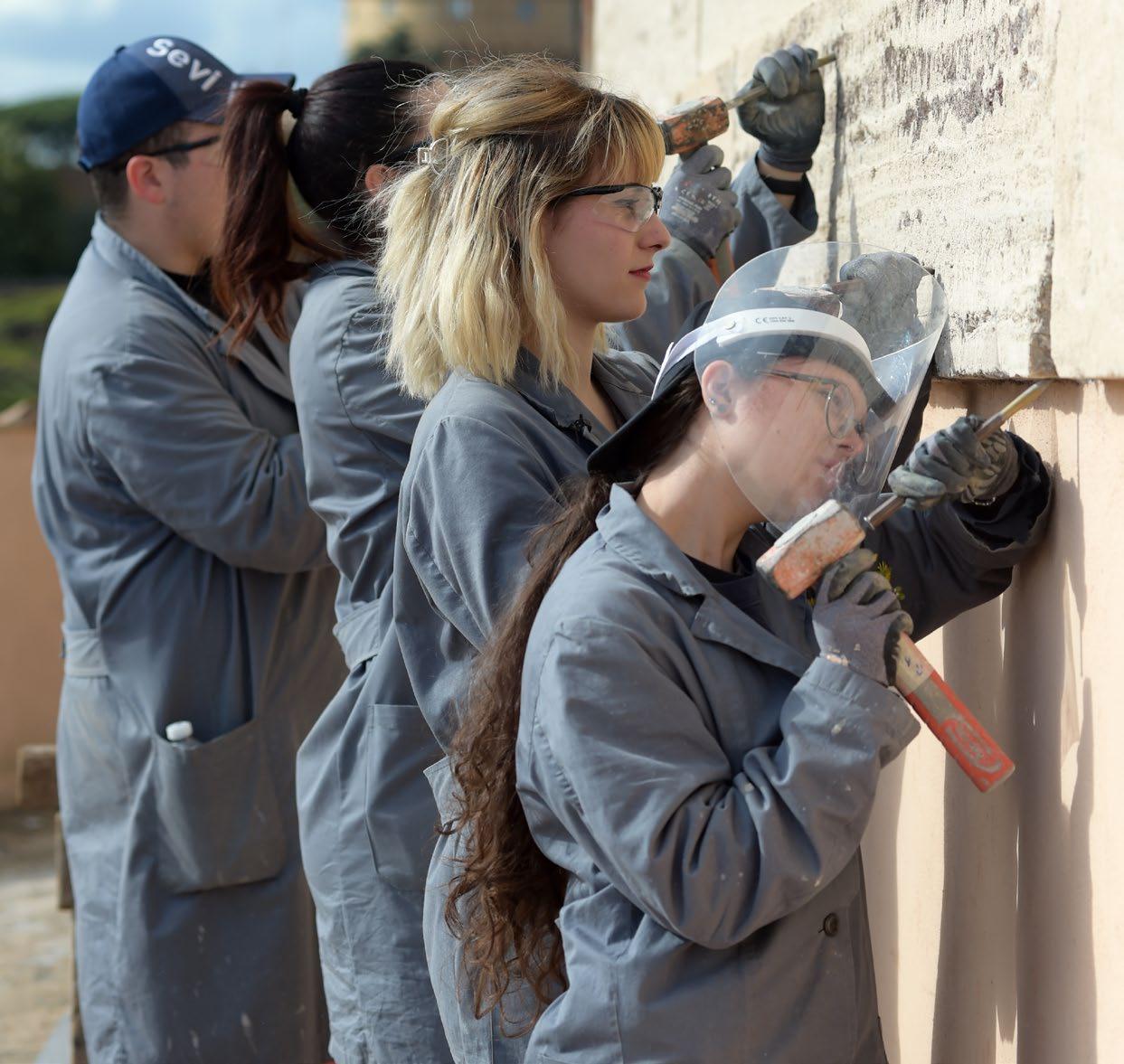
Contact: Gloria Amaduzzi | School of Arts and Crafts of the Fabric of Saint Peter in the Vatican scuola.artiemestieri@fsp.va | www.fondazionefratellitutti.org/en/school-of-arts-and-trades/
Varvara Buzilă, born in 1955 near the archaeological site of Orheiul Vechi, has devoted her life to the protection and revitalisation of Moldova’s intangible cultural heritage. As scientific coordinator at the National Museum of Ethnography and Natural History in Chișinău, her career spans over four decades of fieldwork, academic leadership, community engagement, and legislative impact.
Her ethnographic research covers more than 850 settlements in the Republic of Moldova and dozens more in Romania and Ukraine. She has authored nine monographs, over 75 academic articles, and hundreds of publications aimed at the general public. Her approach integrates scholarly rigour with accessibility, connecting museum practice with lived community traditions. Her cooperation with long-running TV programme Tezaur, with more than 600 episodes, has helped anchor cultural heritage in the everyday consciousness of Moldovans across generations.
Varvara Buzilă’s work was central to Moldova’s legislative framework for heritage. As President of the National Commission for the Safeguarding of Intangible Cultural Heritage (2009-2019), she helped draft landmark laws on the protection of movable and intangible cultural heritage. She oversaw Moldova’s National Inventory and coordinated five nomination files for UNESCO, resulting in four inscriptions on the intangible heritage lists and one entry on the Tentative List.
An active mentor and educator, Buzilă has taught at several universities, supervised masters and doctoral theses, and led training camps and scientific expeditions across Moldova. She has maintained close contact with local communities, regularly travelling to rural areas to support heritage bearers and promote intergenerational transmission. In her work with women’s groups, she has helped revive traditional sewing and weaving practices, reinforcing cultural identity, while fostering social and economic resilience.
Varvara Buzilă’s contributions also extend into sustainability, advising artisans on the use of local and ecological materials, and promoting cultural tourism rooted in authenticity. She has launched

campaigns encouraging citizens to donate cultural items to museums, enriching public collections by more than 1,800 artefacts. Her innovative field methods — from vector boards to plasticine bread models — demonstrate her talent for making intangible heritage visible, tangible, and transferable.
Known nationally as an “encyclopaedia of the nation,” Buzilă is a reference point for both heritage professionals and the broader public. Her impact is visible not only in legislation and archives, but in villages, schools, and public spaces where culture continues to live, evolve and inspire.
“Over four decades, Varvara Buzilă has worked tirelessly to safeguard Moldova’s cultural heritage — both tangible and intangible — often under challenging conditions with limited institutional support ,” the Awards’ Jury highlighted.
“By combining academic research with grassroots action, she shaped national guidelines and played an instrumental role in submitting nominations of Moldova’s heritage to UNESCO,” the Jury noted.
Varvara Buzilă has dedicated over 45 years to safeguarding Moldova’s intangible cultural heritage. Through research, legislation, education, and public engagement, she has reshaped national awareness and achieved international recognition — becoming a leading voice for cultural identity and transmission in Moldova and beyond.
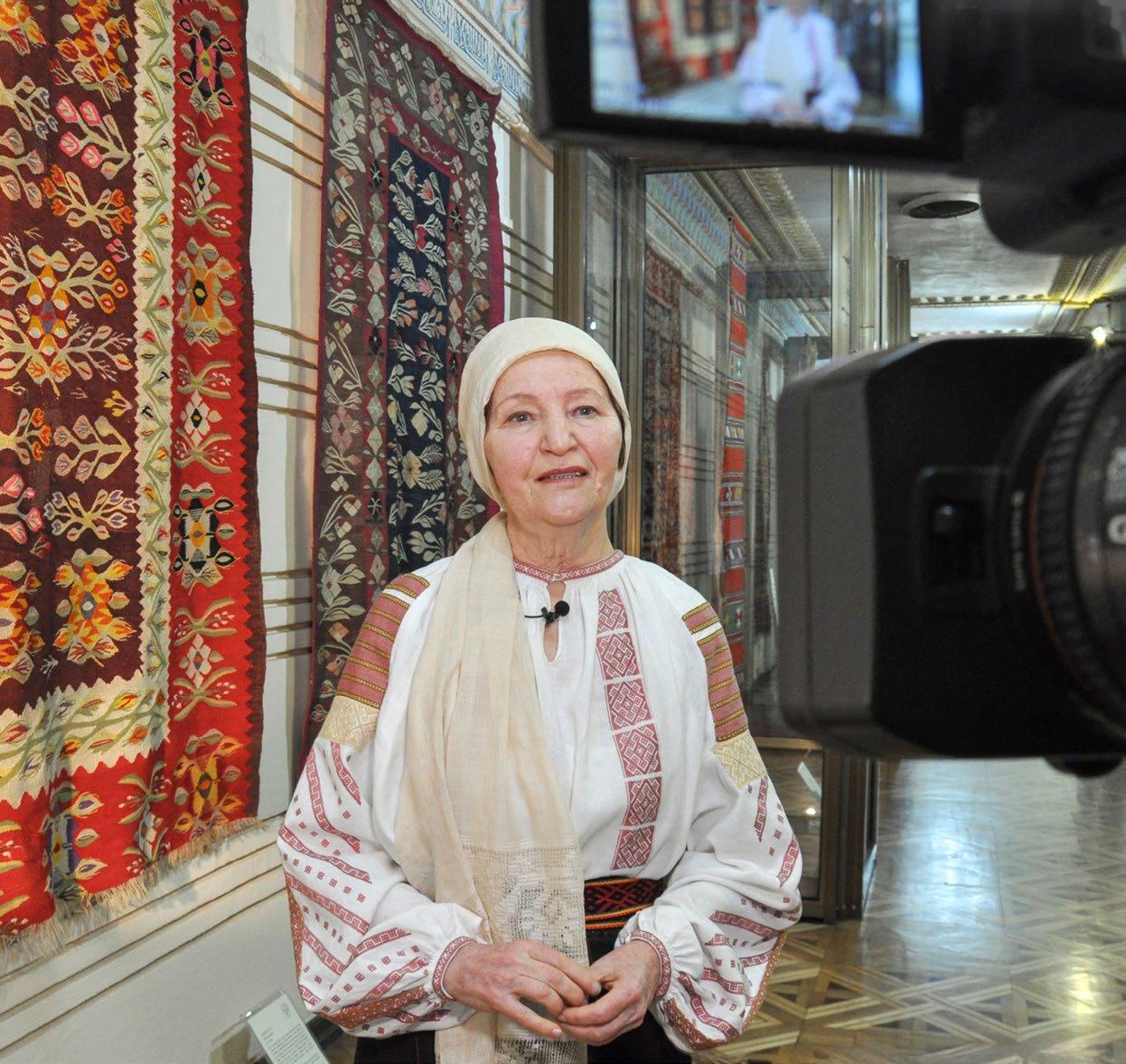
In addition to the winners, a number of outstanding entries were shortlisted by the Jury. These projects reflect excellence across all award categories — from Conservation & Adaptive Reuse to Research, Education, Training and Skills, Citizen Engagement & Awareness-Raising, and Heritage Champions. Though not selected for an award this year, each shortlisted project demonstrates remarkable dedication, quality, and impact, and deserves recognition as part of Europe’s vibrant and diverse heritage community.
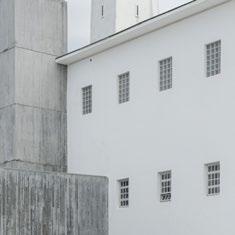
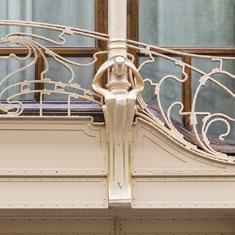
CATEGORY CONSERVATION & ADAPTIVE REUSE
Church of St Rocco in Draguć — multidisciplinary research, conservation and restoration | Croatia
Restoration of the Monastery of San Benedetto Po | Italy
Restoration and conservation of the Convent Garden of the Most Holy Redeemer | Italy
The former Turkish Bath of Iasi — International Contemporary Arts Center Romania
Recovery of irrigation channel of Aynadamar (Granada) | Spain
Restoration of the Fallen Arch of the Mantible Bridge | Spain
Malmo Stadsteater Hippodromen | Sweden
Restoration Rössli Trogen | Switzerland*
CATEGORY RESEARCH
The Cypriot Fiddler | Cyprus
The Kassandra Project — An Integrated Decision Support System to manage the effects of Climate Change in historic environments | Italy
Preserving the Past for the Future | Serbia
Research and development of a new metal joints system aimed at the rehabilitation of structures and its application to the Arenzana historic bridge | Spain
CATEGORY EDUCATION, TRAINING & SKILLS
Revival of Sanna language: Empowering Heritage through Language Preservation and Community Engagement | Cyprus
Spinner of living heritage | Finland
HIMASS — International Summer School on Historic Masonry Structures | Italy
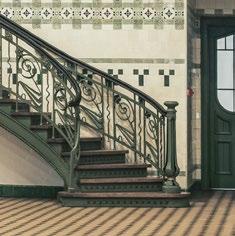
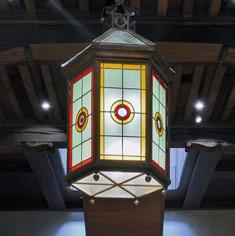
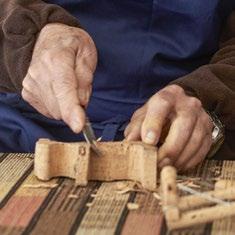
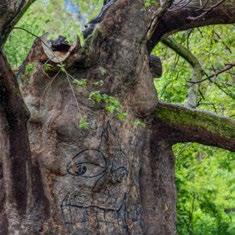
CATEGORY CITIZENS’ ENGAGEMENT & AWARENESS-RAISING
‘The Garden of the Present’: Revalorisation and Accessibility of Saint Godelieve’s Abbey in Bruges, Flanders, Belgium | Belgium
Dajak — A traditional river boat and window to the past becomes a link to the future Bosnia and Herzegovina
Croatian Coral Center Zlarin | Croatia
Bere Island Projects Group: Bere Island Community Radio | Ireland
No Mafia Memorial | Italy
Addiopizzo Travel & MuST23. Mafia-free tourism for a Sustainable Future | Italy
Motorola’s Digital Inclusion Initiative: Ladin | Italy
2025 — the decade of the reborn culture heritage landmark — Luznava manor —
driving force of sustainable development on the most Eastern border of EU | Latvia
Industrial Tourism of São João da Madeira | Portugal
Spotlight Heritage Timisoara | Romania
#SalvaPeironcely10 | Spain
La-Ponte: Research Centre and Ecomuseum | Spain
CATEGORY HERITAGE CHAMPIONS
Heritage Champion Boris Dubovik | Estonia
Irish Community Archive Network | Ireland
Dedication to Cultural Heritage: Koç University Vehbi Koç Ankara Studies Research Center (VEKAM) | Turkey*
Each year, the winners of the European Heritage Awards / Europa Nostra Awards are selected by the members of the Selection Committees and the Heritage Awards Jury. These professionals from across Europe kindly volunteer their time and expertise to carefully evaluate every submission.
Together, they bring an exceptional range of knowledge and skills — from archaeology to architecture, from conservation to intangible heritage, from materials science to education, museum practice, linguistics and more. Thanks to this breadth of experience and their interdisciplinary perspective, each entry is reviewed with care, dedication and fairness. What unites them all is not only their professional expertise, but also their deep commitment to the values of cultural heritage. We are truly grateful for their insights, integrity and generosity.
Several heritage young professionals once again joined the Selection Committees for the 2025 edition of the Awards.
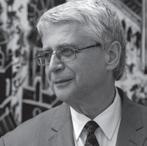
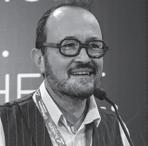

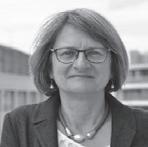
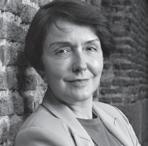
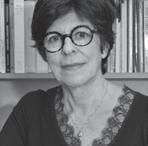
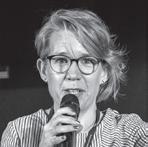

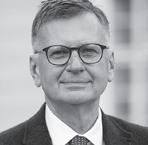


HERITAGE AWARDS JURY
Jacek Purchla PL Chair
Pavlos Chatzigrigoriou GR
Elena Dimitrova BG
Johanna Leissner DE
Natalia Moussienko UA
Sabine Nemec-Piquet CH
Sara Robertson UK
Jermina Stanojev RS
Petr Svoboda CZ
Eugen Vaida RO
Alessandra Vittorini IT

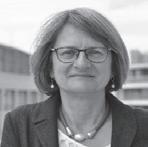

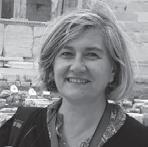

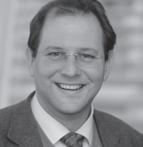
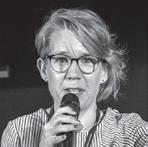



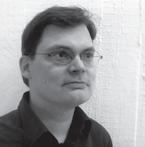
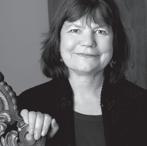


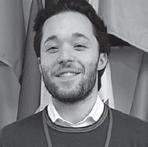

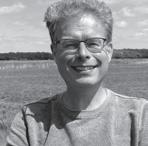
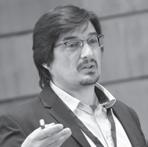
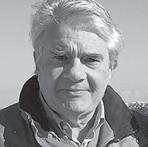
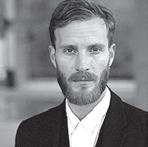

Eugen Vaida RO Chair
Alessandra Vittorini IT Vice-Chair
Elif Aydın TR Youth Ambassador
Paul Dujardin BE
Susana Gómez-Martínez PT
Jonas Malmberg FI
Dirk Michiel Purmer NL
Johanna Leissner DE Chair
Elena Dimitrova BG Vice-Chair
Riin Alatalu EE
Antoine Doucet FR
Christian Hanus AU
Jasna Popović ES/RS Youth Ambassador
Alex Torpiano MT
Sara Robertson UK Chair
Jermina Stanojev RS/BE Vice-Chair
Victor Boye Julebæk DK
Marine Mizandari GE
Charles Personnaz FR
Lorenzo Venezia IT Youth Ambassador
Tina Wik SE
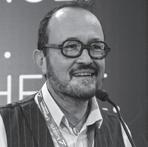
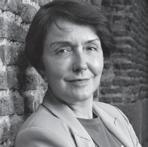
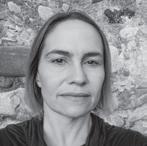
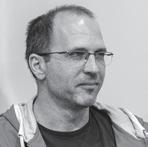




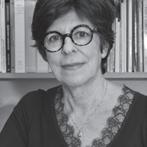
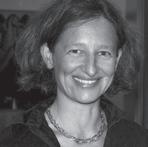


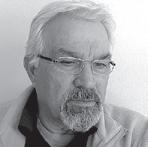

CITIZENS’ ENGAGEMENT & AWARENESS-RAISING
Pavlos Chatzigrigoriou GR Chair
Natalia Moussienko UA Vice-Chair
Flora Bacquelaine Vidal de Llobatera ES
Árpád Boczen HU
Davida de Hond NL
Simon O’Connor IE
Irene Reyes Suero ES/FR Youth Ambassador
HERITAGE CHAMPIONS
Petr Svoboda CZ Chair
Sabine Nemec-Piguet CH Vice-Chair
Gaiané Casnati IT/AR
Léa Guillemant FR Youth Ambassador
Ole Rikard Høisæther NO
Sadi Petrela AL
Agni Petridou CY
Before being submitted to the Heritage Awards Jury for final consideration, each entry shortlisted for the European Heritage Awards / Europa Nostra Awards by the Selection Committees is evaluated by independent heritage experts from across Europe.
These experts conduct on-site visits and/or interviews with the entrants and subsequently submit detailed assessment reports to the Jury.
Assessor
Country
Benoît Delaey Belgium
Dries Vanhove Belgium
Koen Van Balen Belgium
Martine Vermeire Belgium
Aida Bičakčić Bosnia and Herzegovina
Angel Burov Bulgaria
Prof. Franko Ćorić Croatia
Dr Angel Nicolaou -Konnari Cyprus
Glafcos Constantinides Cyprus
Mogens Morgen Denmark
Oliver Orro Estonia
Mrs Tiina Teittinen Finland
Stefan Wessman Finland
Gabor Mester de Parajd France
Claus Peter Echter Germany
Hans-Rudolf Meier Germany
Uwe Koch Germany
Mr. Dimitris Leventis Greece
Dr. Runar Leifsson Iceland
Benedict Schlepper-Connolly Ireland
Jennie Ryan Ireland
Simon O’Connor Ireland
Alberta Campitelli Italy
Antonella Mott Italy
Cristina Loglio Italy
Cristina Vannini Italy
Francesco Trovò Italy
Luca Bonora Italy
Maria Grazia Filetici Italy
Their diverse expertise — spanning a wide range of disciplines — ensures the integrity and excellence of the Awards process and provides essential input for the Jury’s deliberations.
We express our sincere gratitude to each of the local assessors for generously contributing their time, knowledge, and careful judgement in the evaluation of the shortlisted entries.
Giovanni Zenucchini Italy
Rossana Bettinelli Italy
Silvia Costa Italy
Arturs Lapins Latvia
John Beauchamp Poland
Katarzyna Jagodzińska Poland
Anísio Salazar d’Eça Costa Franco Portugal
Filipa Cruz Portugal
Helena Gonçalves Pinto Portugal
Teresa Tamen Portugal
Andrei Prohin Moldova
Constantin Gorcea Romania
Ioana Irina Iamandescu Romania
Mihai Moldovan Romania
Pirvu Ionica Romania
Anđela Jovanović Serbia
Katarina Živanović Serbia
Milena Jokanović Serbia
Antonio De La Peña Sabatés Spain
José Ramírez del Río Spain
Laína González Cores Spain
Luis Cueto Spain
Raquel Alvarez Valdeita Spain
Rosa Martínez Segarra Spain
Victor Antona Spain
Gunilla Svensson Sweden
René Koelliker Switzerland
Yiğit Ozar Turkey
Lesia Voroniuk Ukraine
Ellis Scott United Kingdom
2–3
Page 5
8–9
10–11
12–13
14–15
16–17
18–19
20–21
22–23
24–25
26–27
28–29
30–31
32–33
34–35
36–37
38 –39
40–41
42–43
44–45
46–47
48–49
CREDITS (left to right)
© Stupendastic I © Odeuropa 2023
© Maritime Archaeological Society of Finland | © Rene Larsen
© European Commission, 2025 I Portrait supplied by Cecilia Bartoli
© Mystetskyi Arsenal, 2023, photo by Oleksandr Popenko
© Gerold Eßer, Bundesdenkmalamt
© Stijn Bollaert | @ Georges De Kinder
© Gilles van den Abeele
© Nicosia Municipality
© Yiannis Hadjiaslanis I © Christina Vardali
© Employees of EC1 Lodz – City of Culture
© Frederico Martinho, 2025
© DG Patrimonio Cultural | © Stupendastic
© Toerisme Vlaamse Ardennen – David Samyn
© Odeuropa 2023
© Julian Post-Melby, Museum of Cultural History
© Andreas Nilsson, Innlandet County Municipality
© Borja Franco Llopis, 2025 | © Elena Paulino Montero, 2025
© European Heritage Volunteers, 2025
© DGARTES/Global Stills/Vasco Célio, 2025
© ASTRA Museum, Silviu loan Popa, 2025
© The Monuments of Board of the Slovak Republic
© Save Bedechka Association (photos courtesy of Joro Hadzhiev and Parvan Simeonov)
© Maritime Archaeological Society of Finland
• Courtesy of Rebâtir Notre-Dame de Paris
© National Museum of the History of Ukraine (MIST)
• Małopolska Culture Heritage Days in Czchów, 2019, photo. K. Schubert. Małopolska Institute of Culture in Kraków, CC By SA 4.0
• Małopolska Culture Heritage Days in Regulice, 2021, photo. K. Schubert. Małopolska Institute of Culture in Kraków, CC By SA 4.0
50–51
52–53
© Catarina Gralheiro, 2024
© Aleksandar Krstović, 2023
54–55 © Casa Batlló
56–57
58–59
61–62
62–63
© Art Arsenal Community NGO, 2024, photo by Roman Shalamov
© Art Arsenal Community NGO, 2024, photo by Roman Shalamov
© Michael Latz 2006 | Prof. em. Peter Latz, 2014 © Thomas Berns
© Nka | © Erik Jochumsen
© Aaron O’Roarty (NE Drones) | © Fabbrica di San Pietro
© Ghenadie Popescu
64–65 © Damian Griffiths | © Adrian Lambert
66–67
© Fabbrica di San Pietro
68–69 © Ghenadie Popescu | © Irina Ropot
70–71 © Frederico Martinho, 2025 | © Gilles van den Abeele
© Employees of EC1 Lodz – City of Culture | © Georges De Kinder
© DGARTES/Global Stills/Vasco Célio, 2025 | © Save Bedechka Association (photos courtesy of Joro Hadzhiev and Parvan Simeonov)
72–74
• Portraits provided by the Selection Committee and Heritage Awards
Jury Members | except Davida de Hond: © Cindy Baar/CODA Museum
europanostra.org europeanheritageawards.eu ec.europa.eu/programmes/creative-europe